مستقبل ما بعد الاستعمار
Postcolonial Futurity
«المستقبل للأطفال»
‘The Future is for Children’
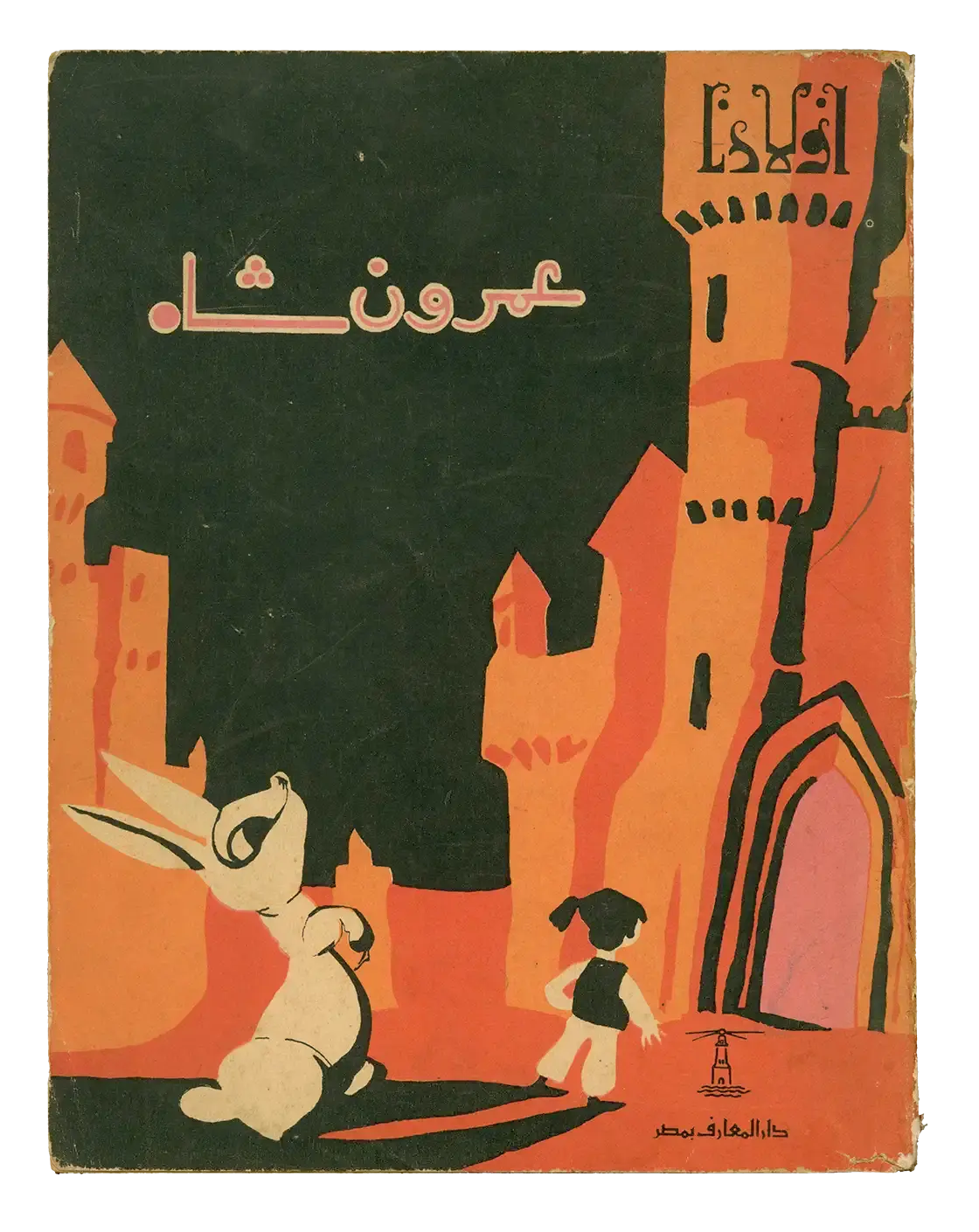

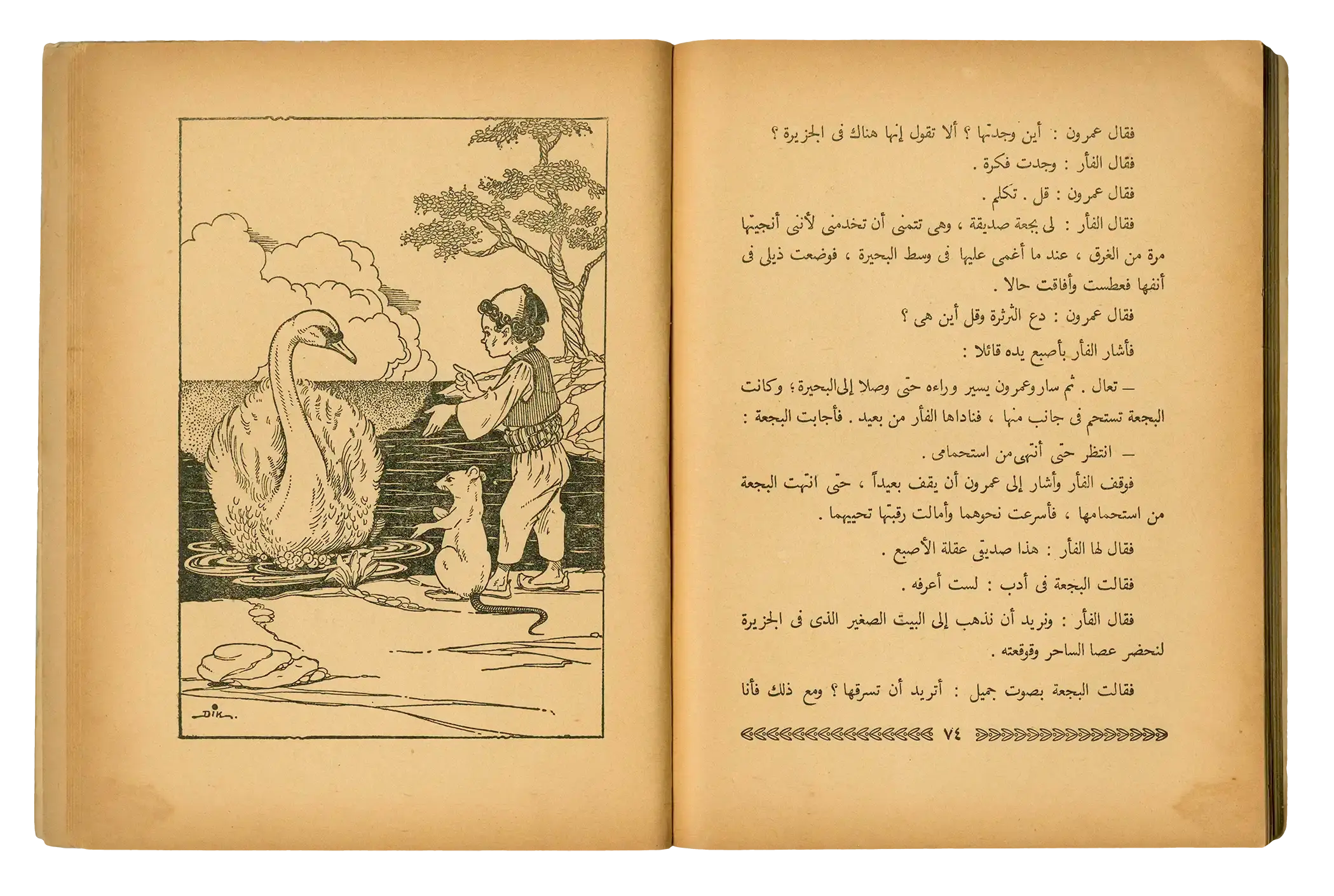
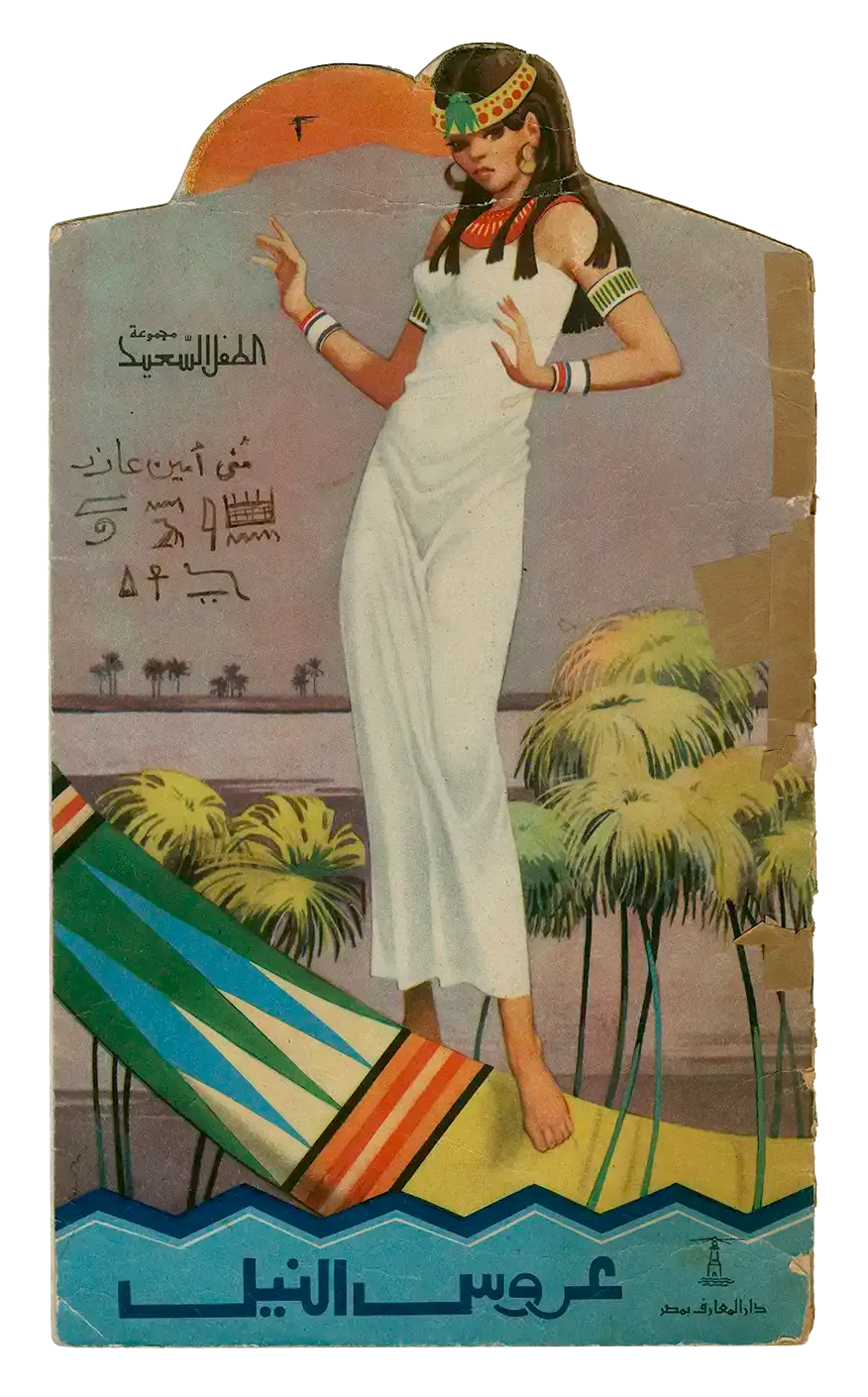
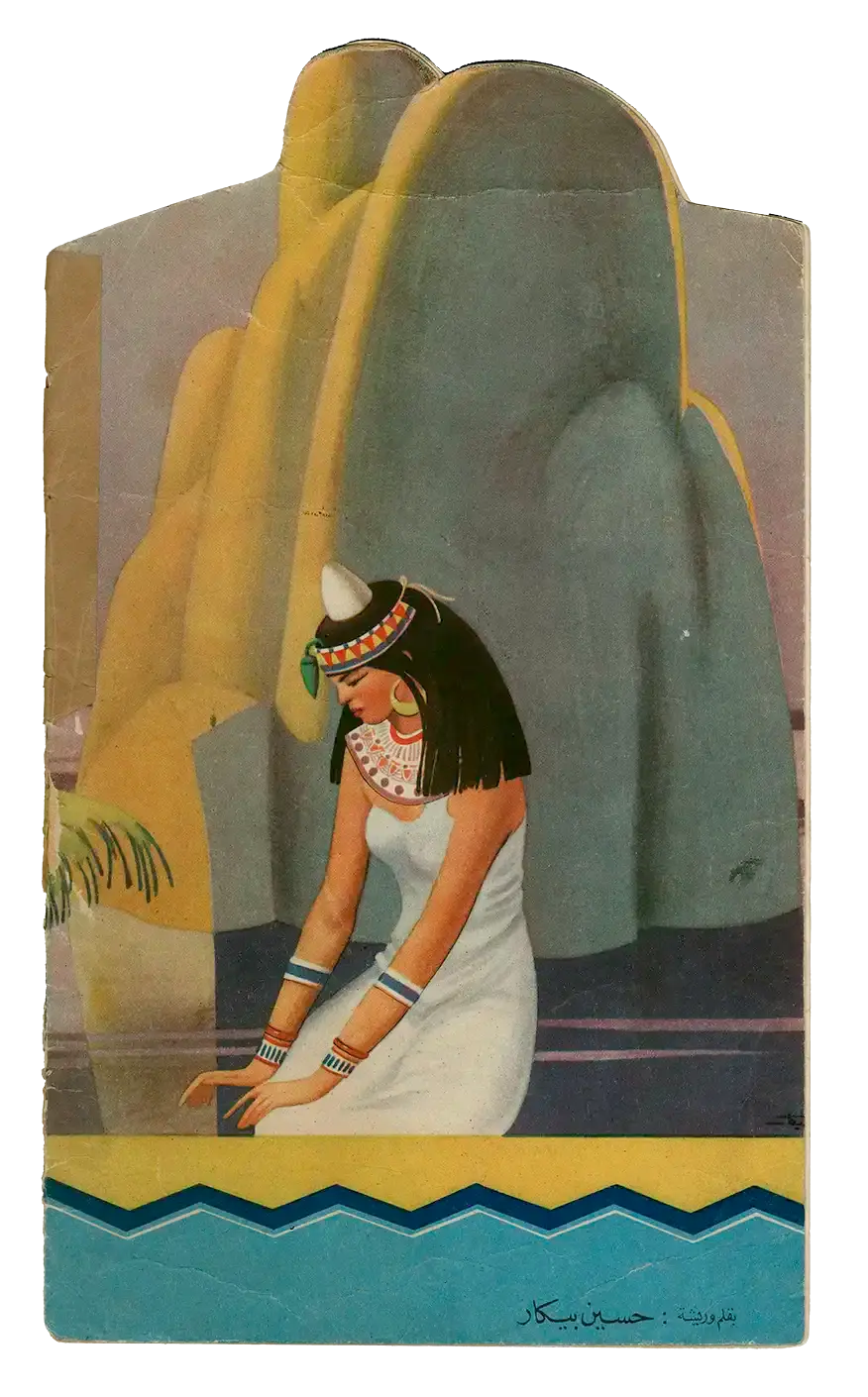
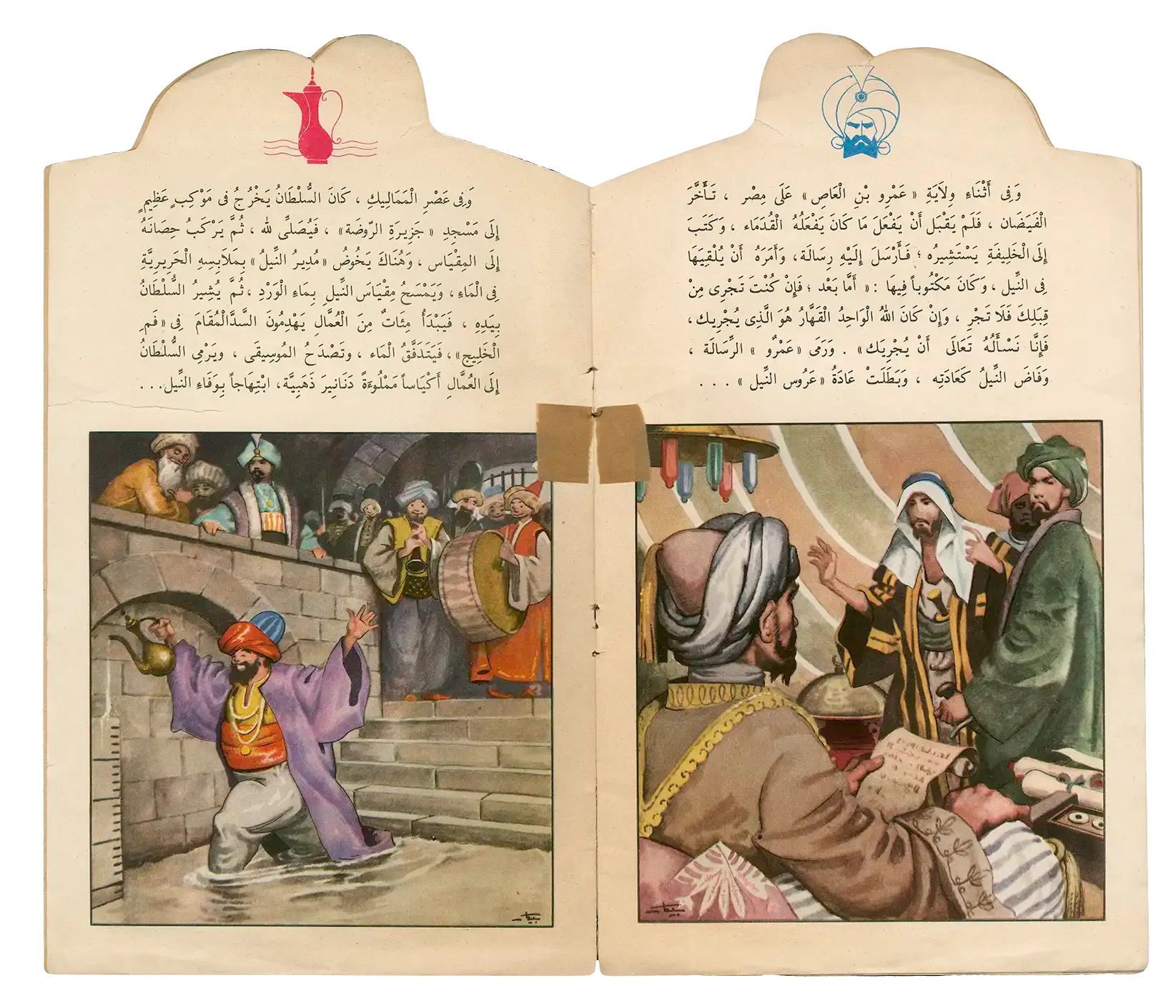
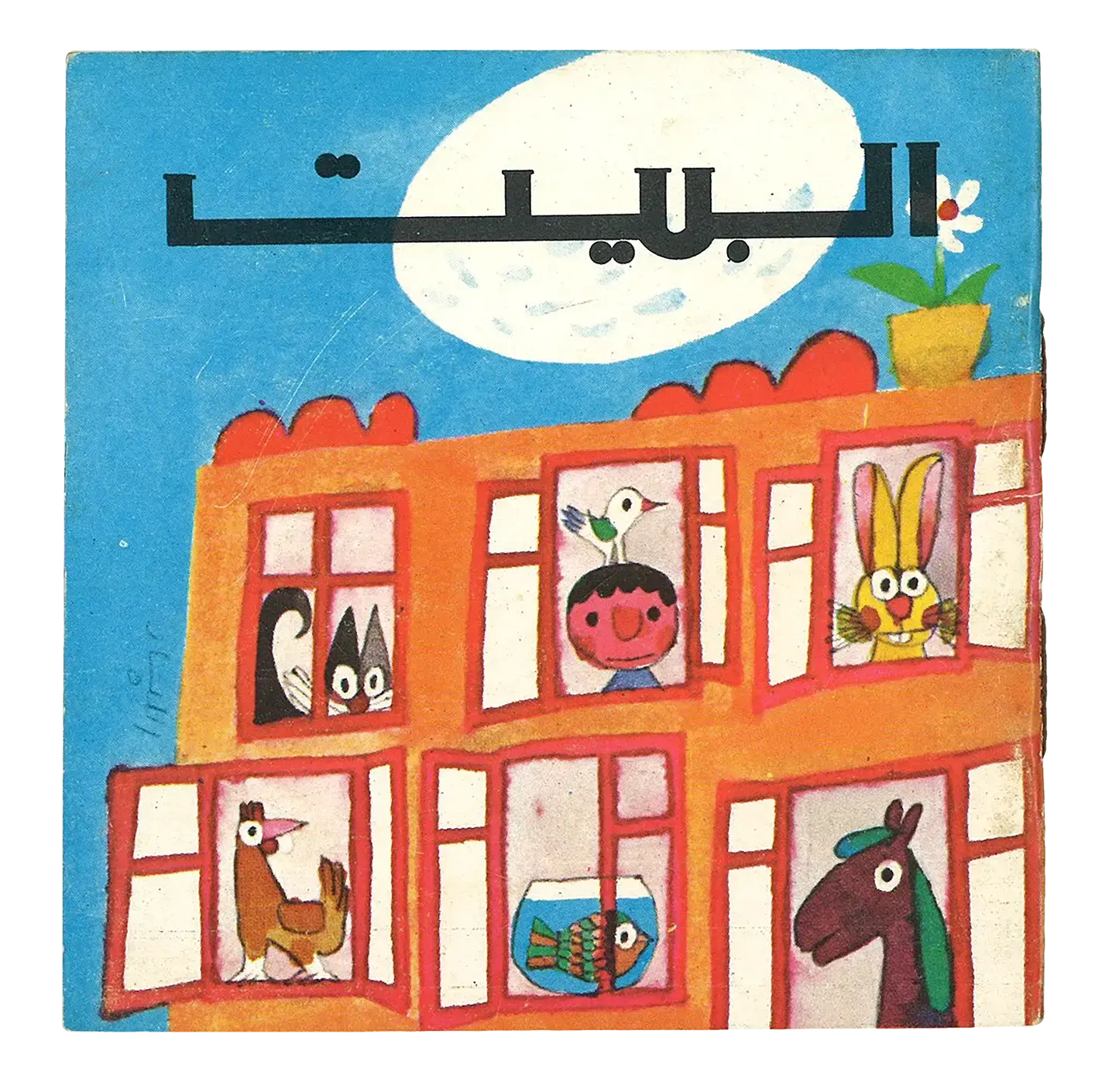

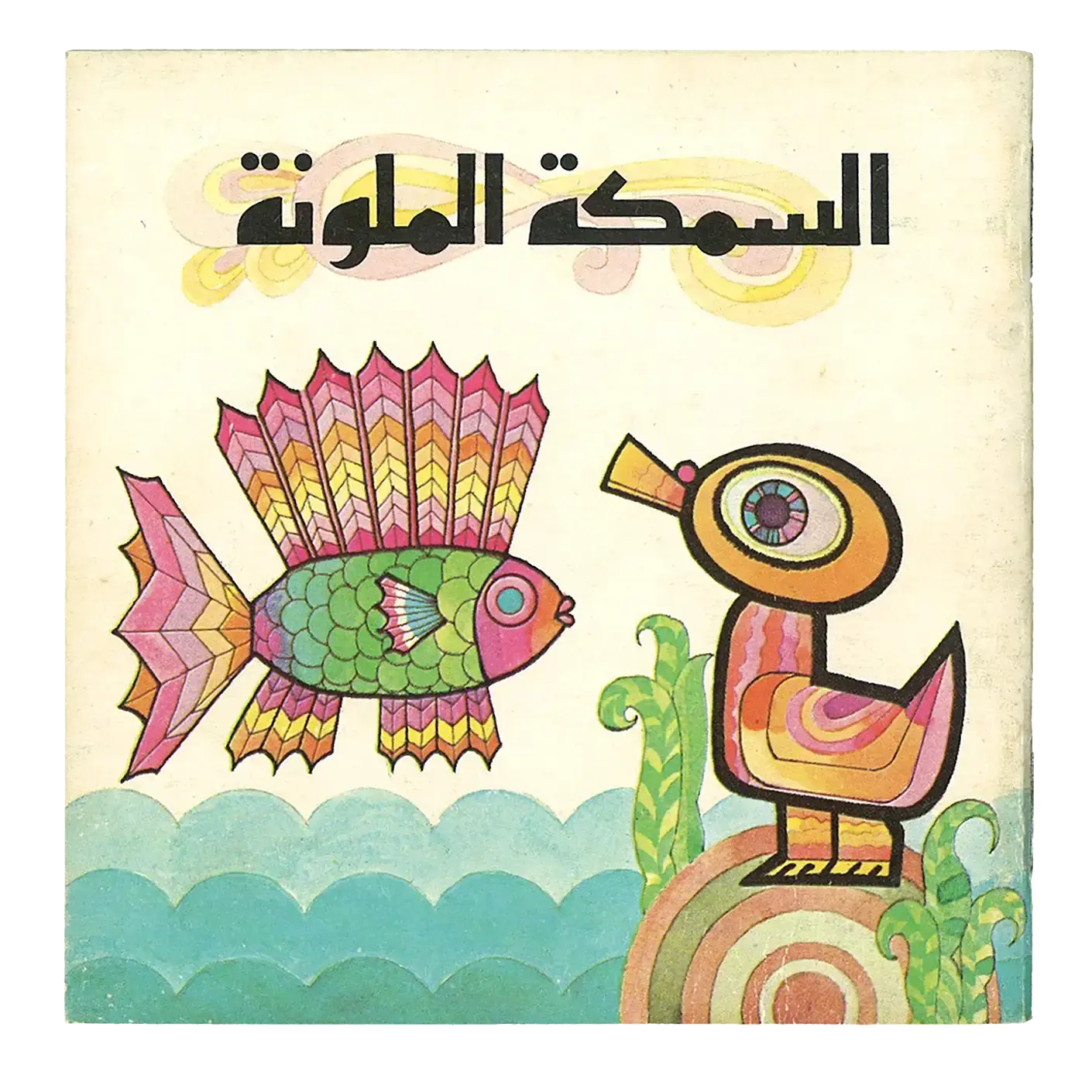
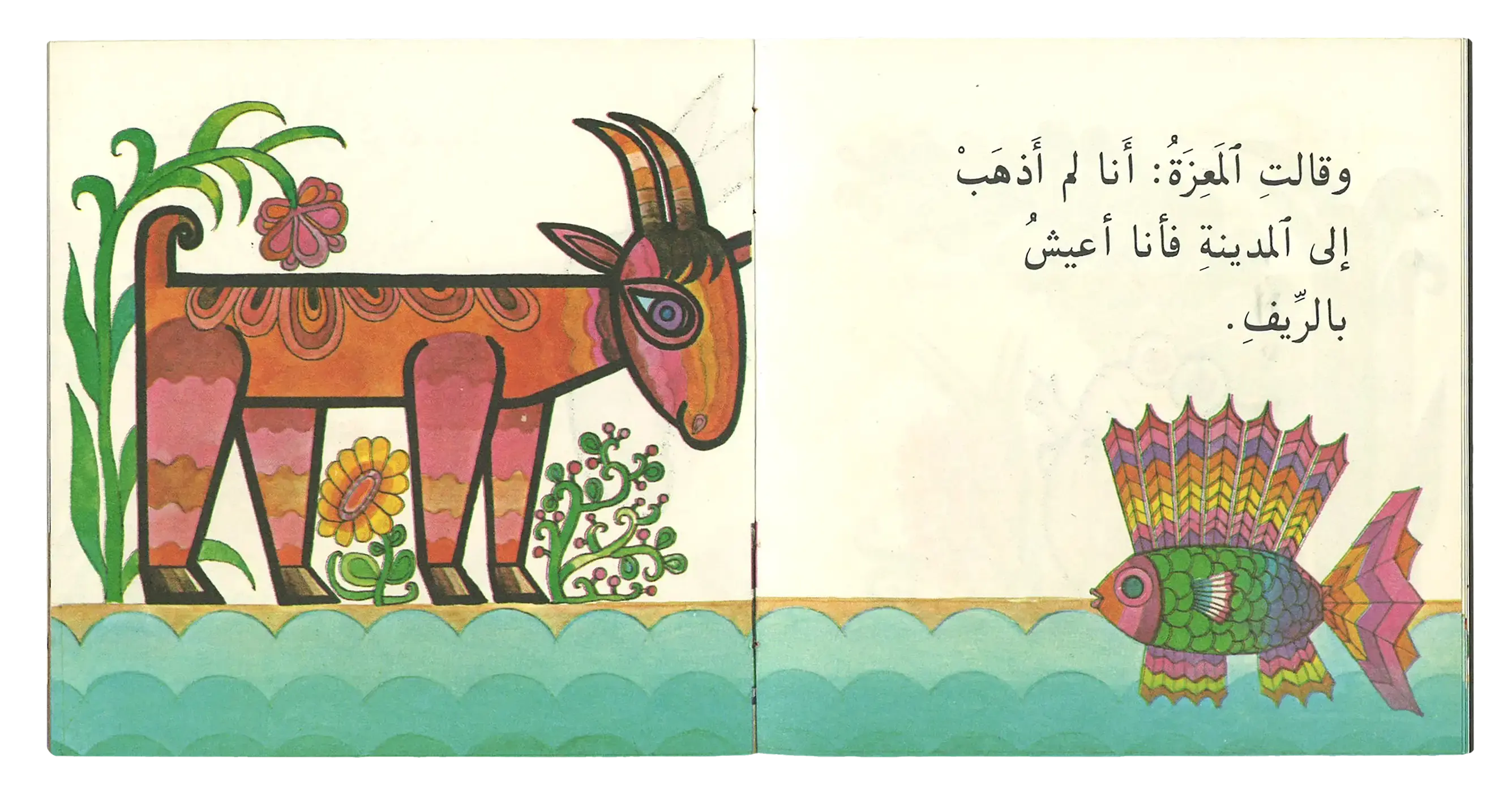
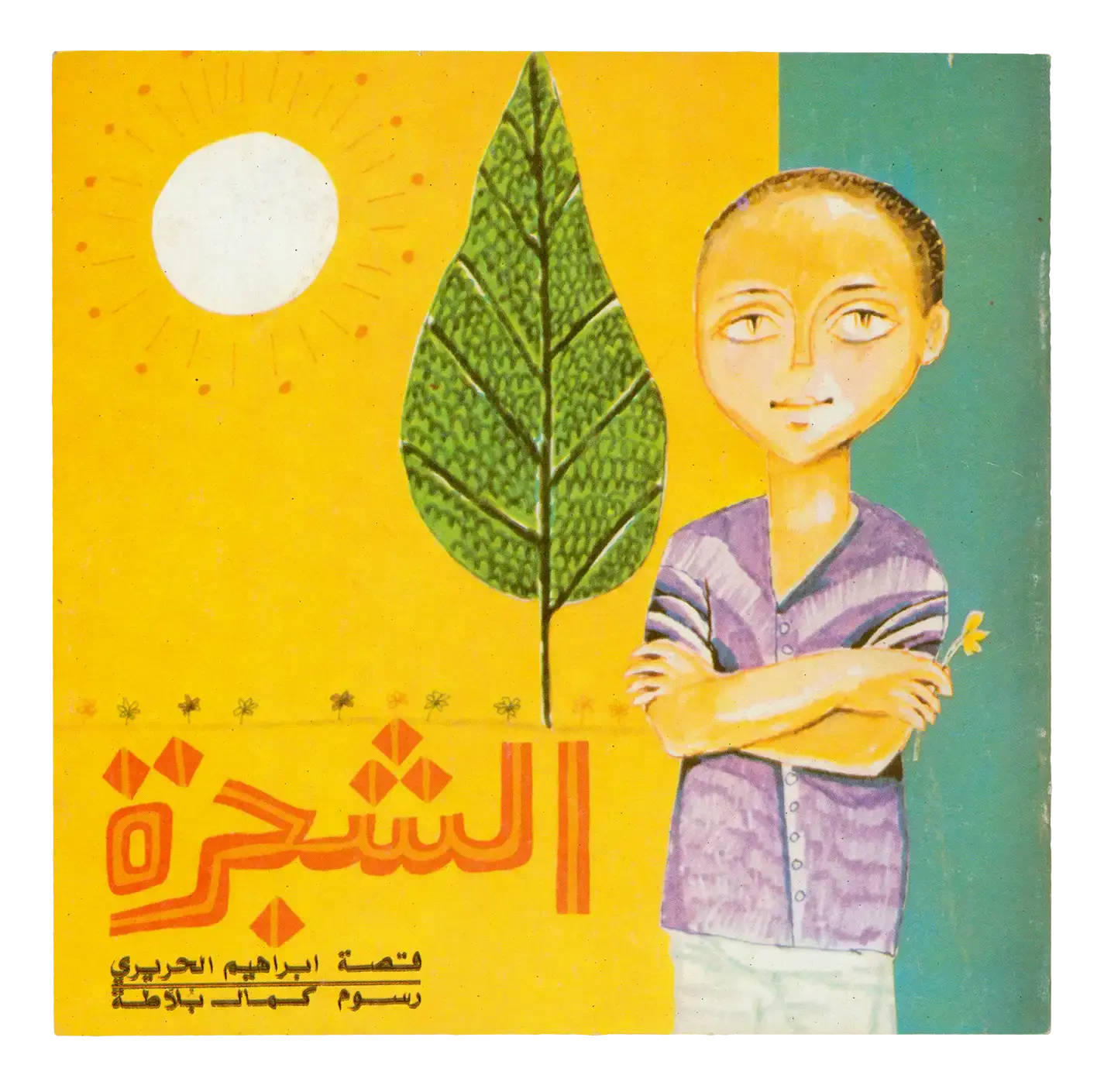
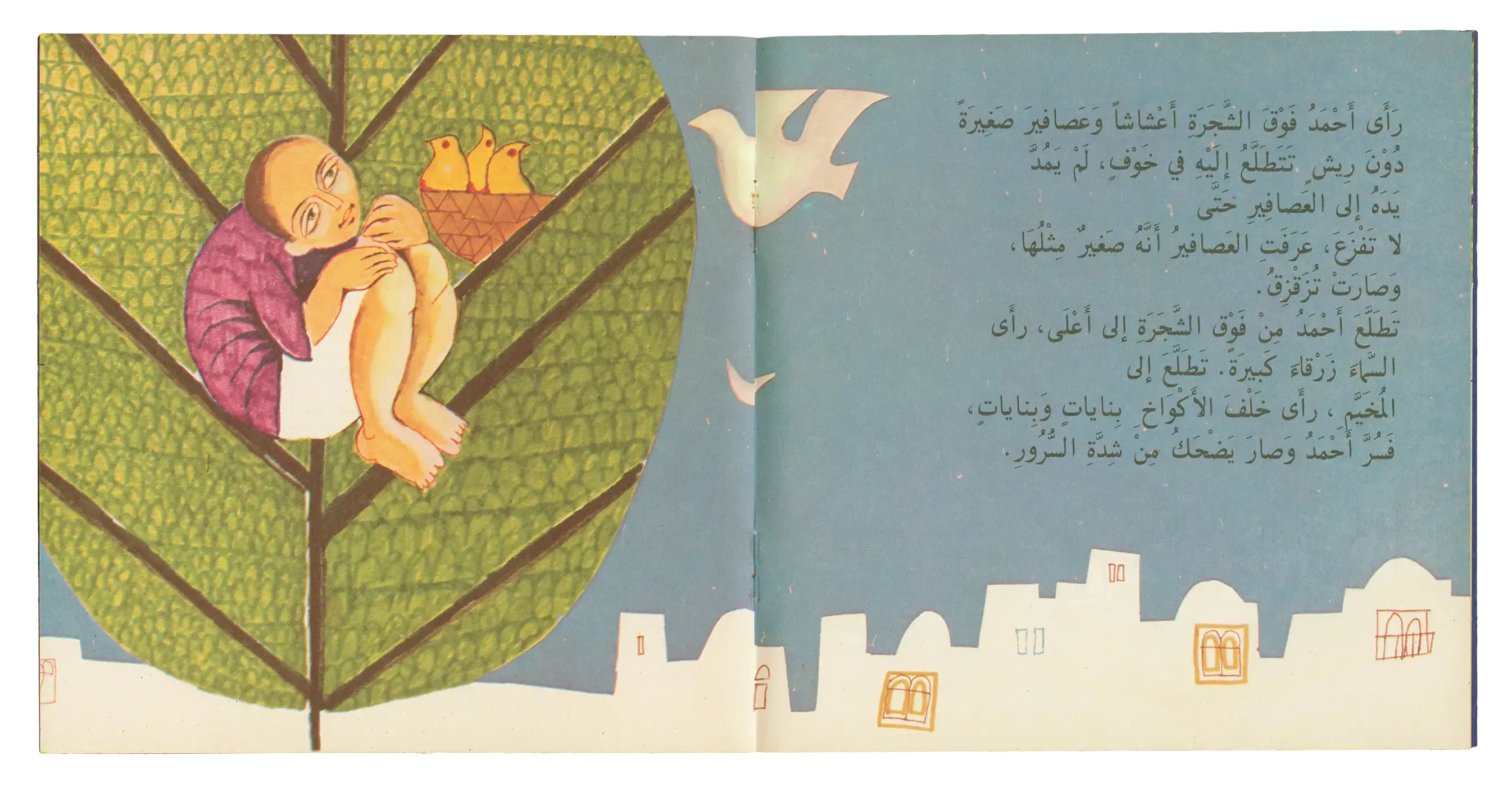
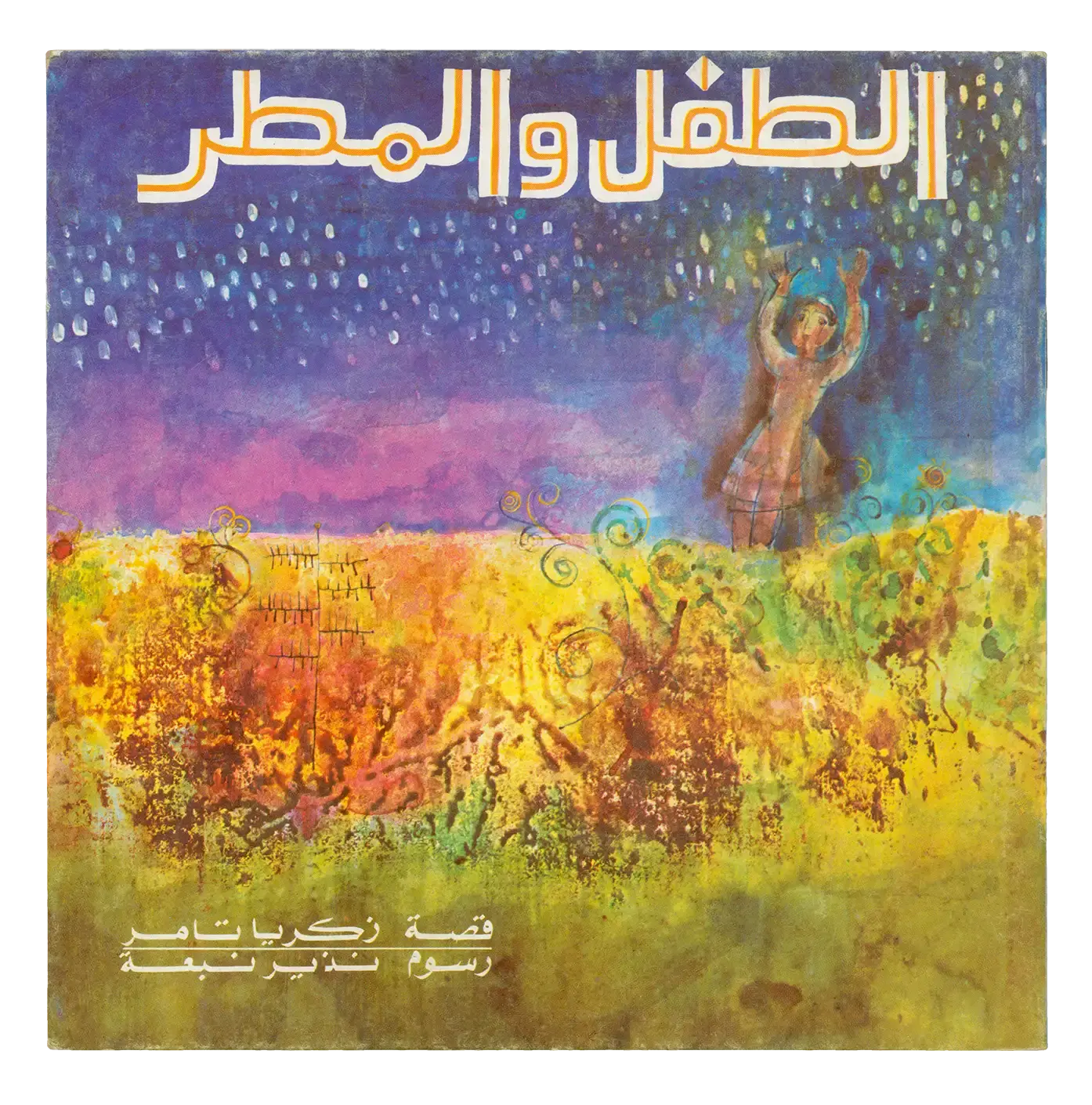
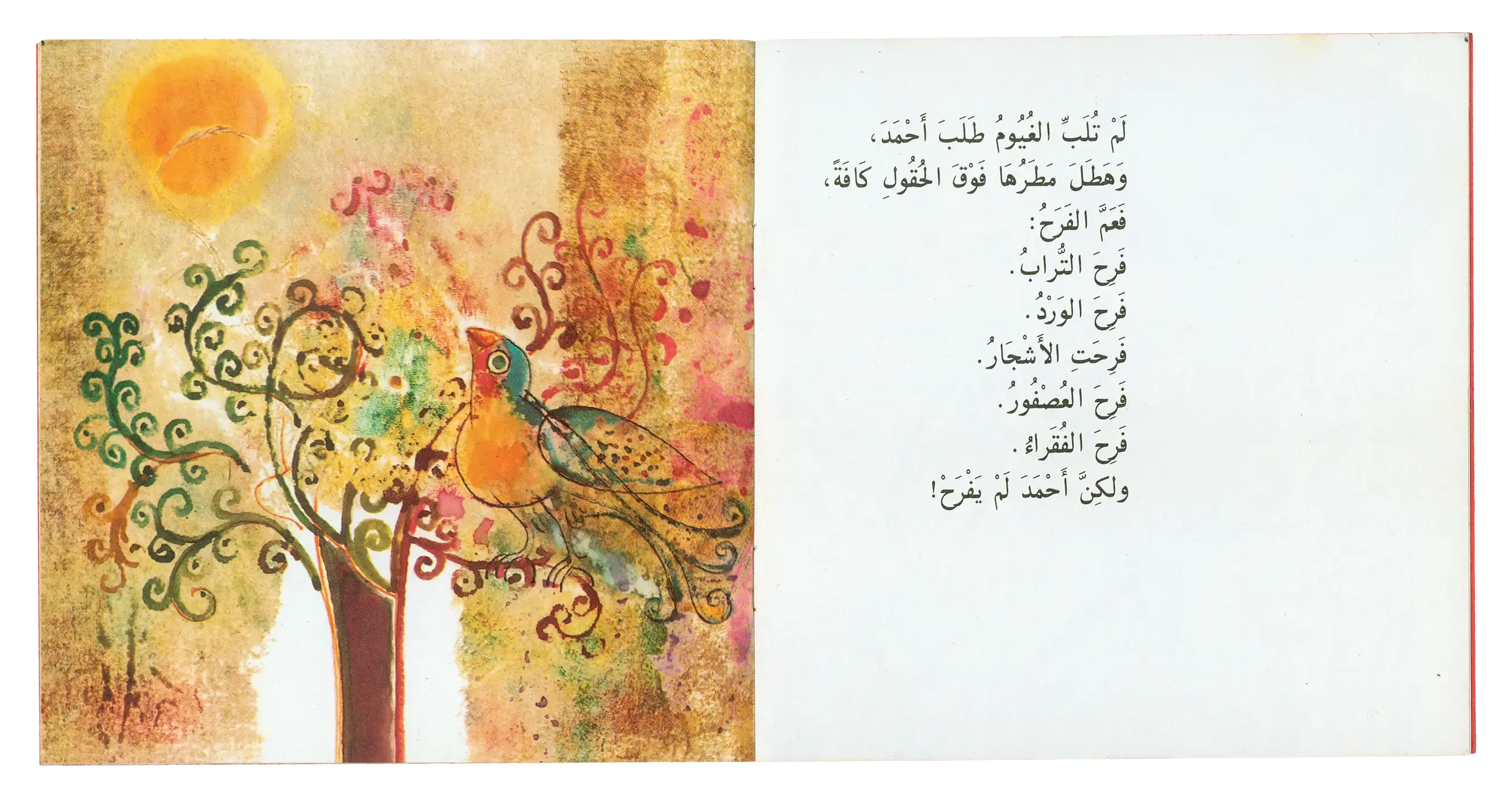
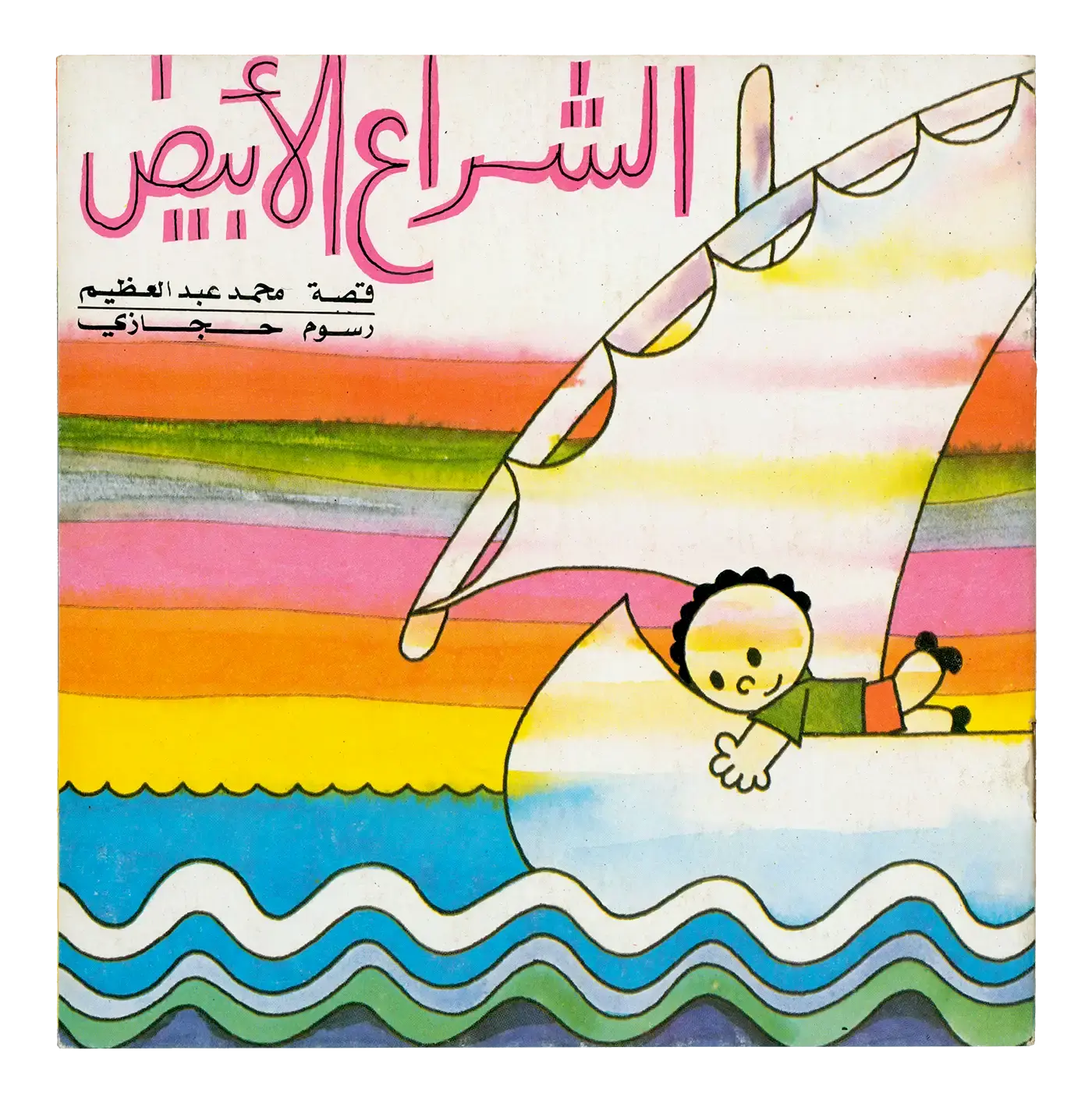

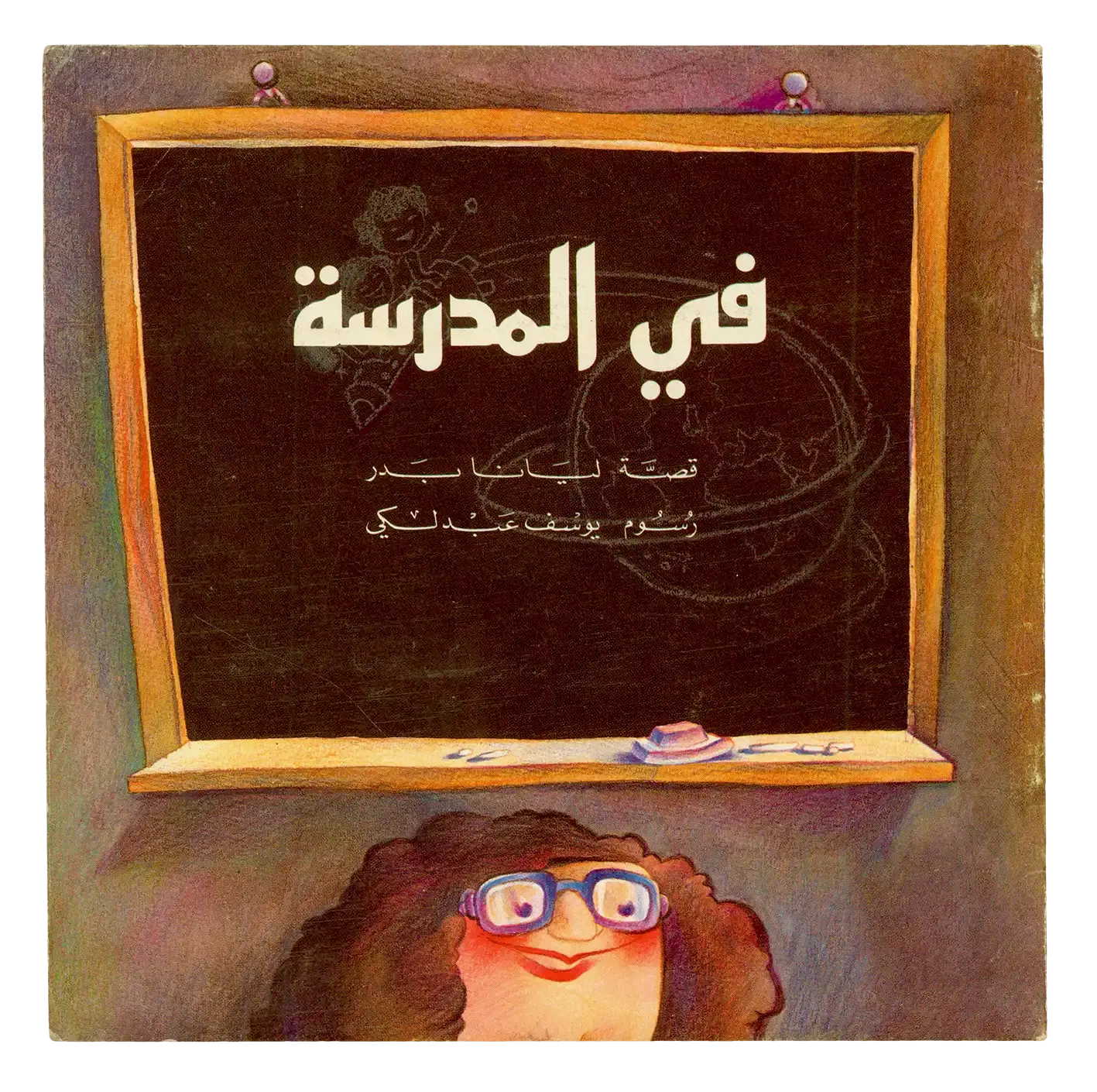


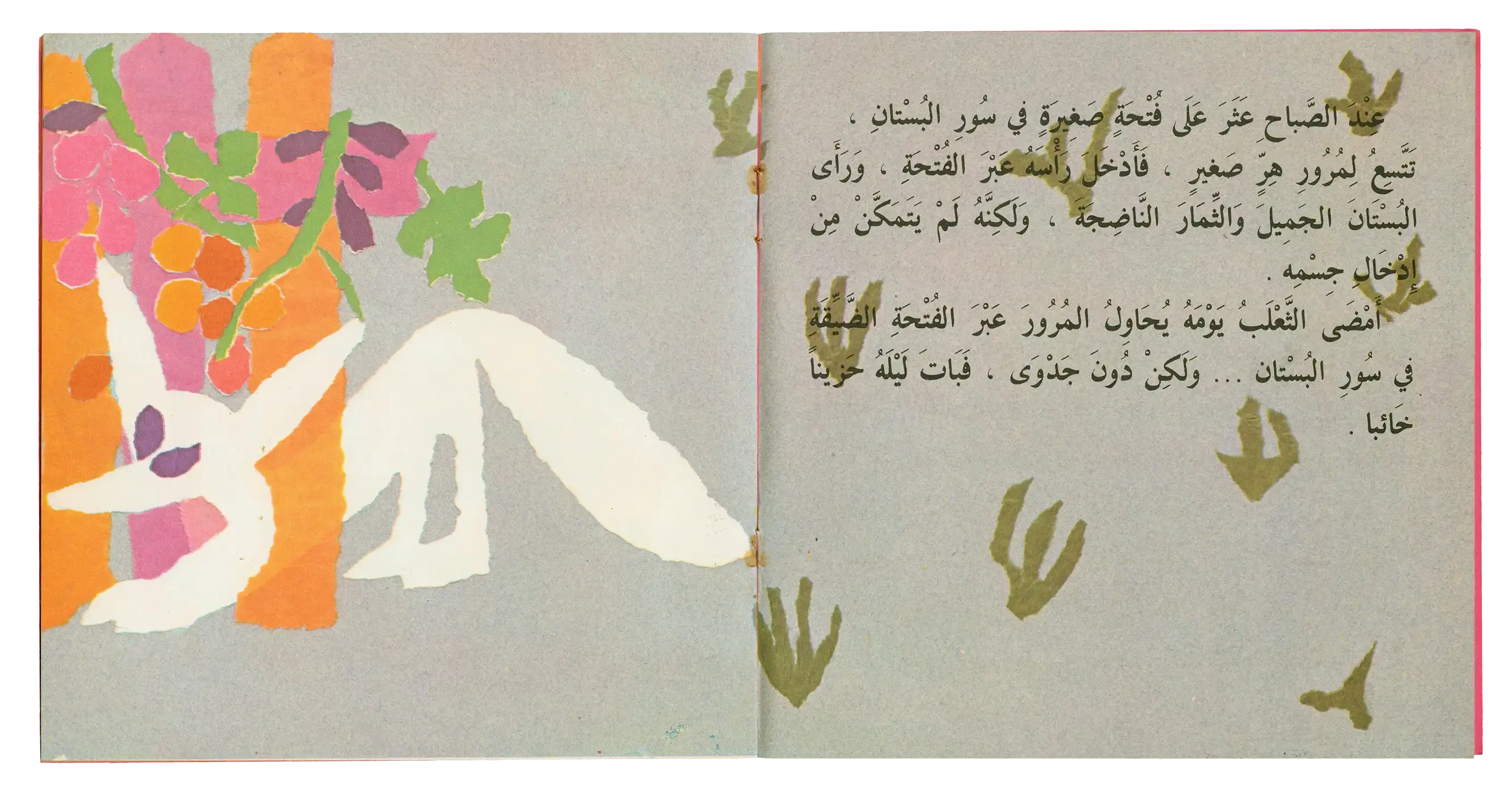
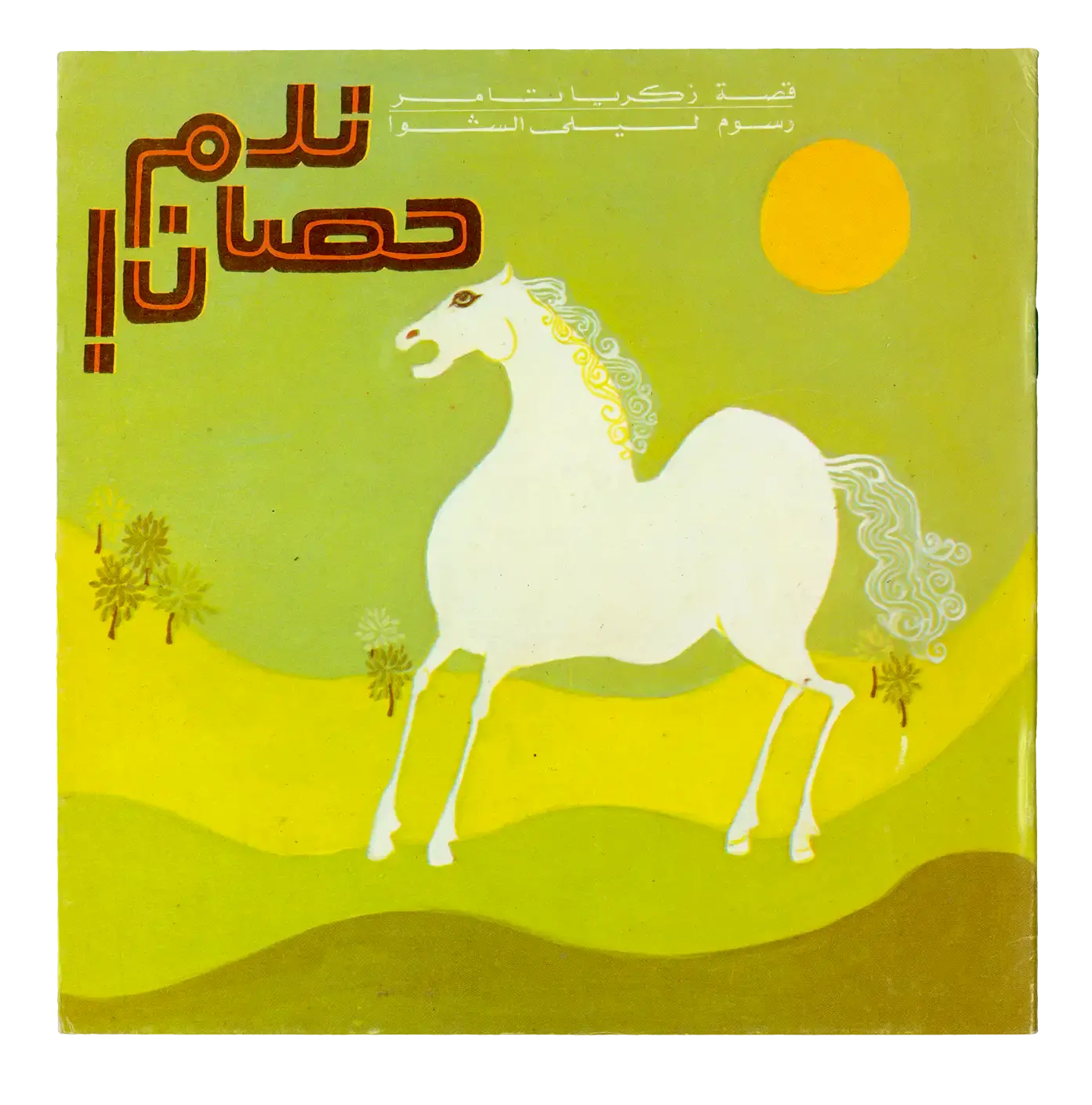
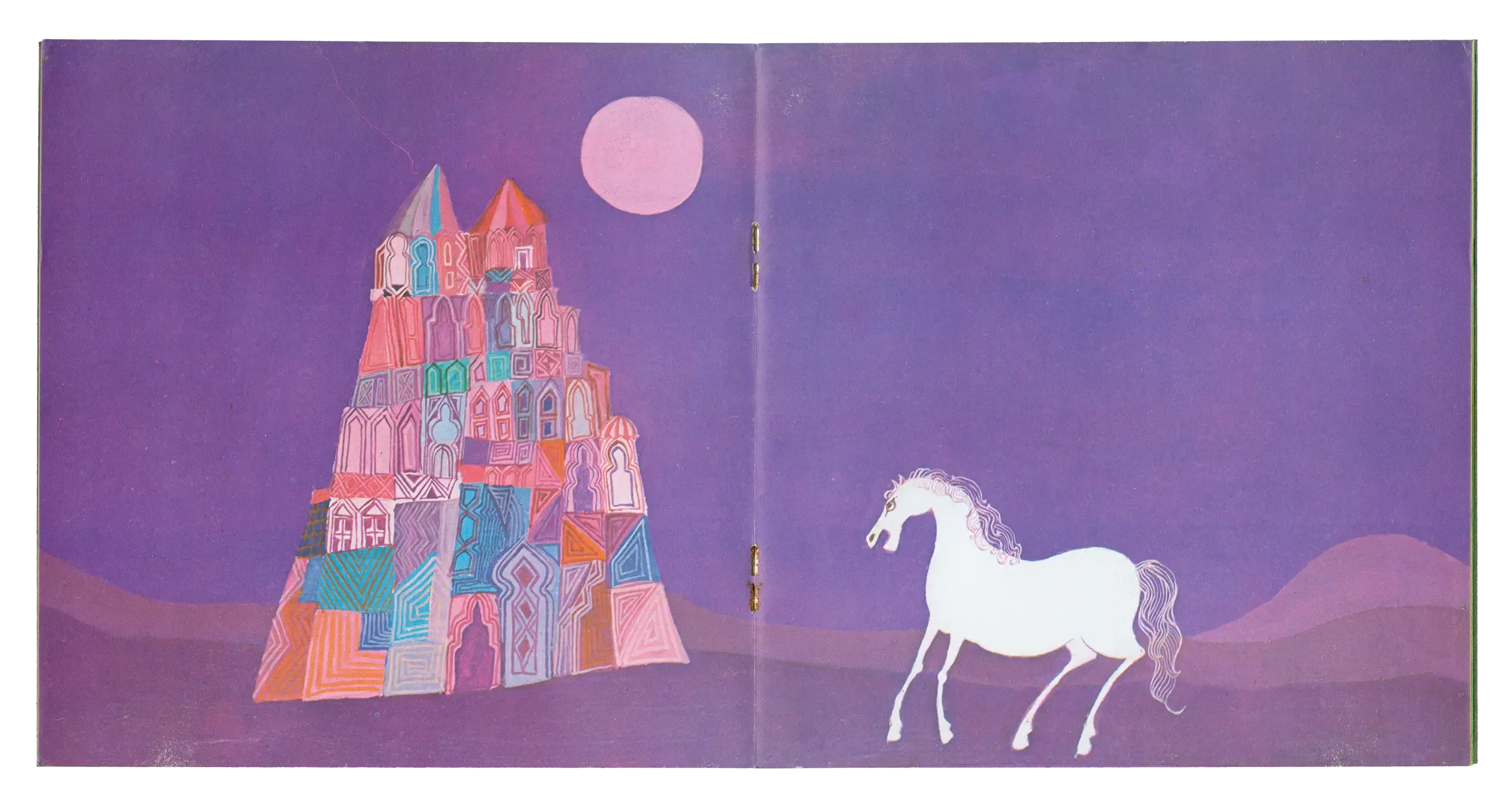
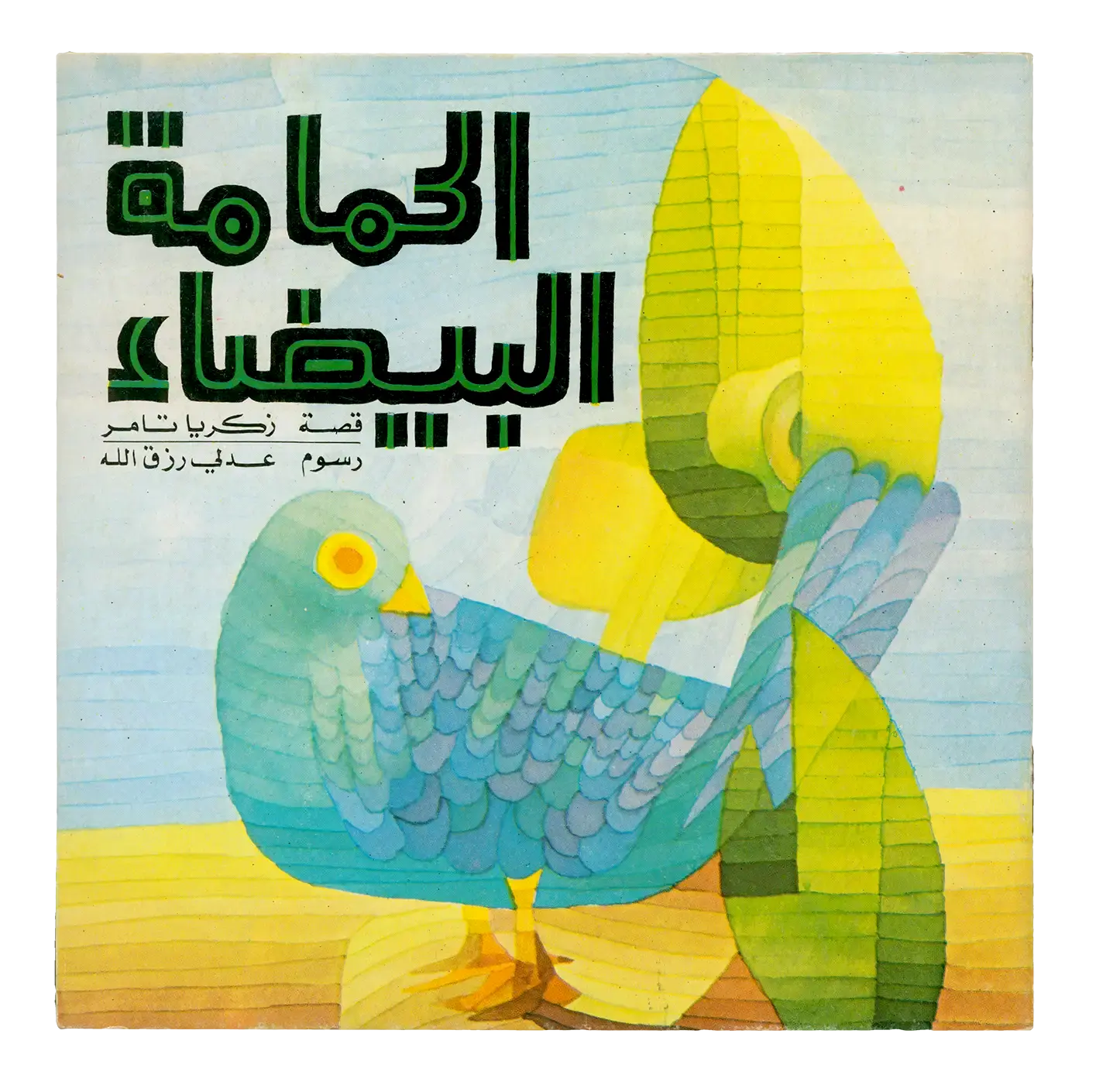




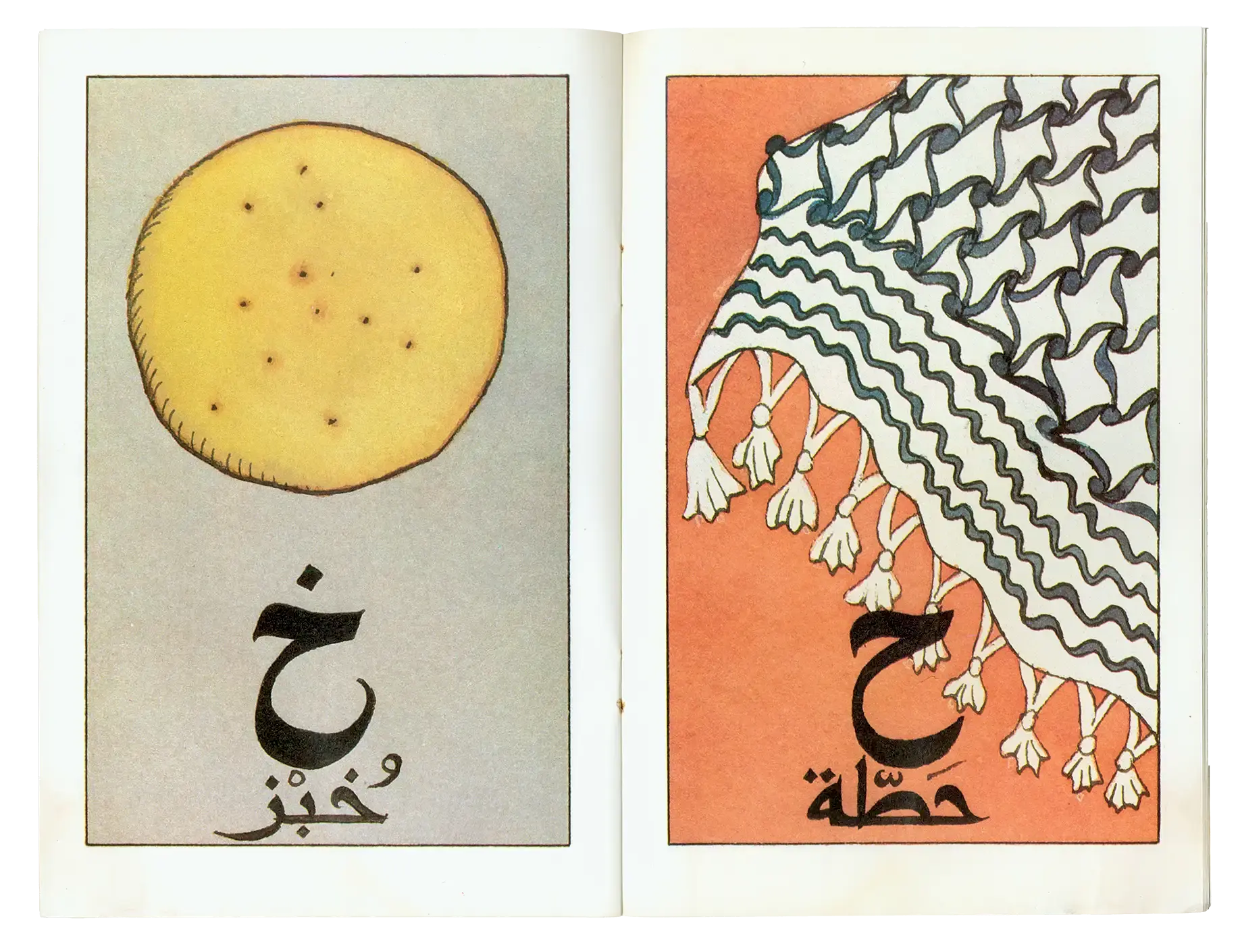
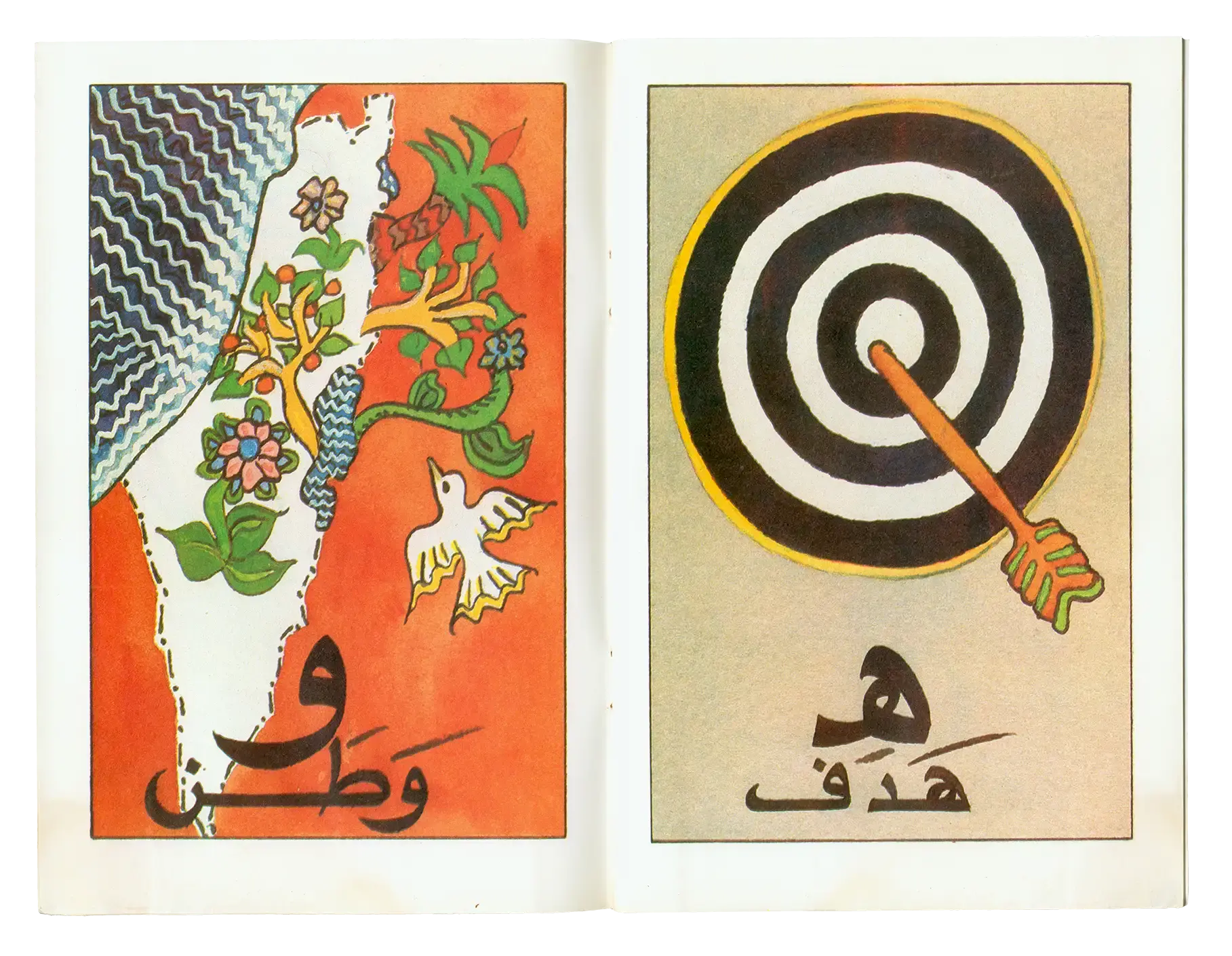
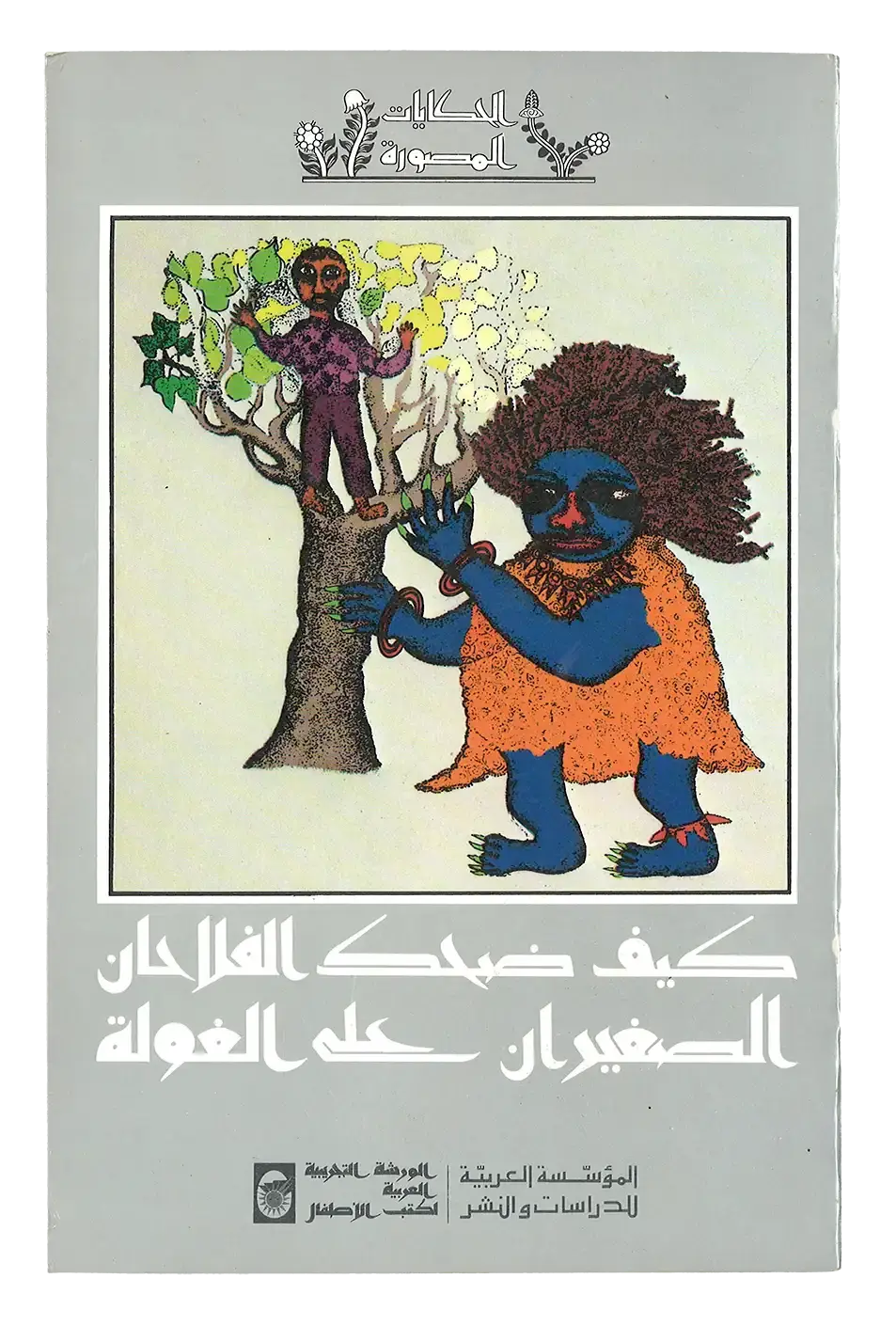
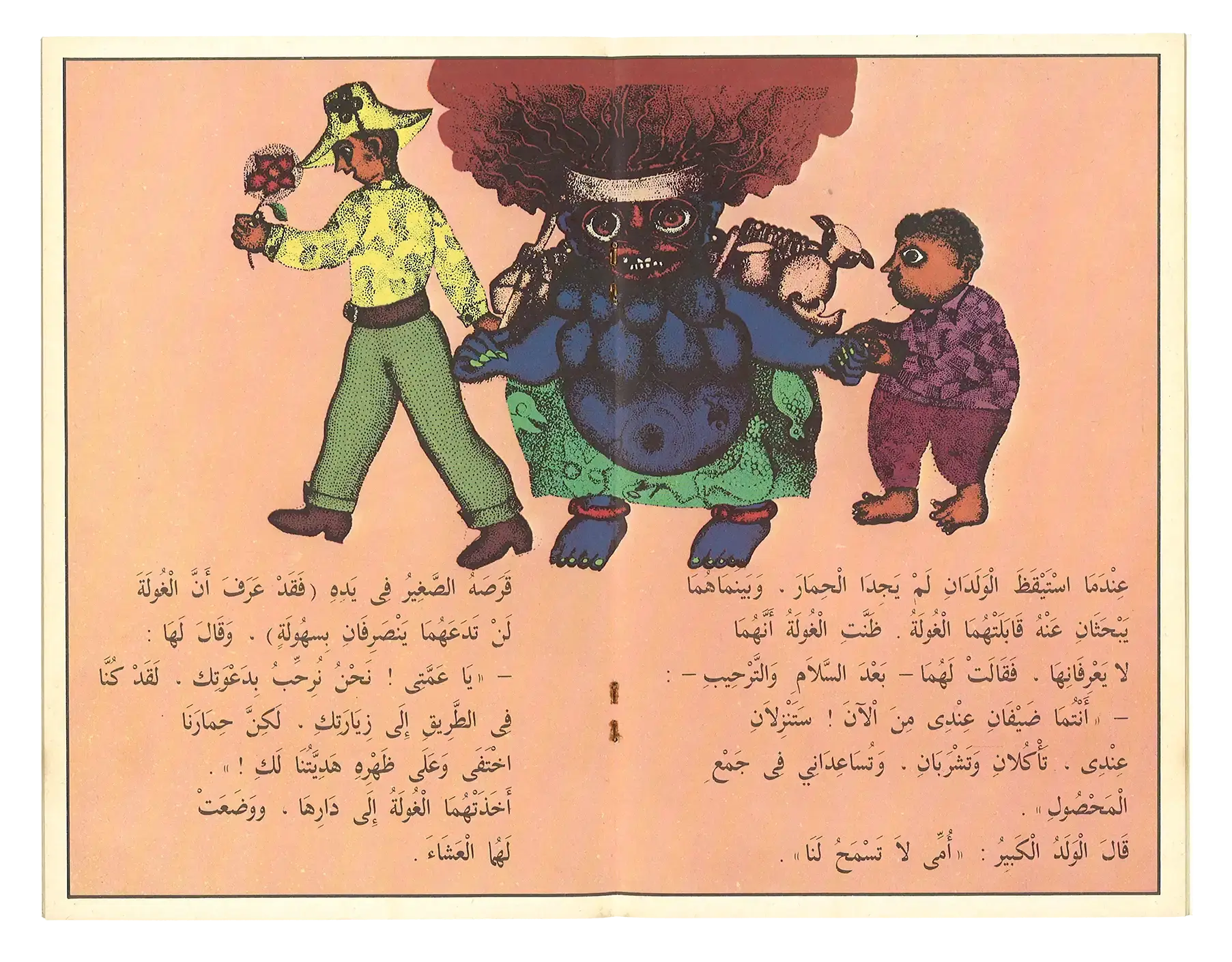
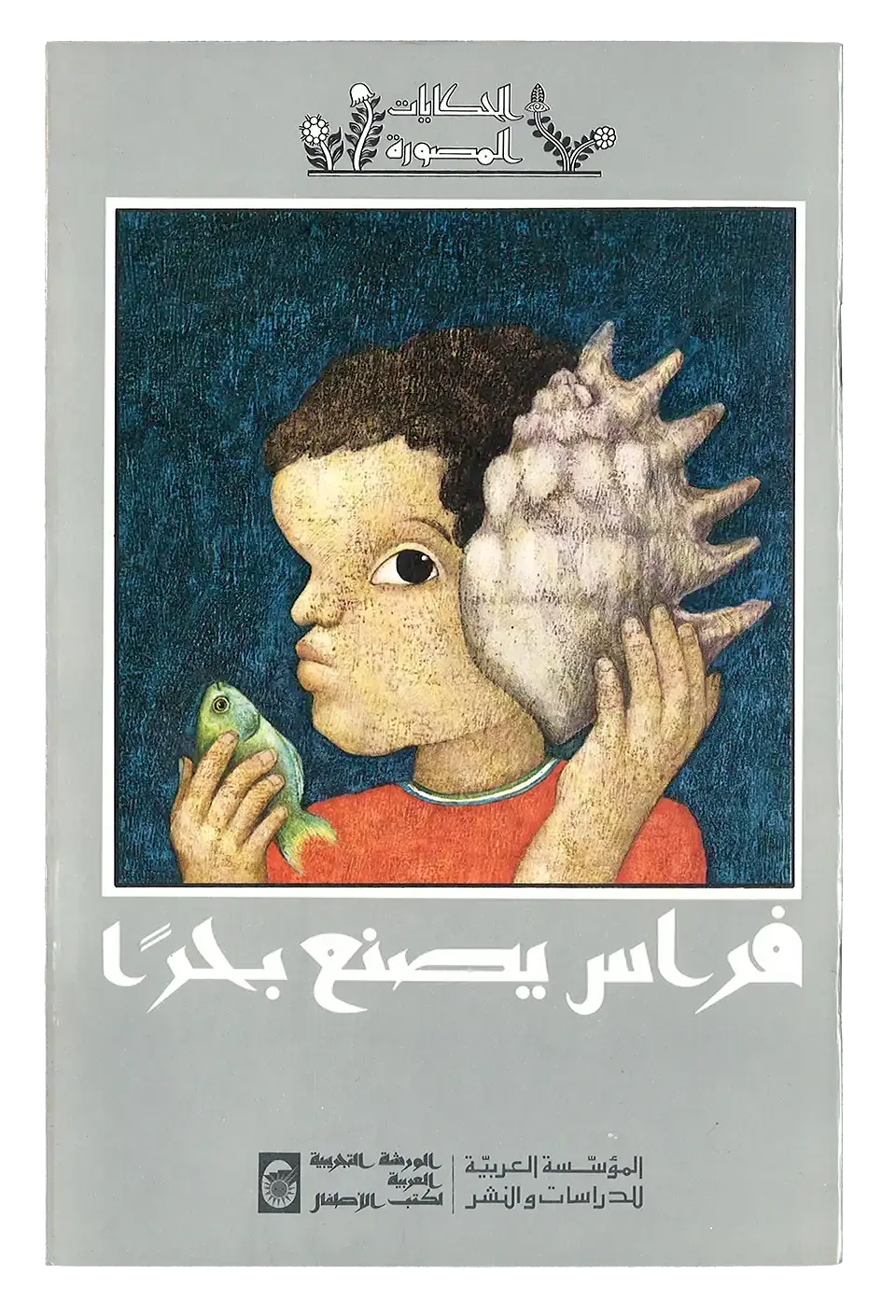
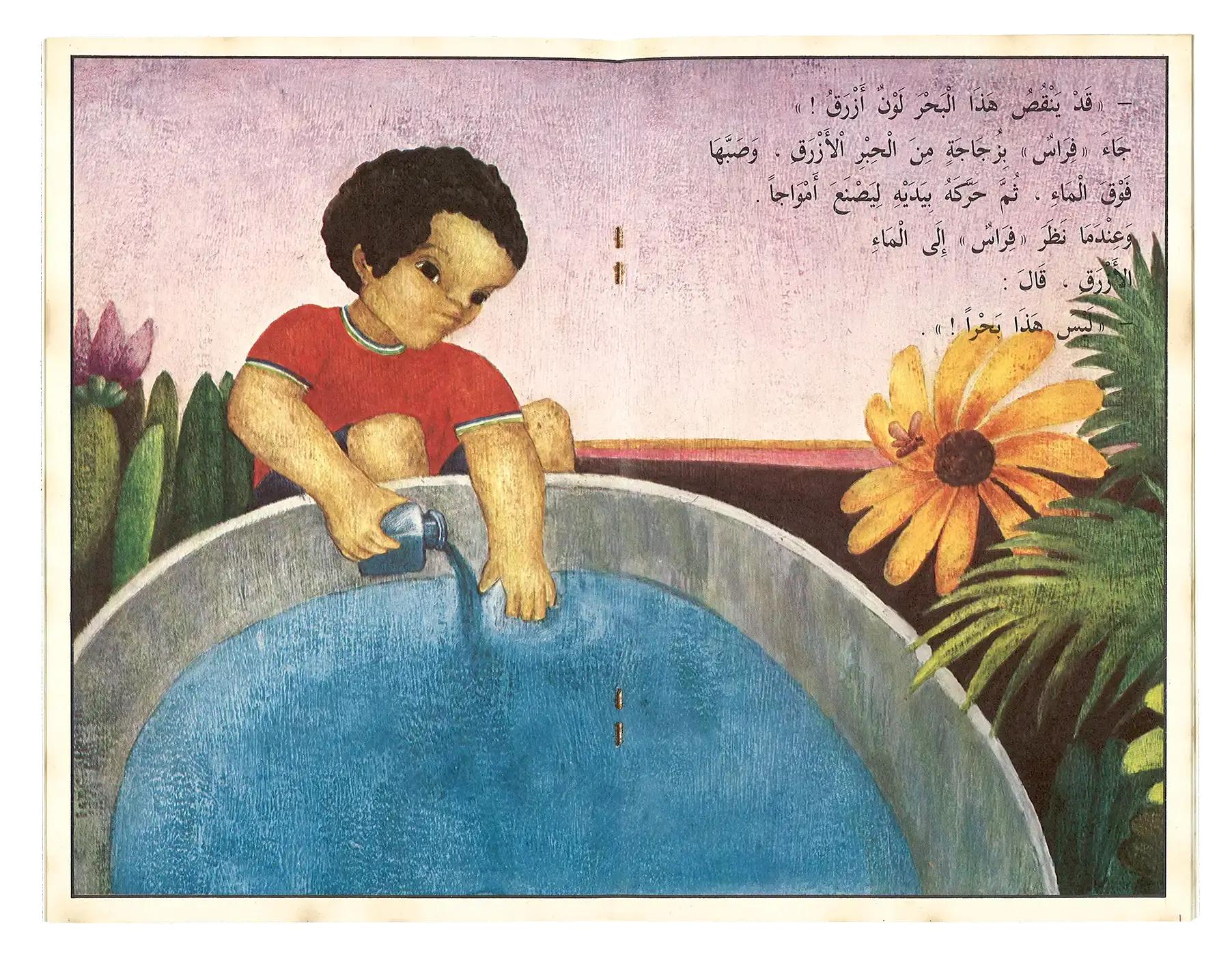
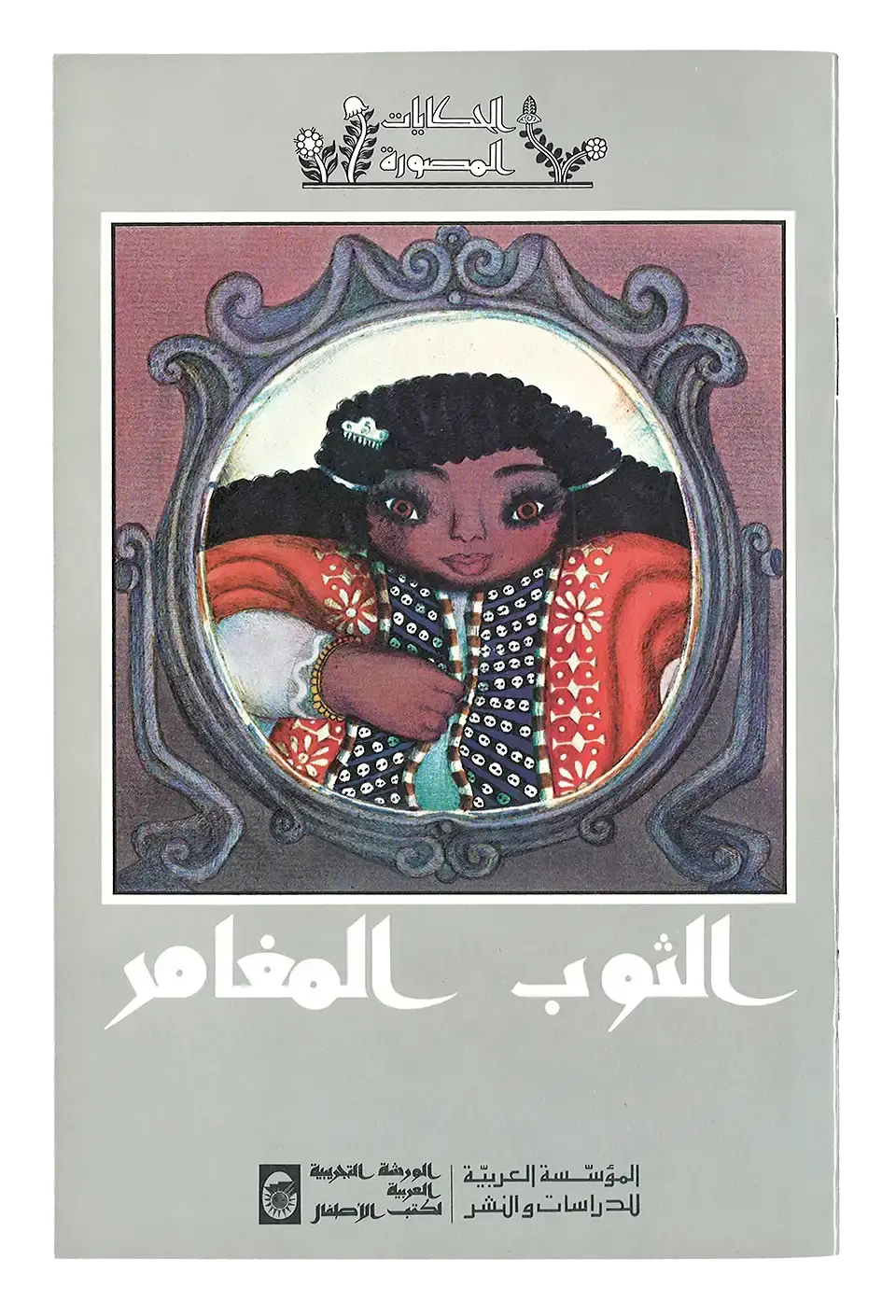
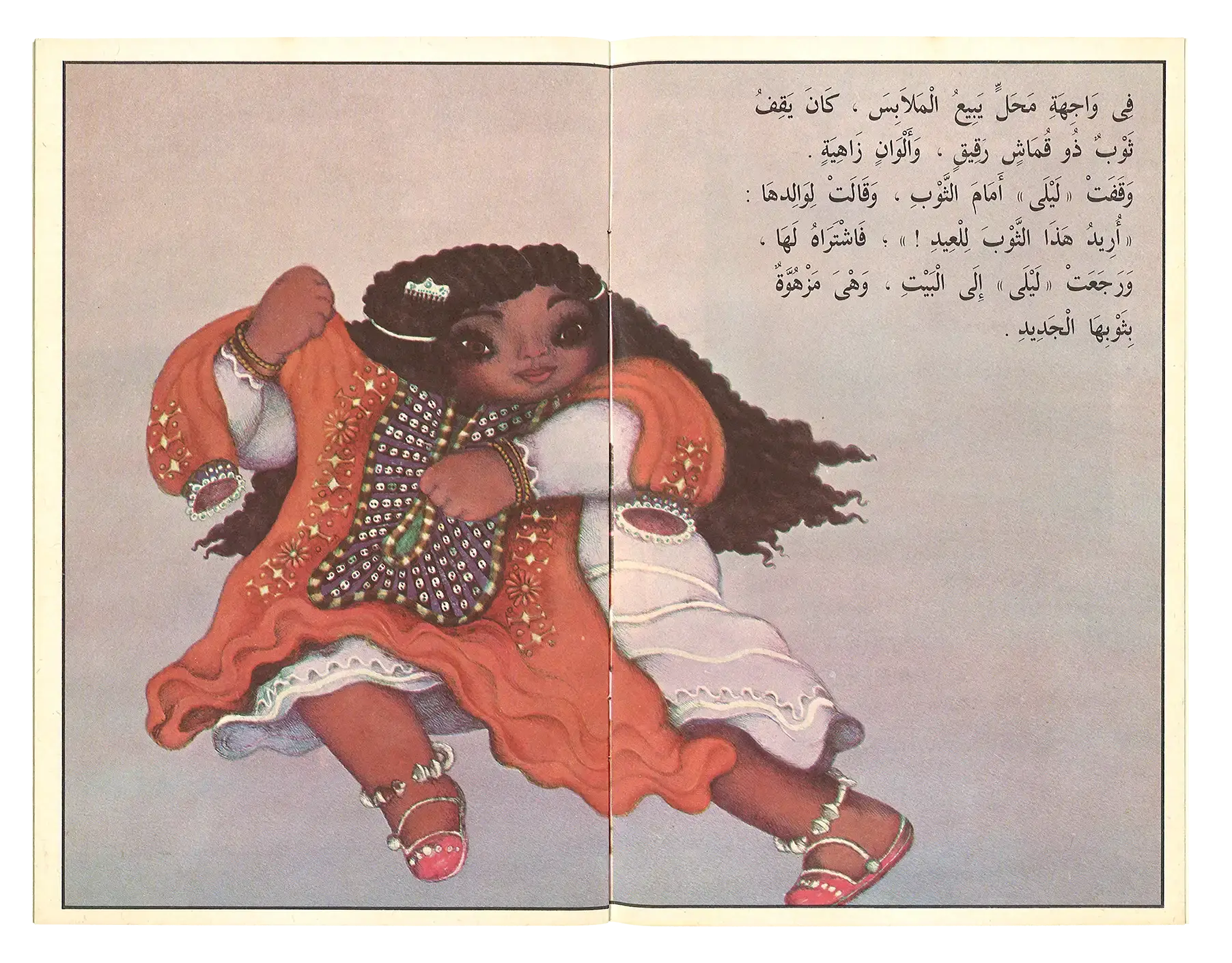
إحياء التراث
Heritage Revived
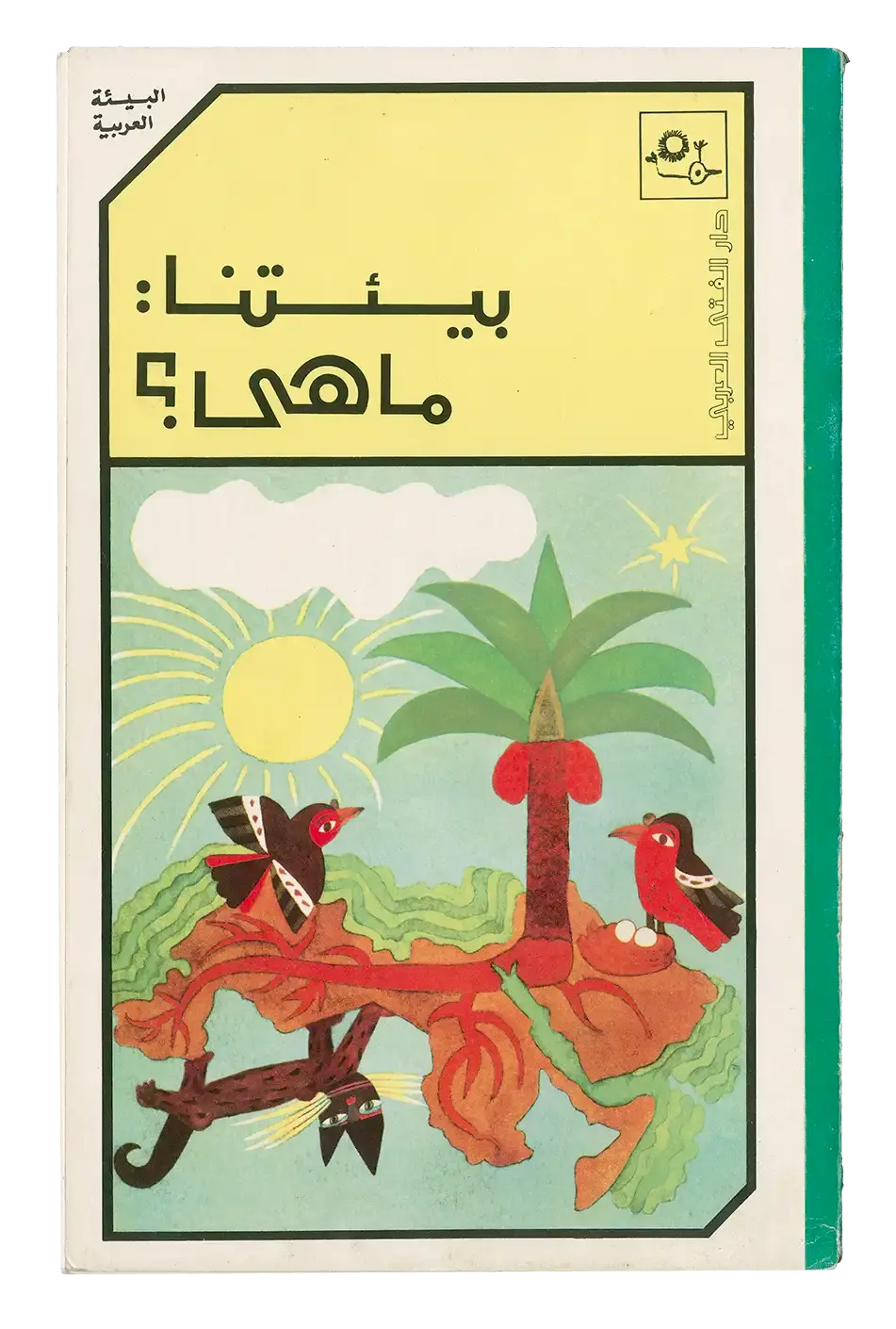

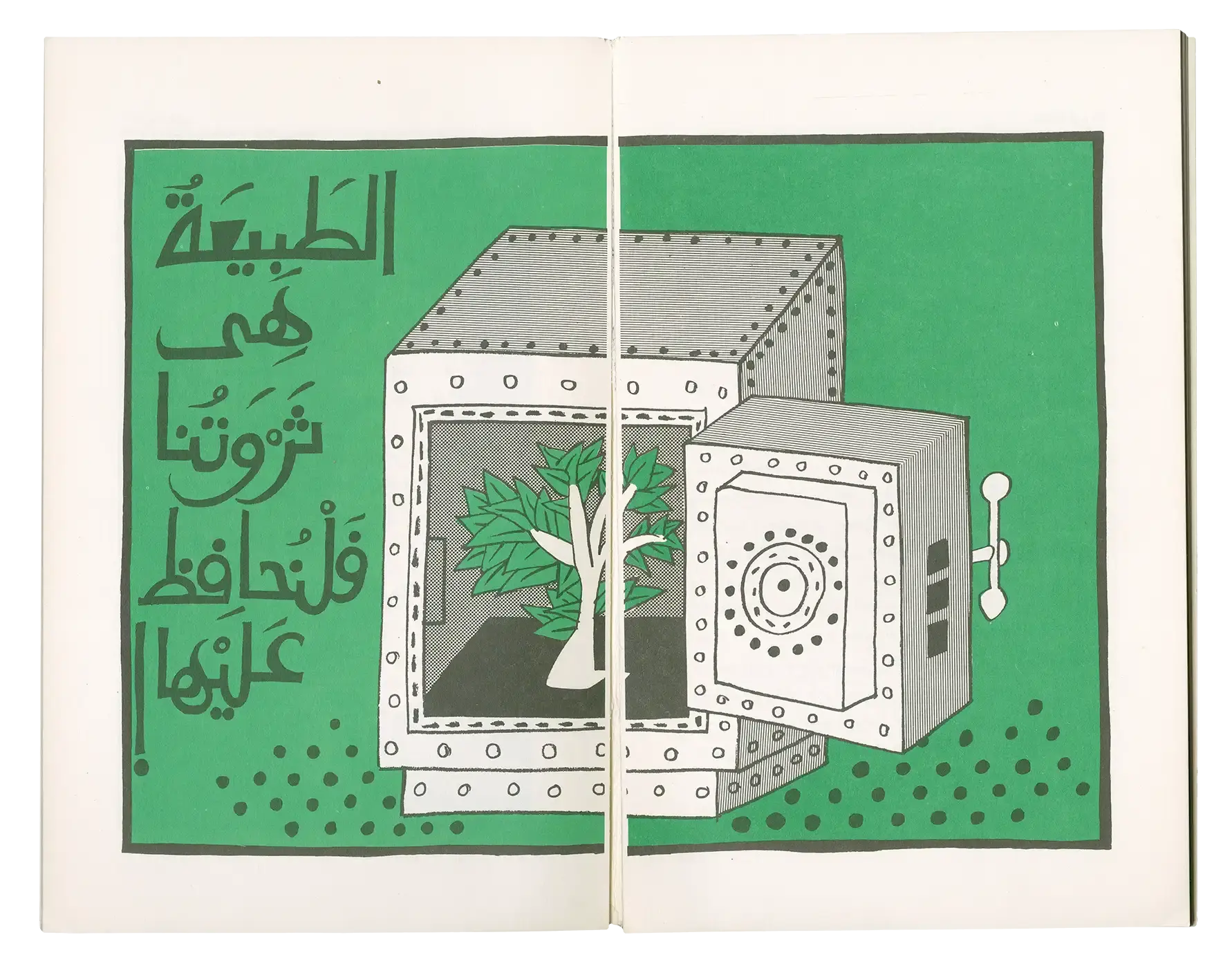
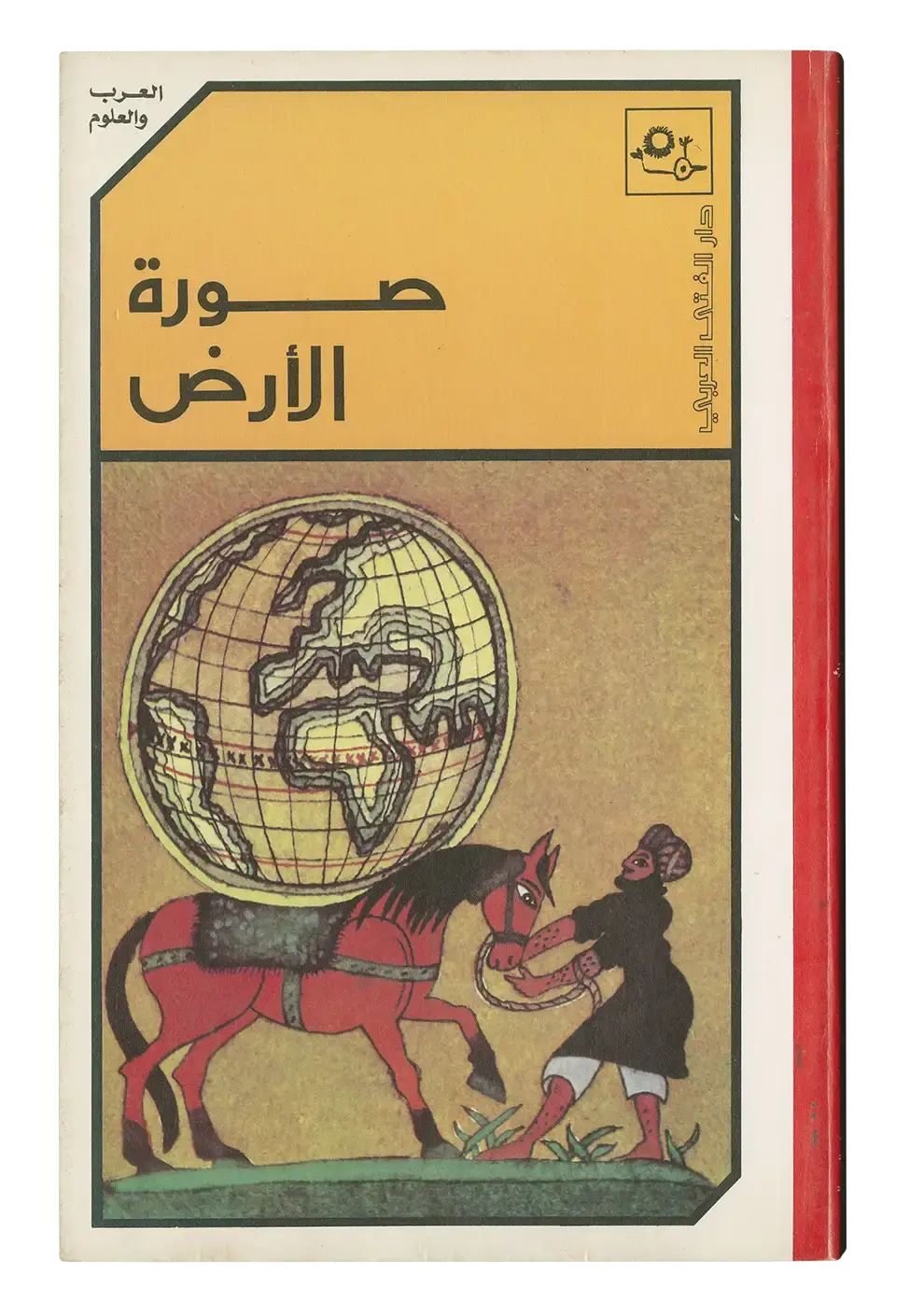
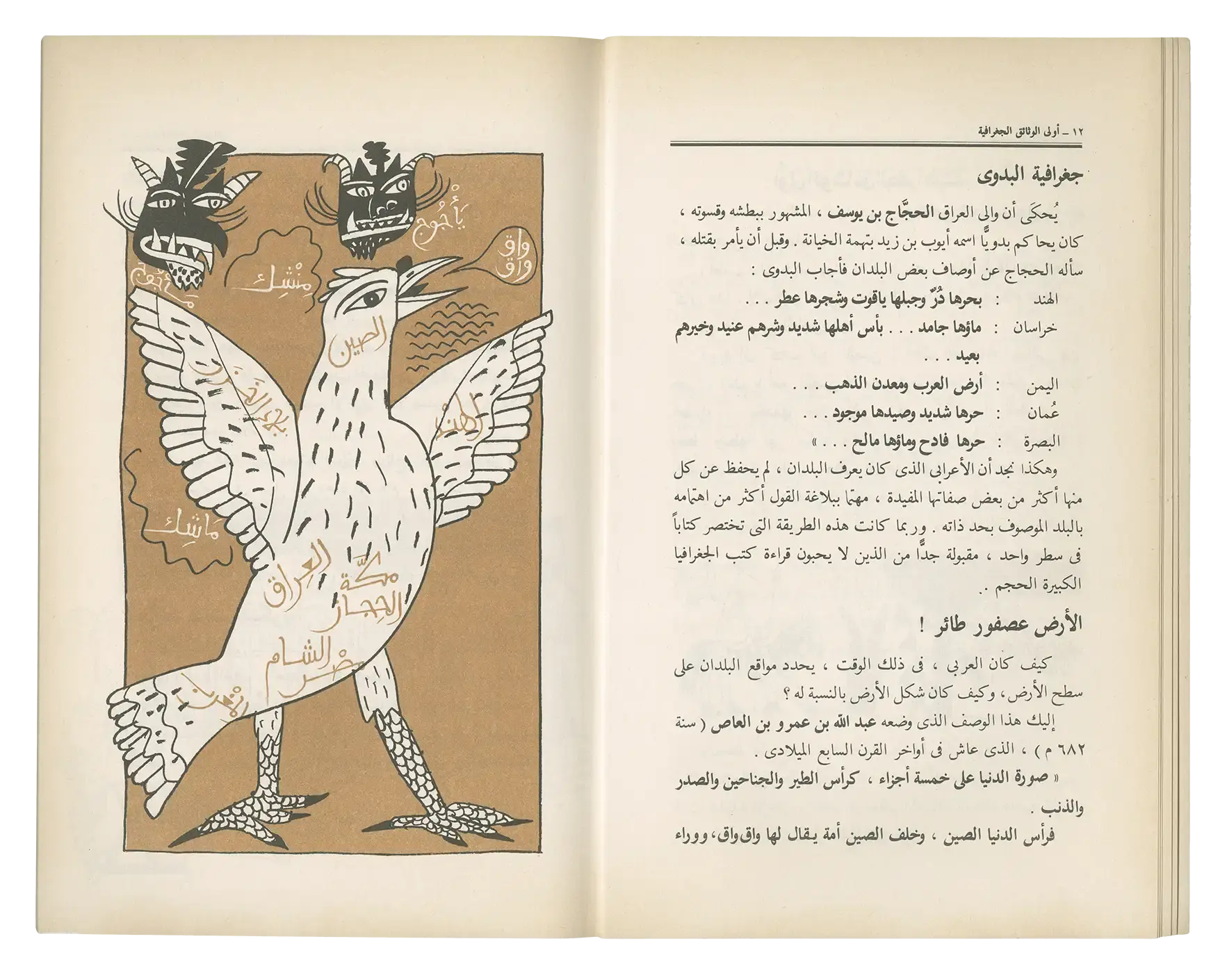
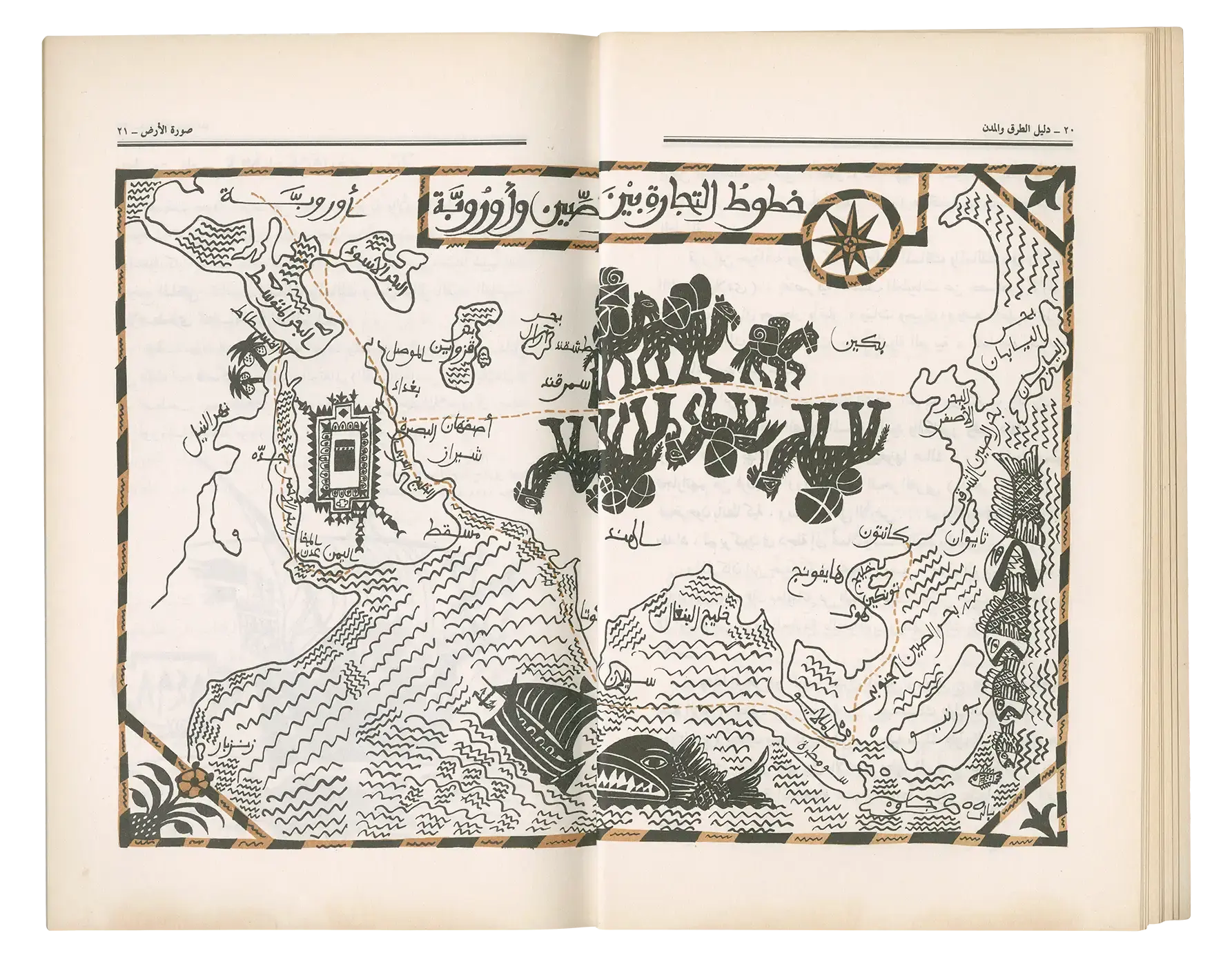
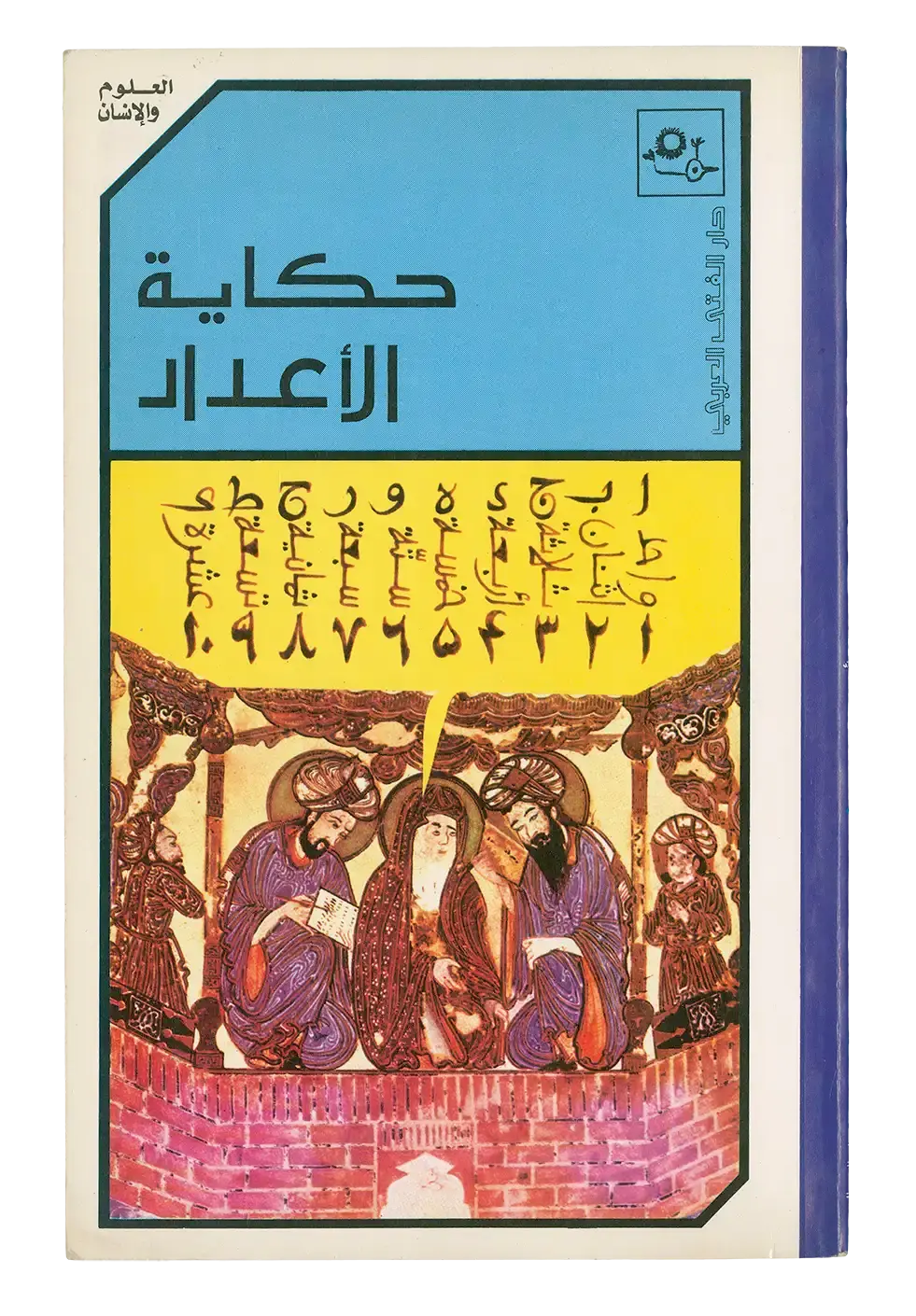
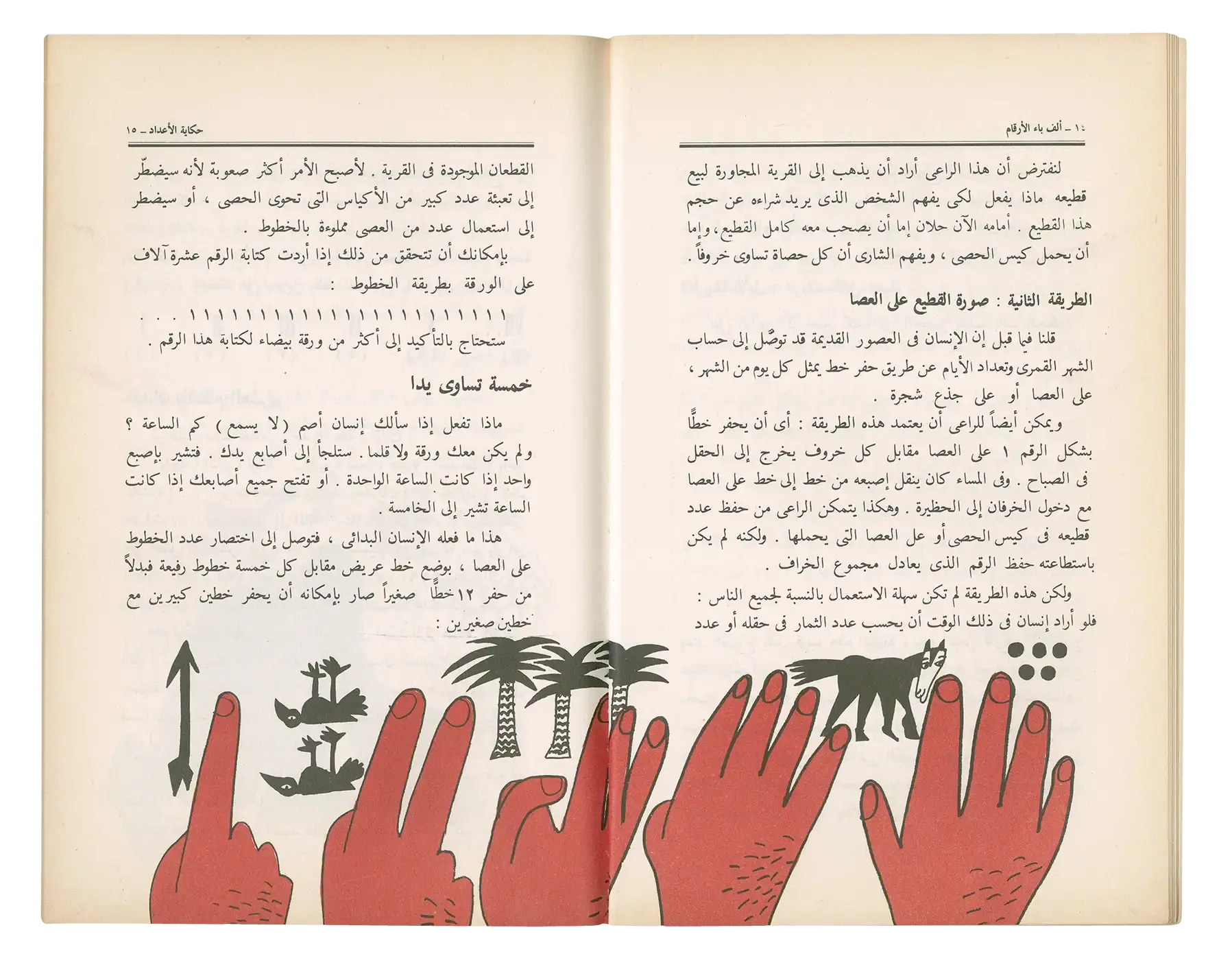
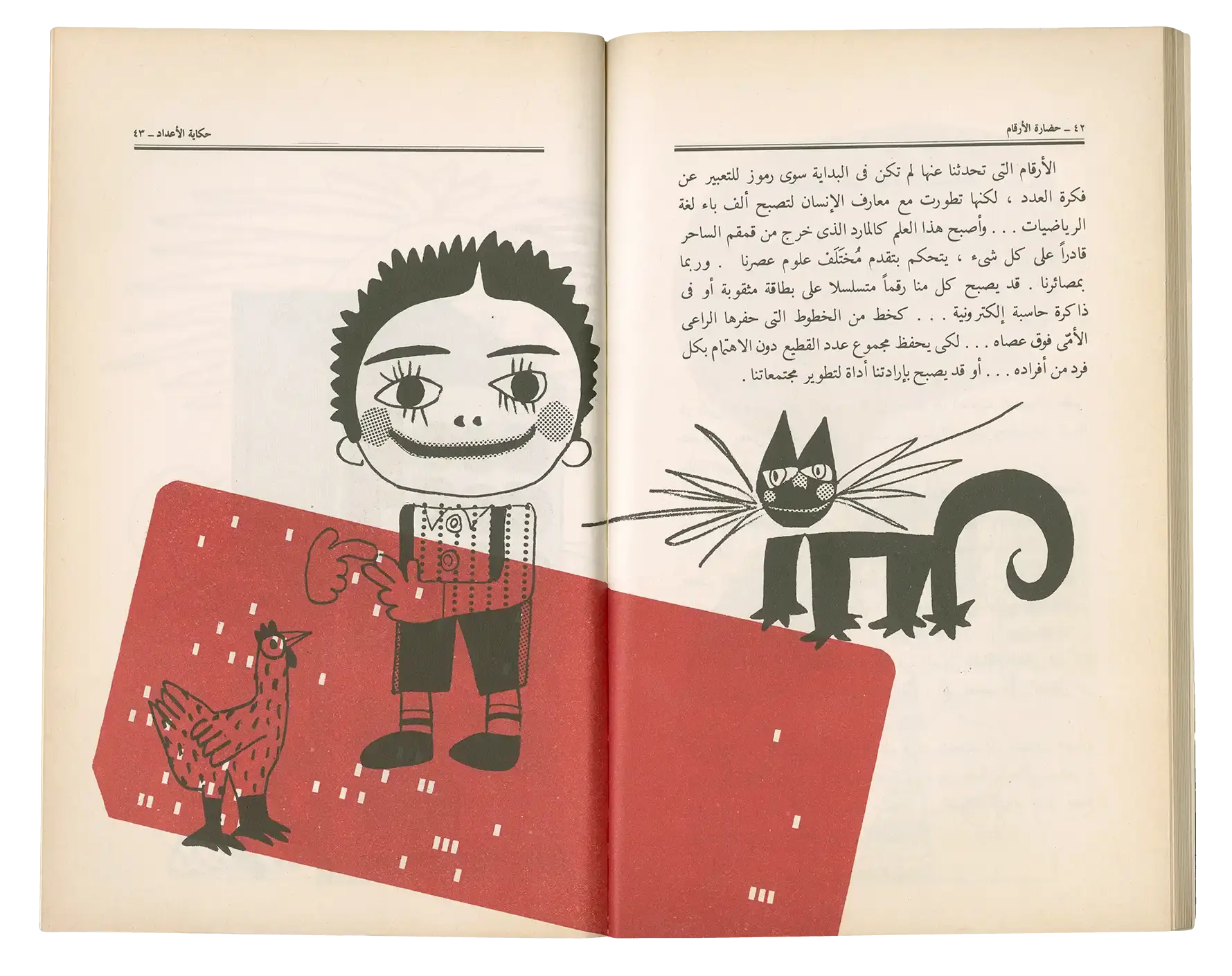
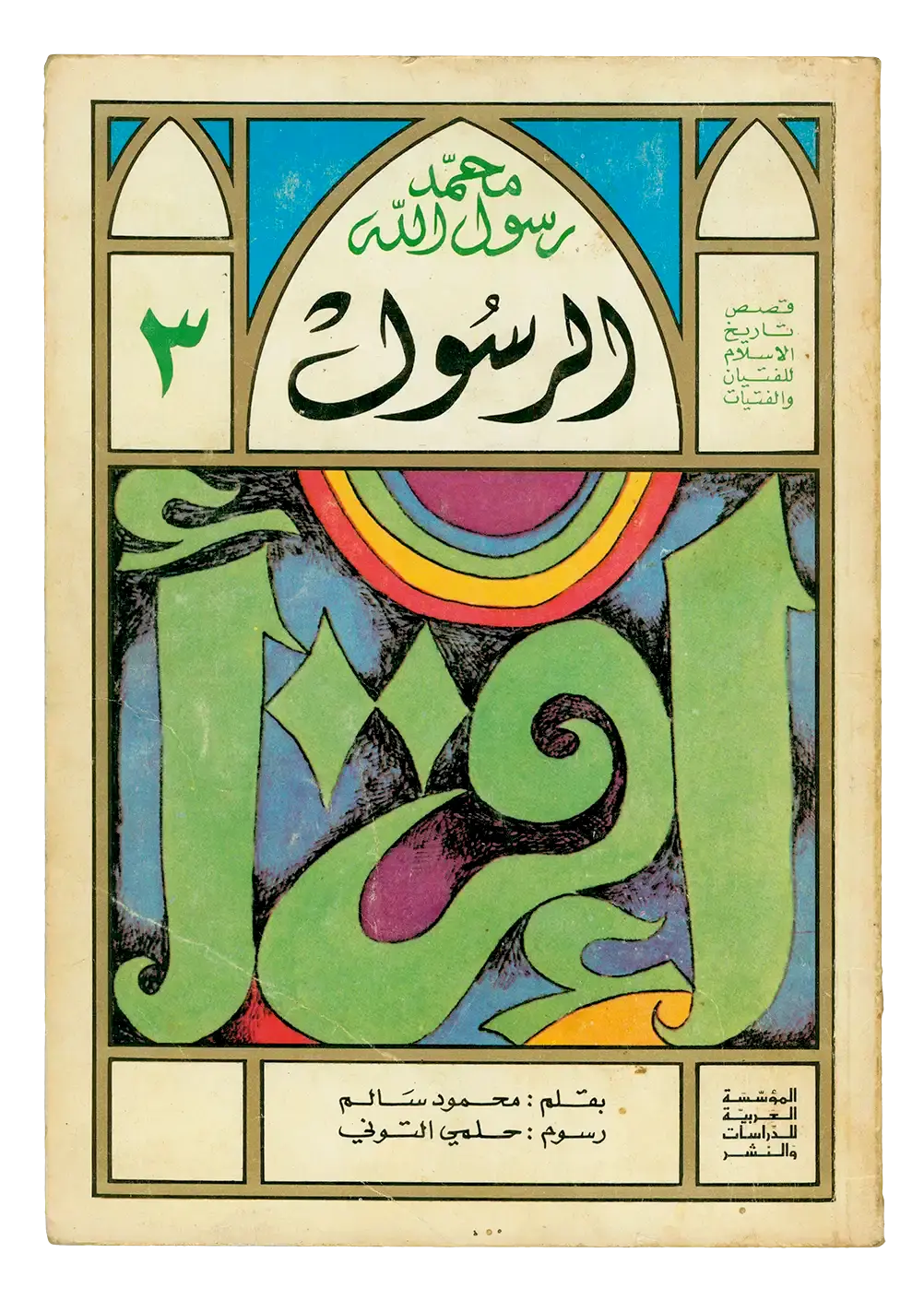
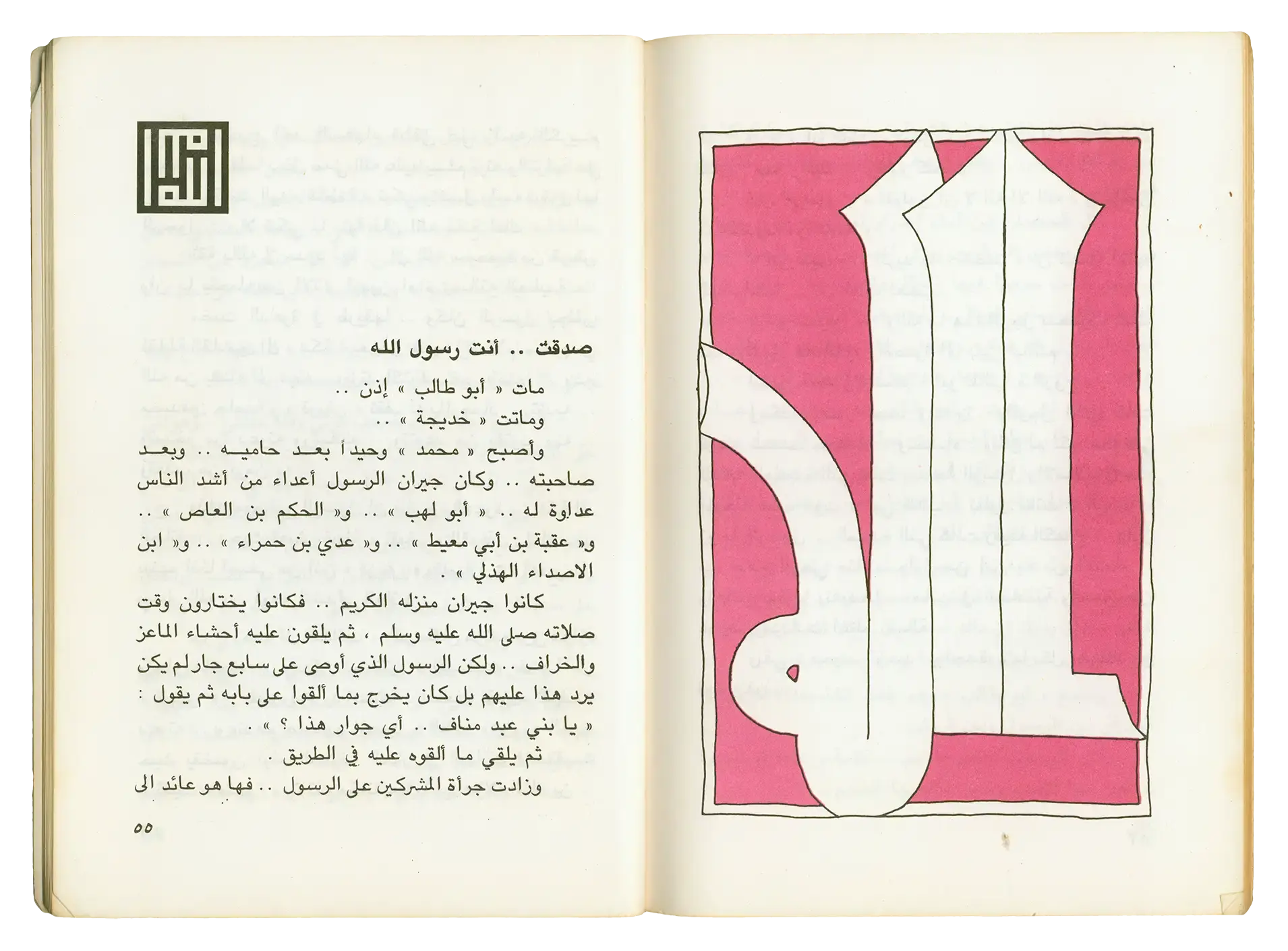
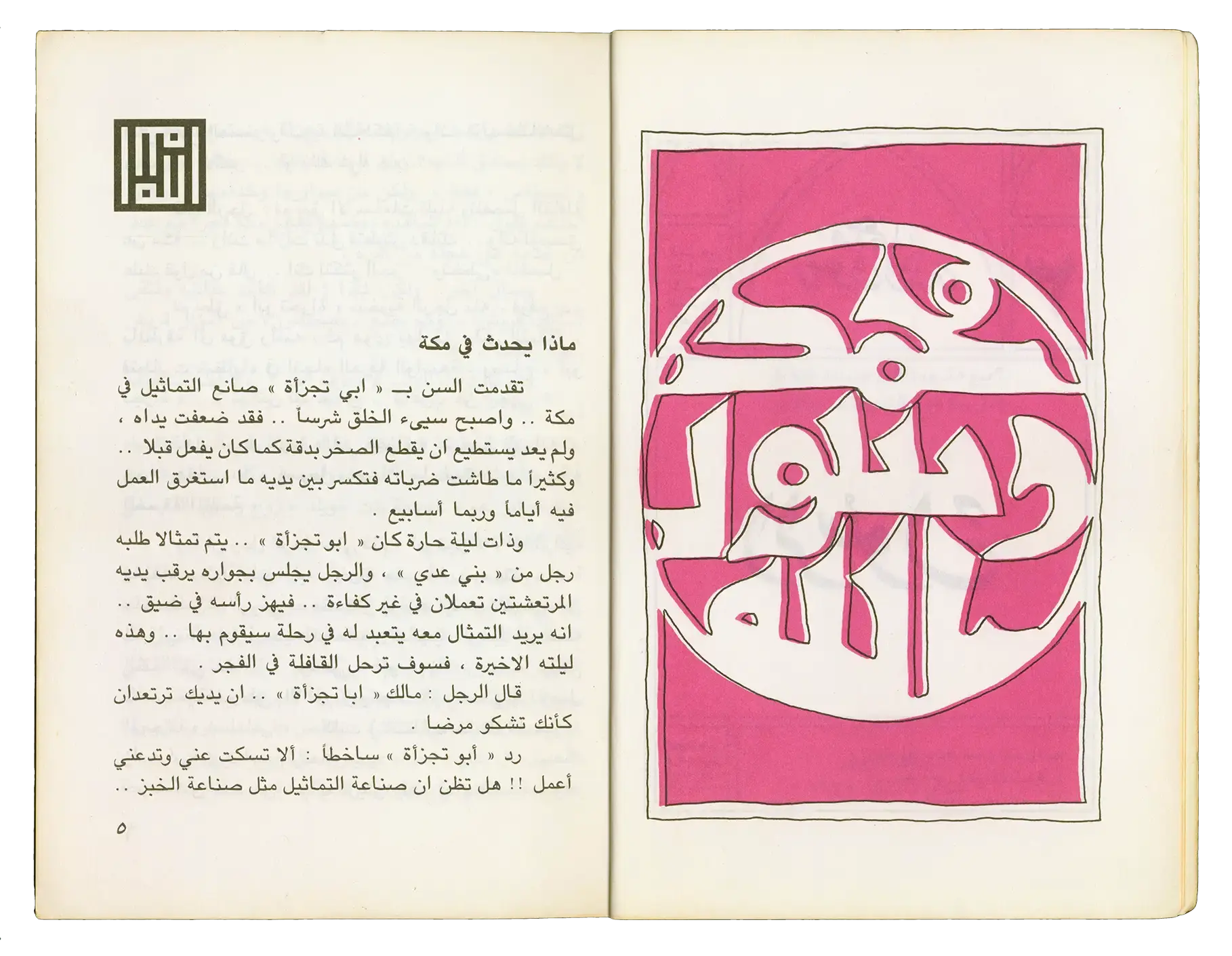

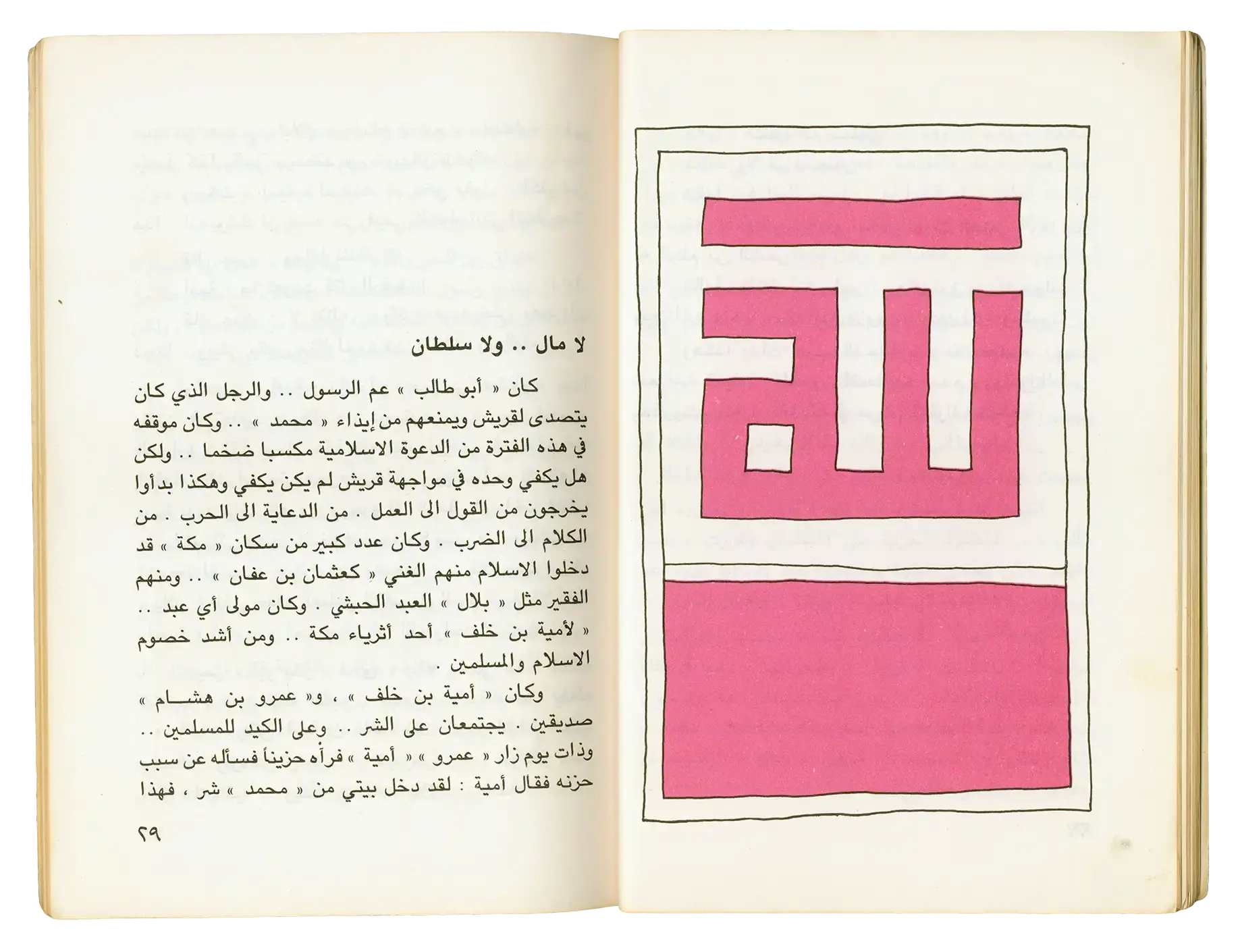
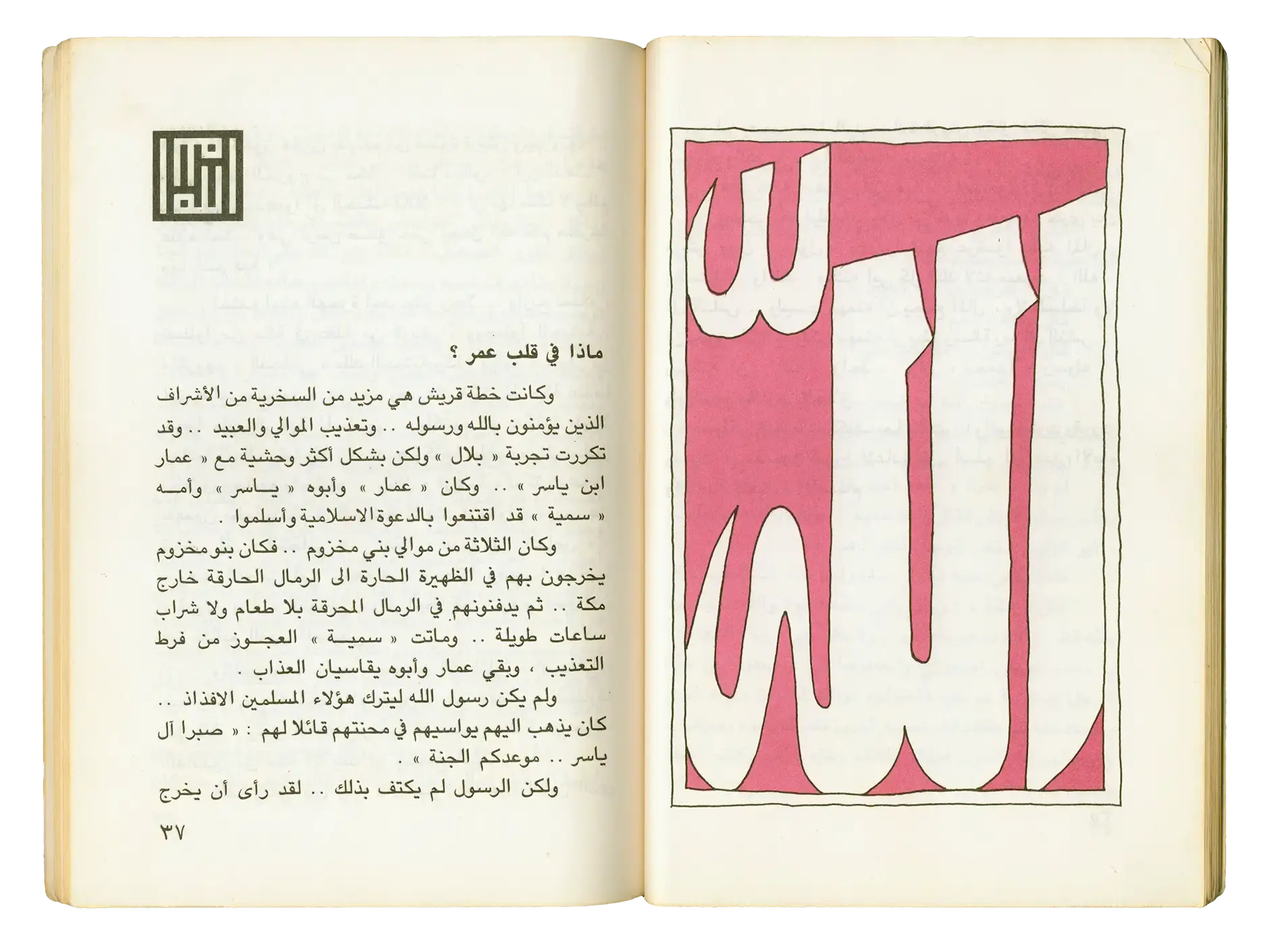


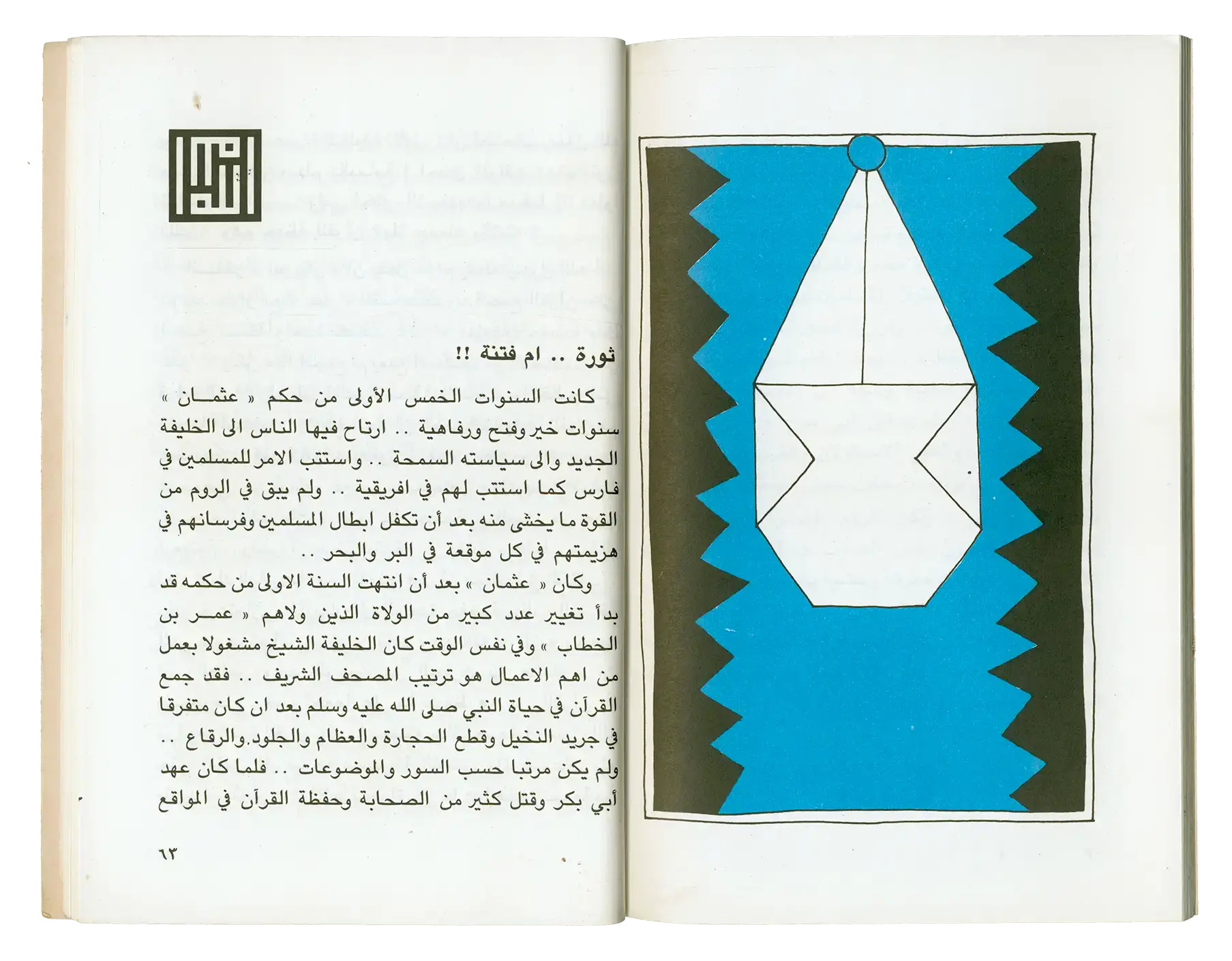
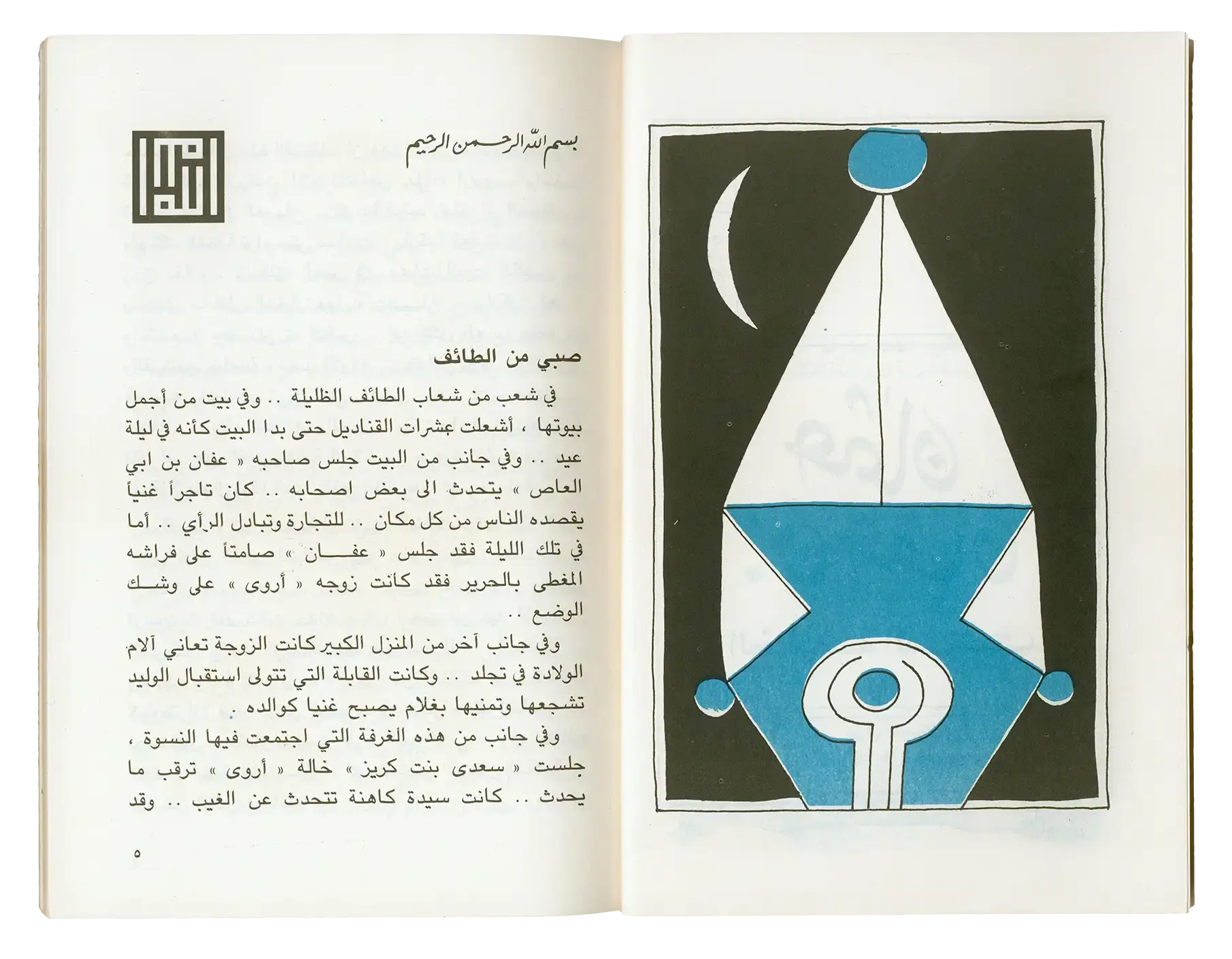
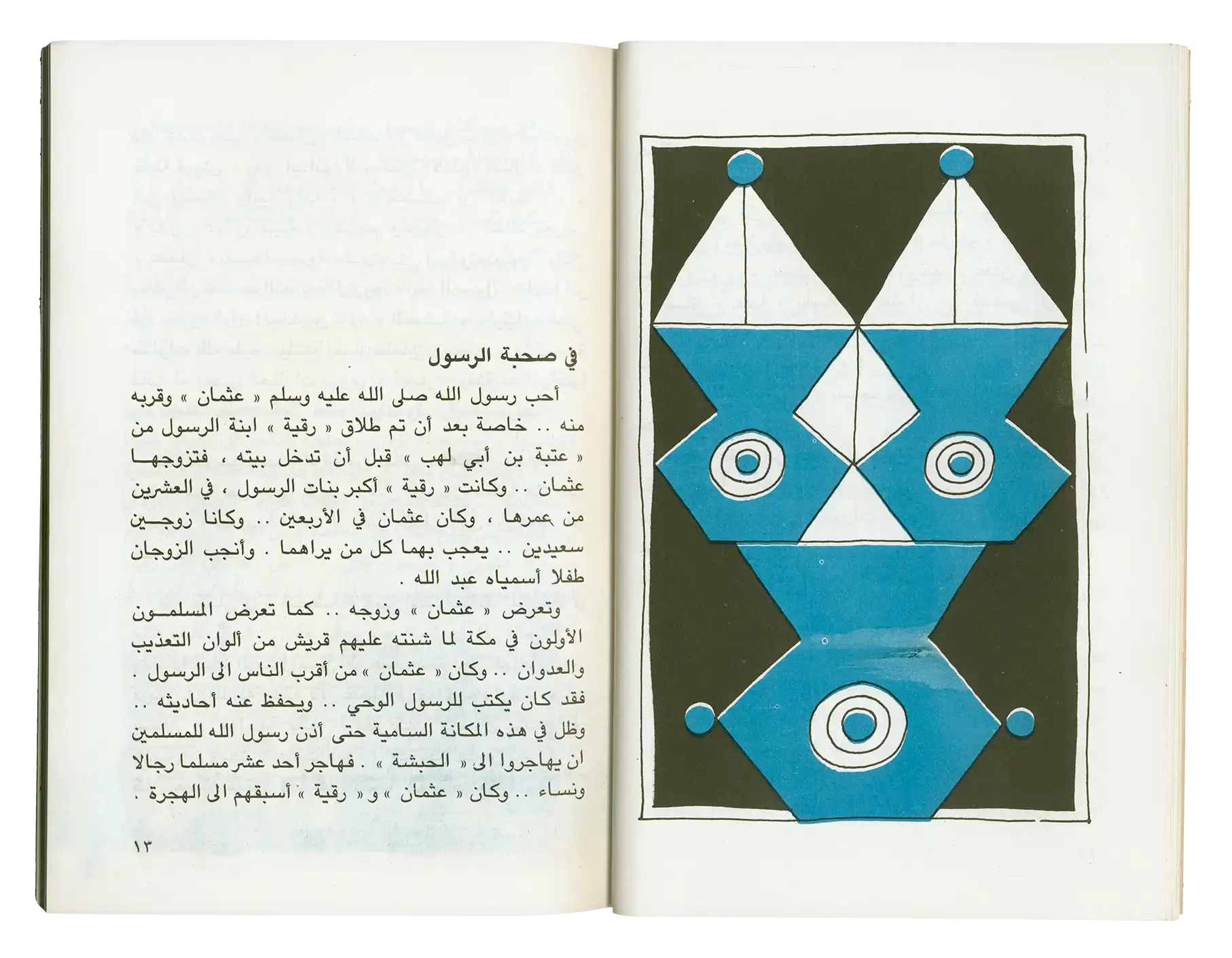
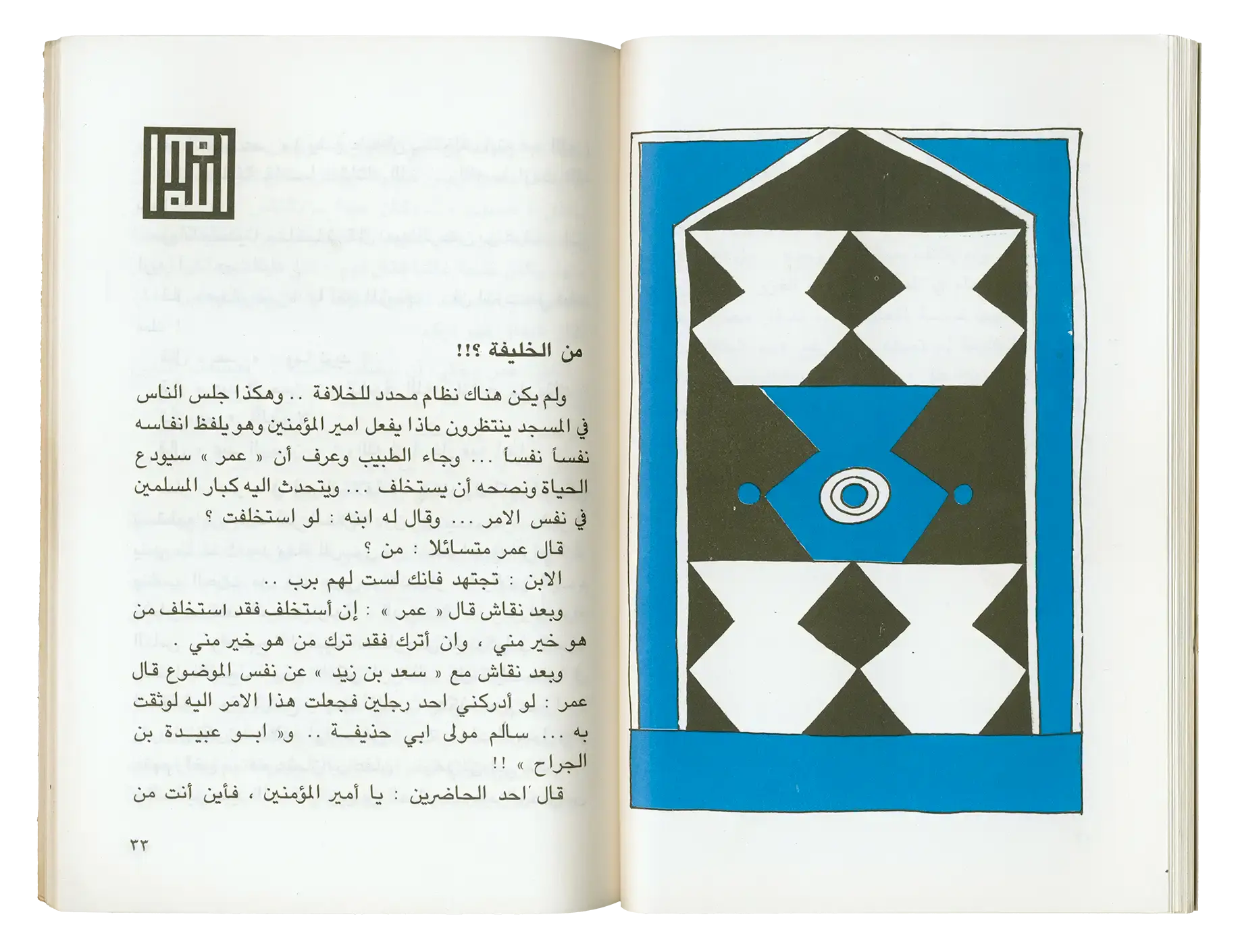
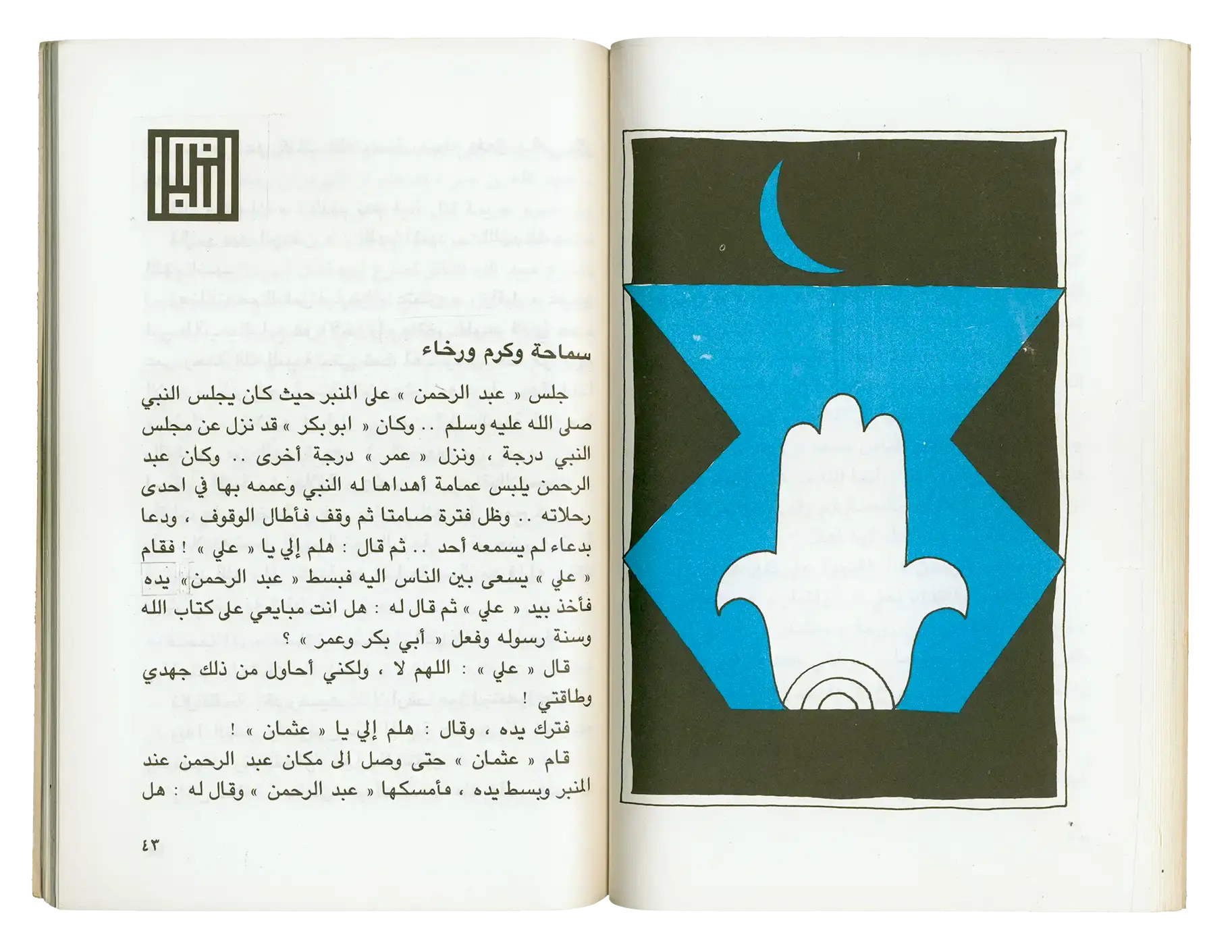
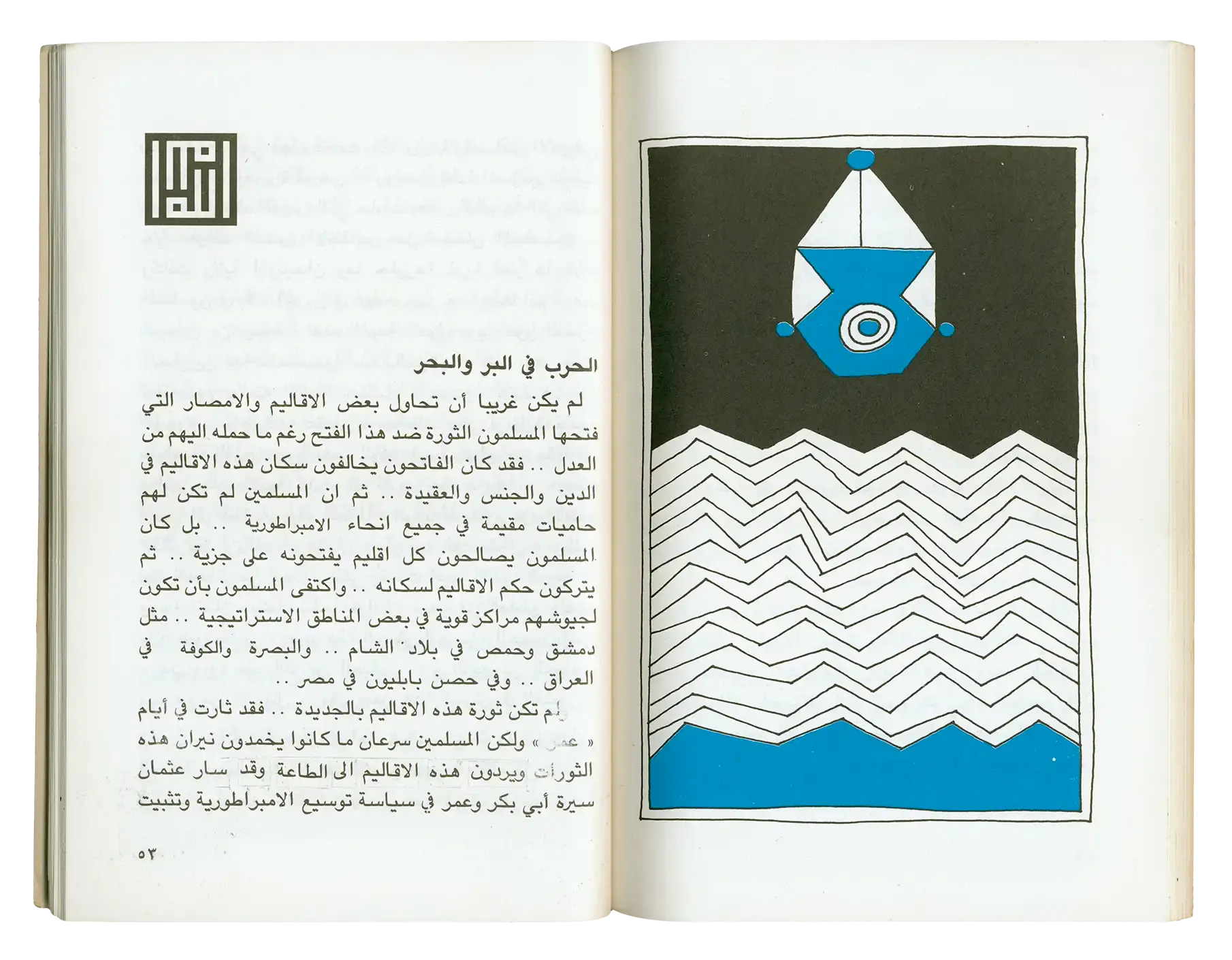
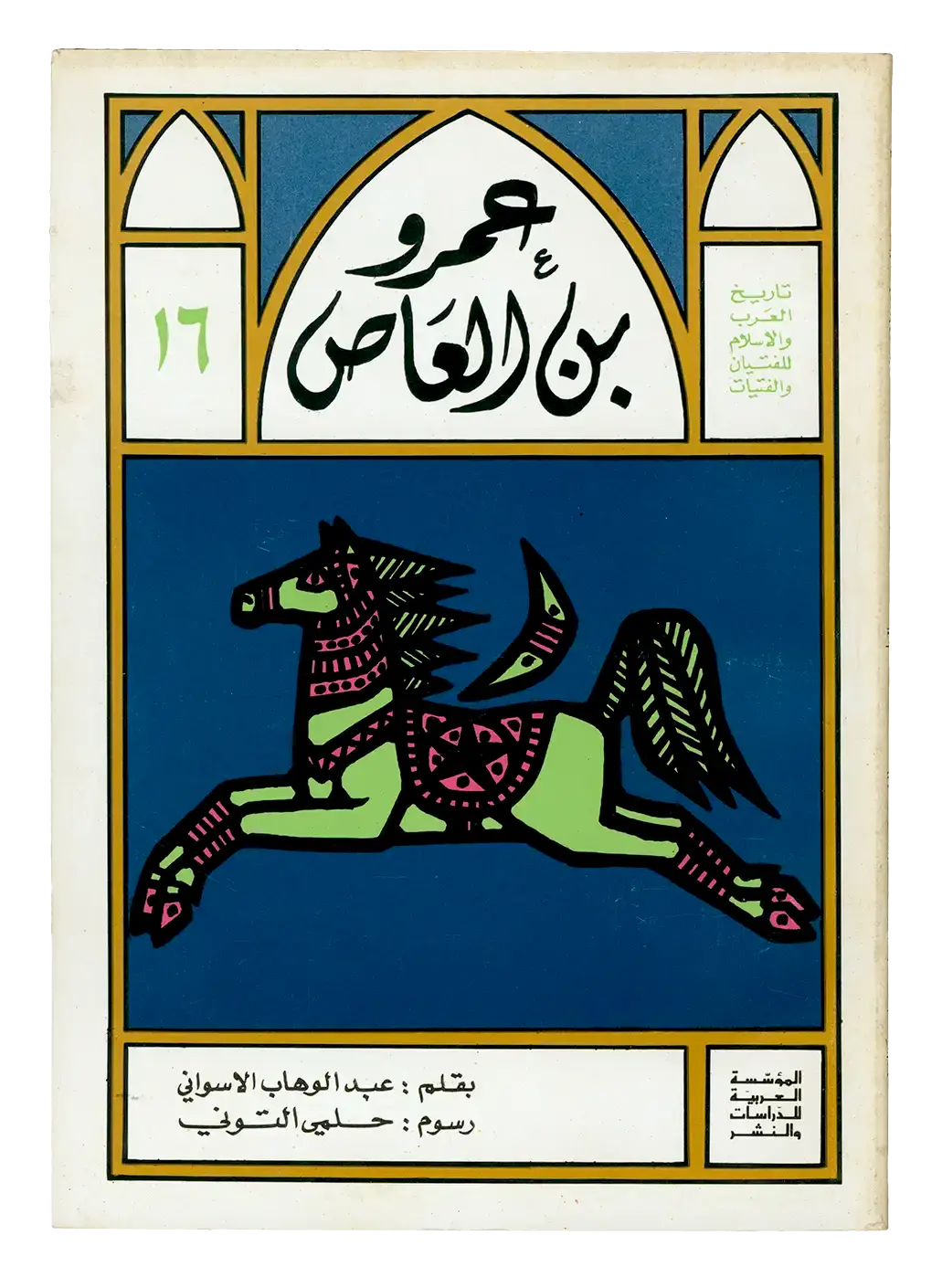
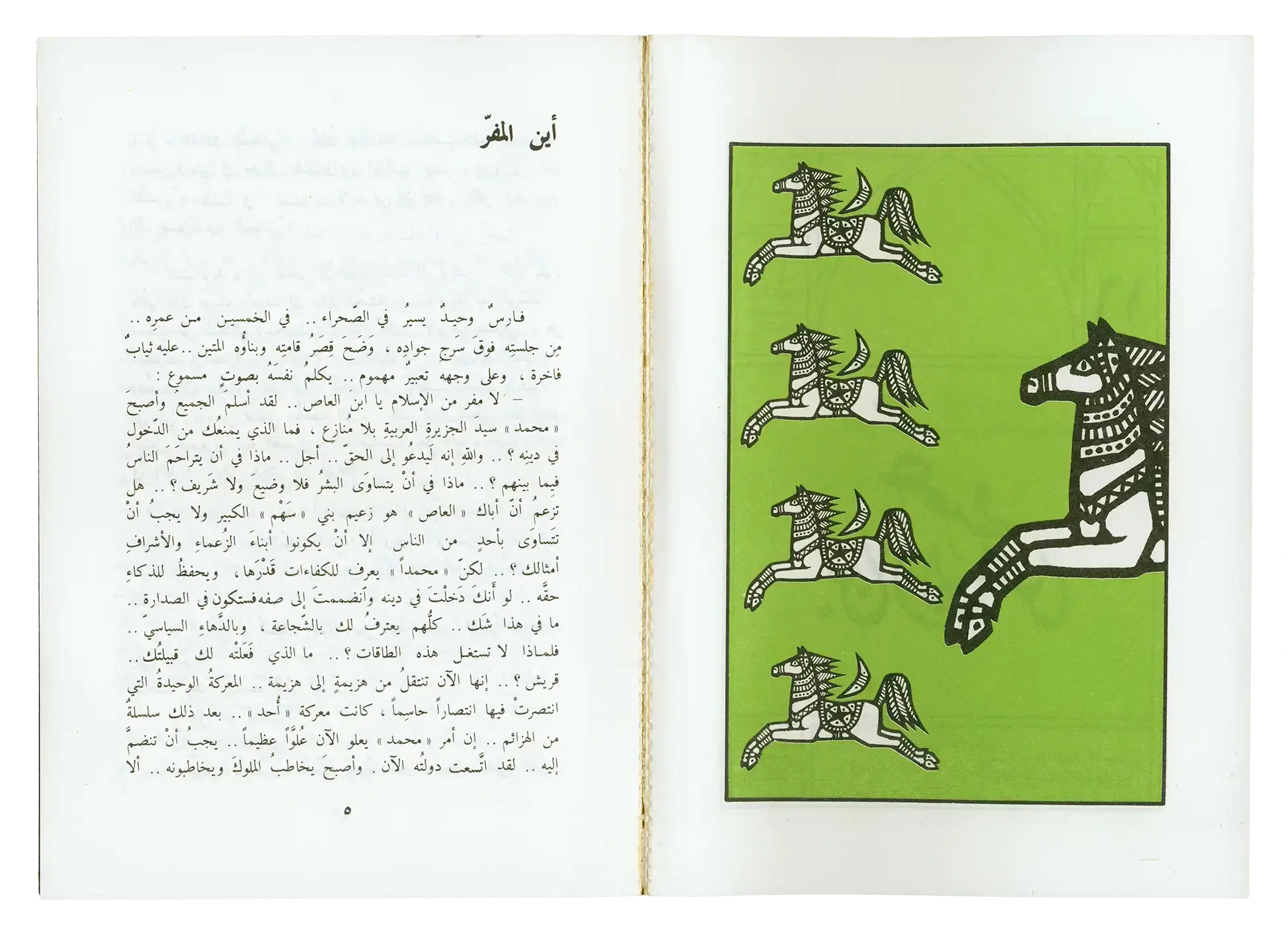
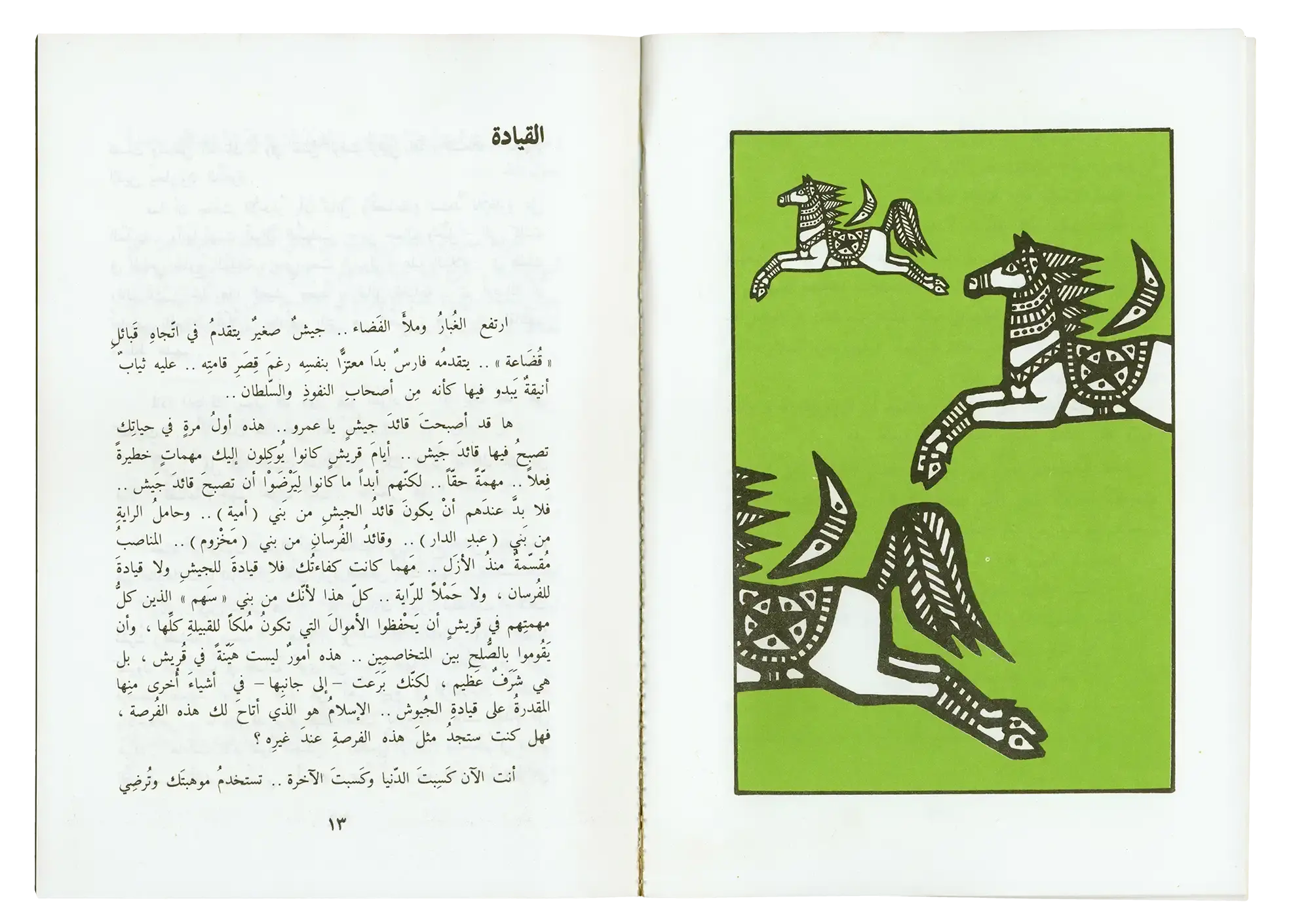
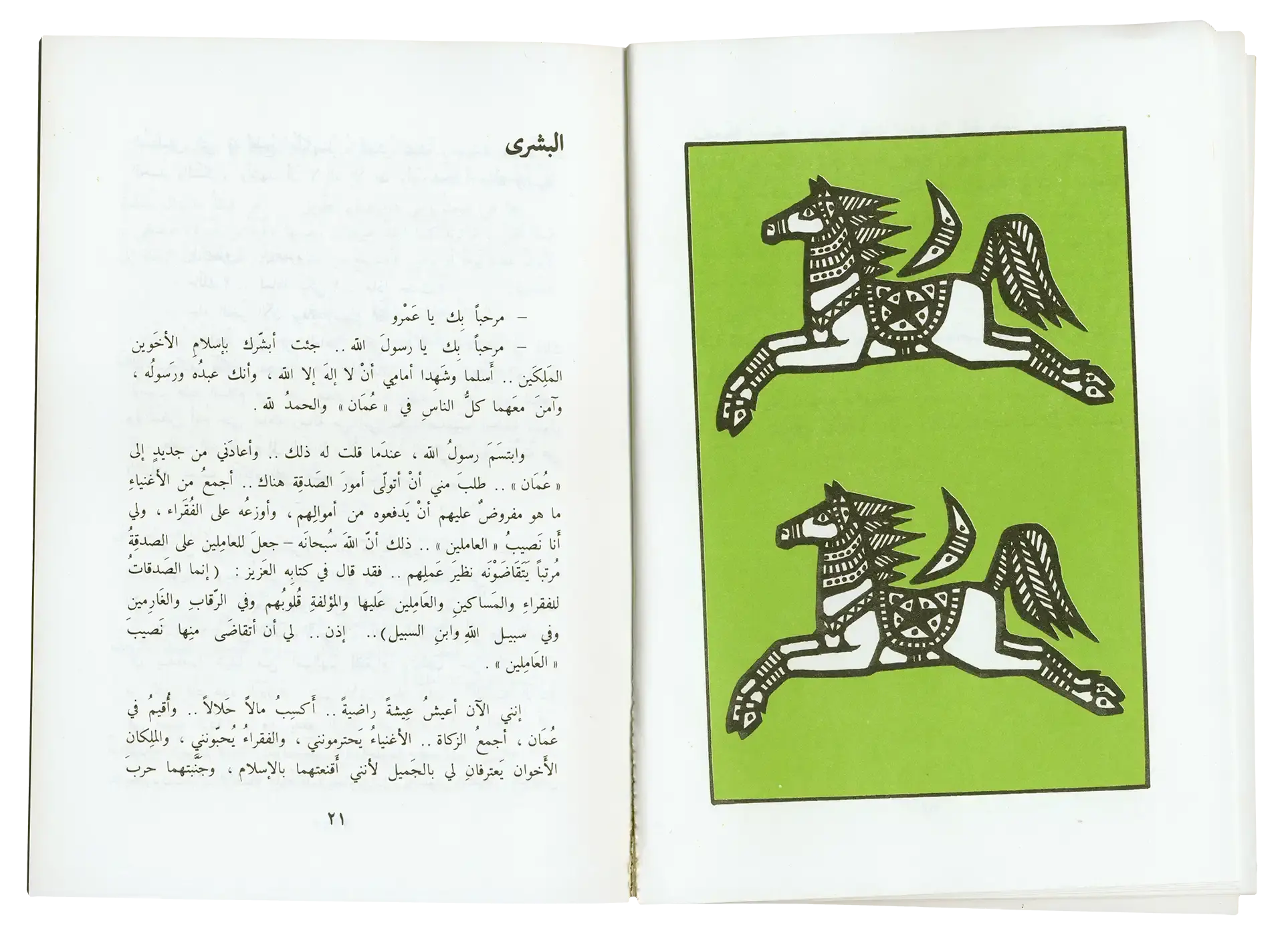
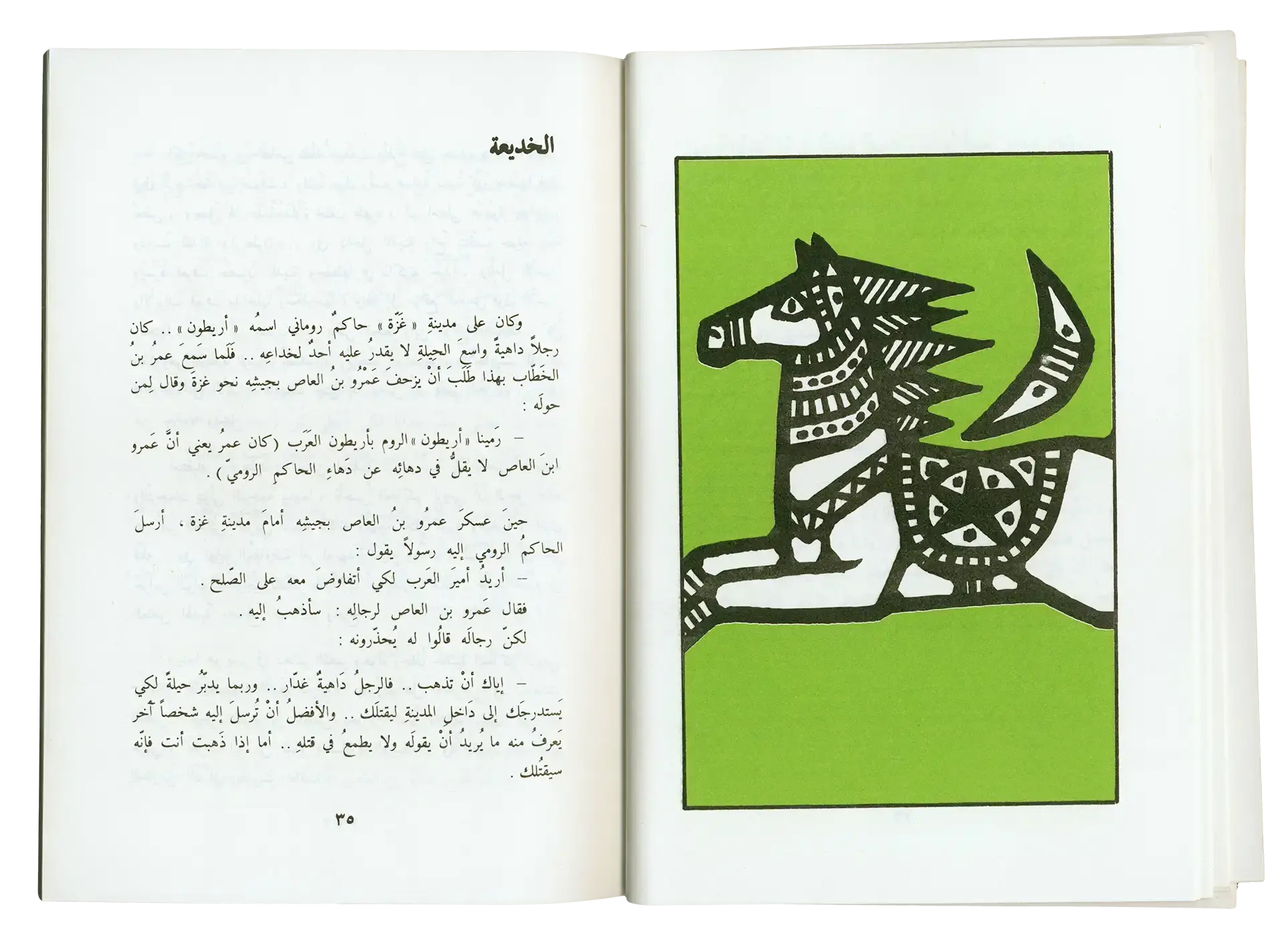
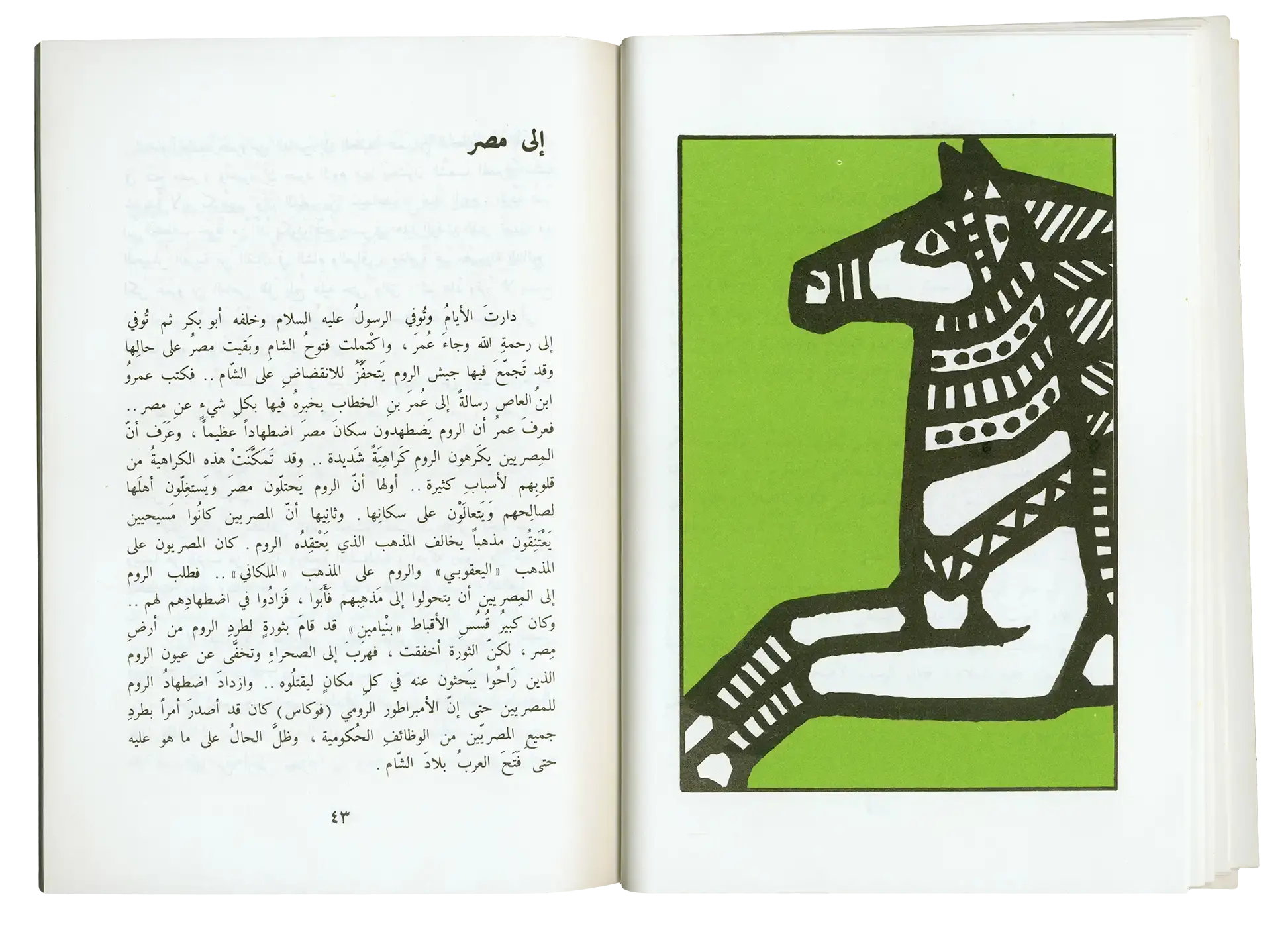
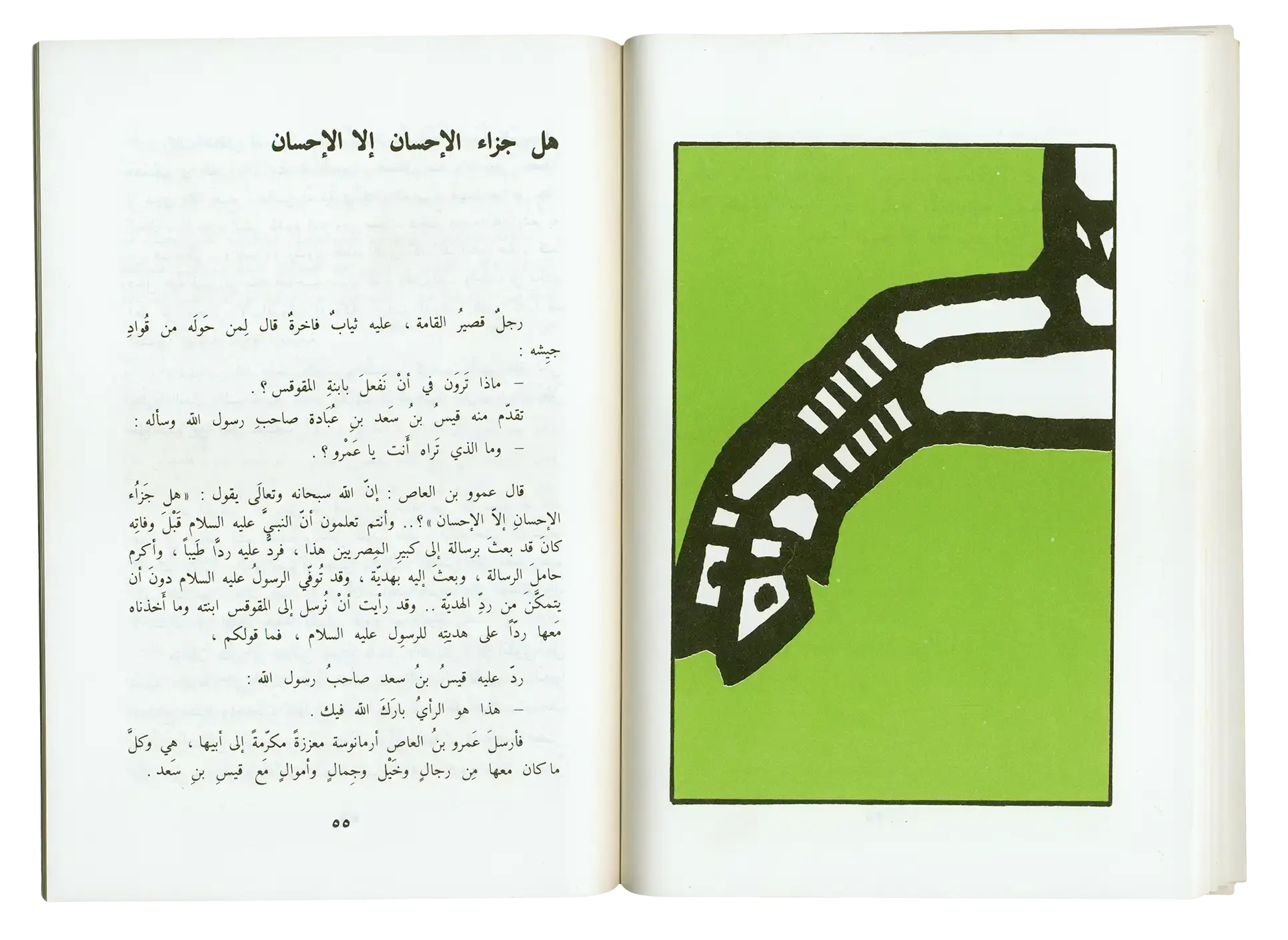
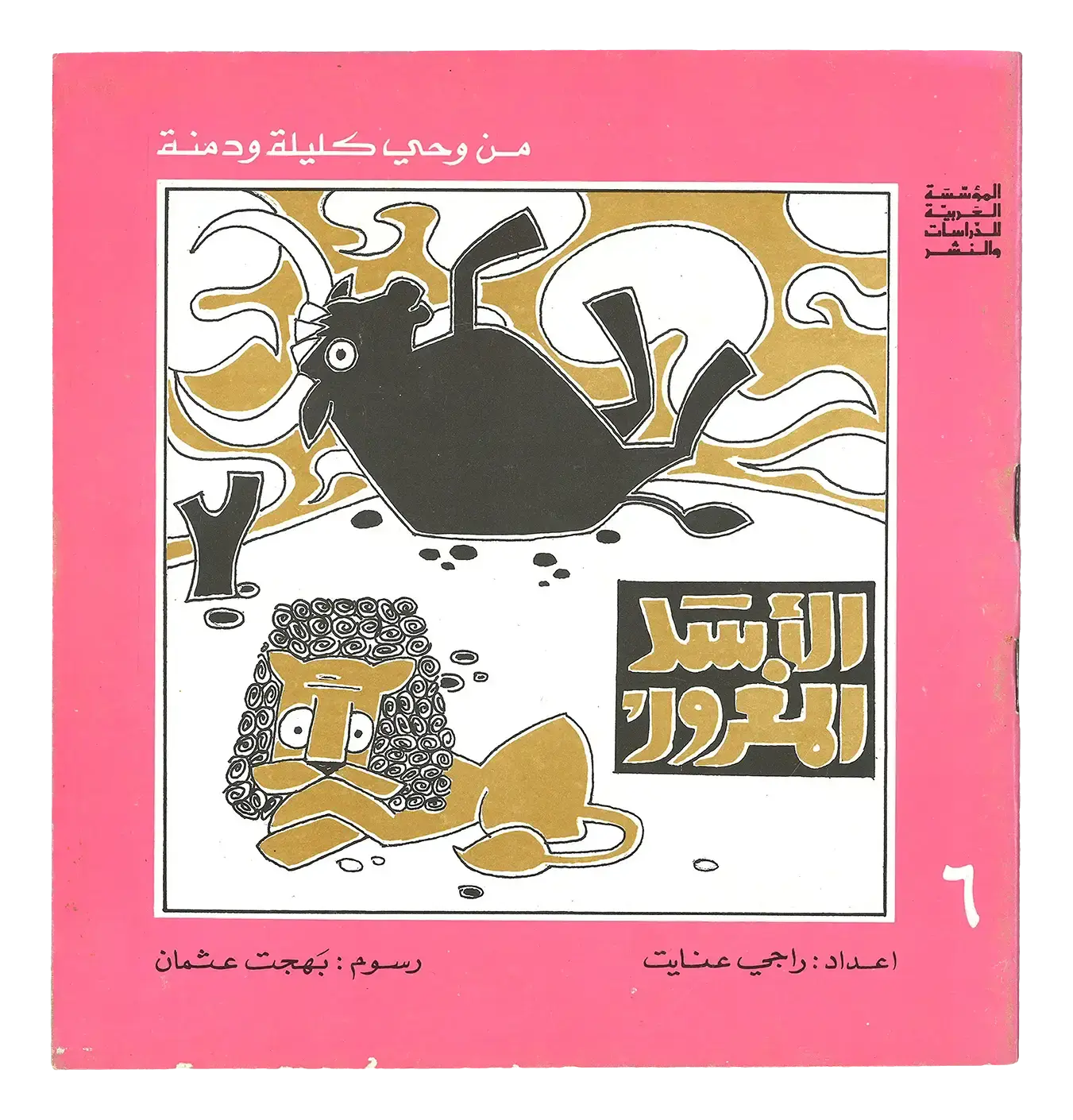
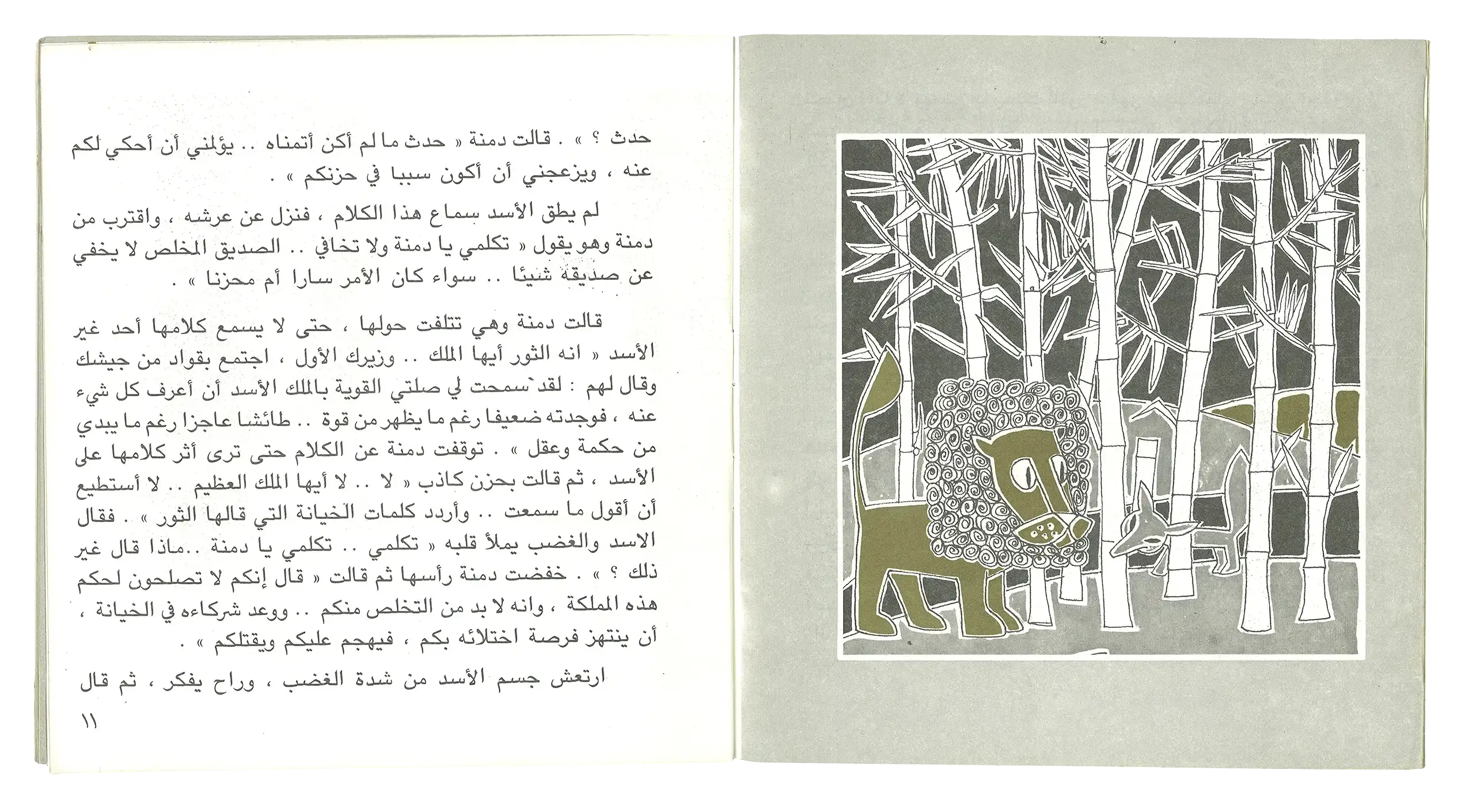
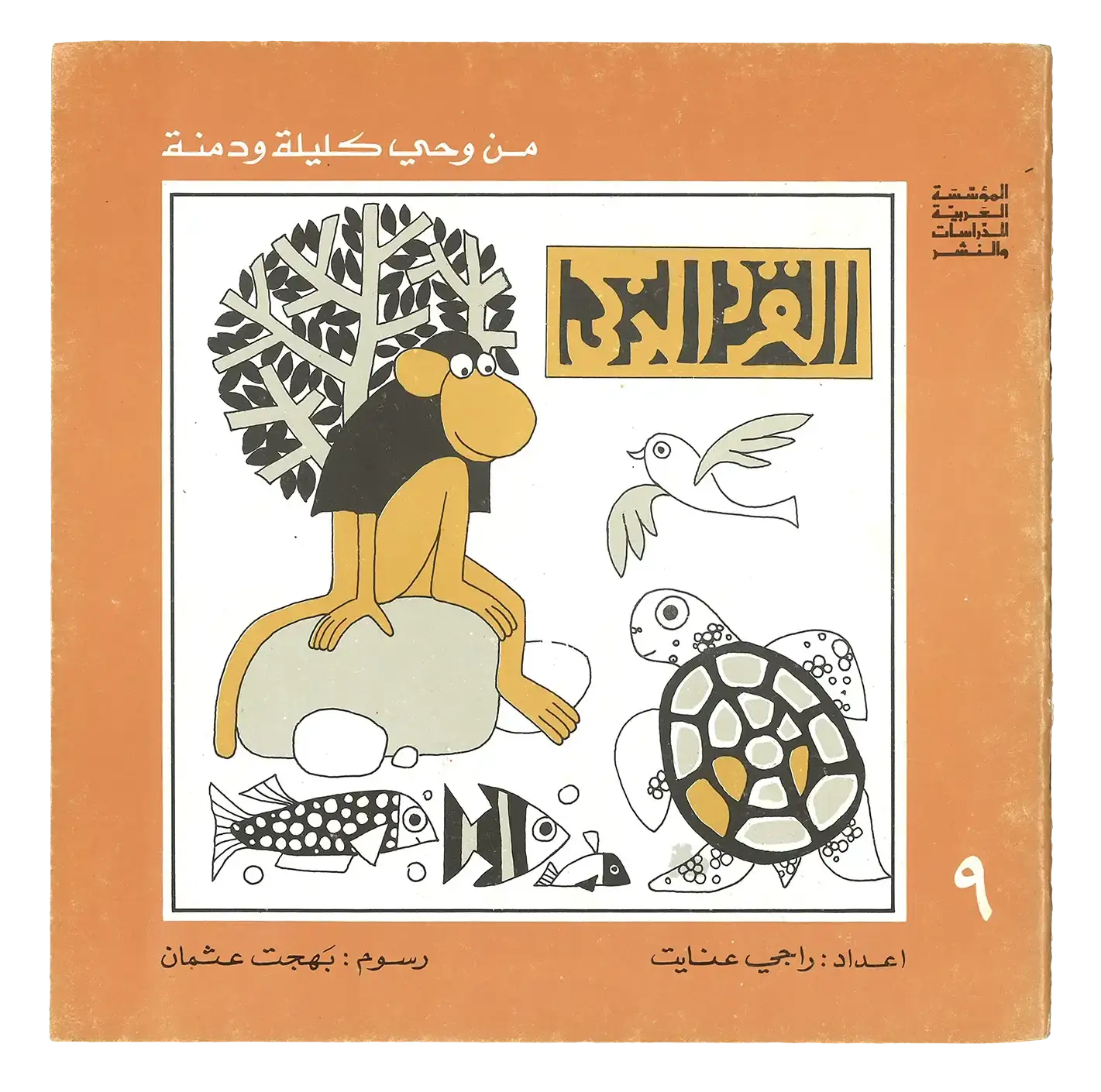

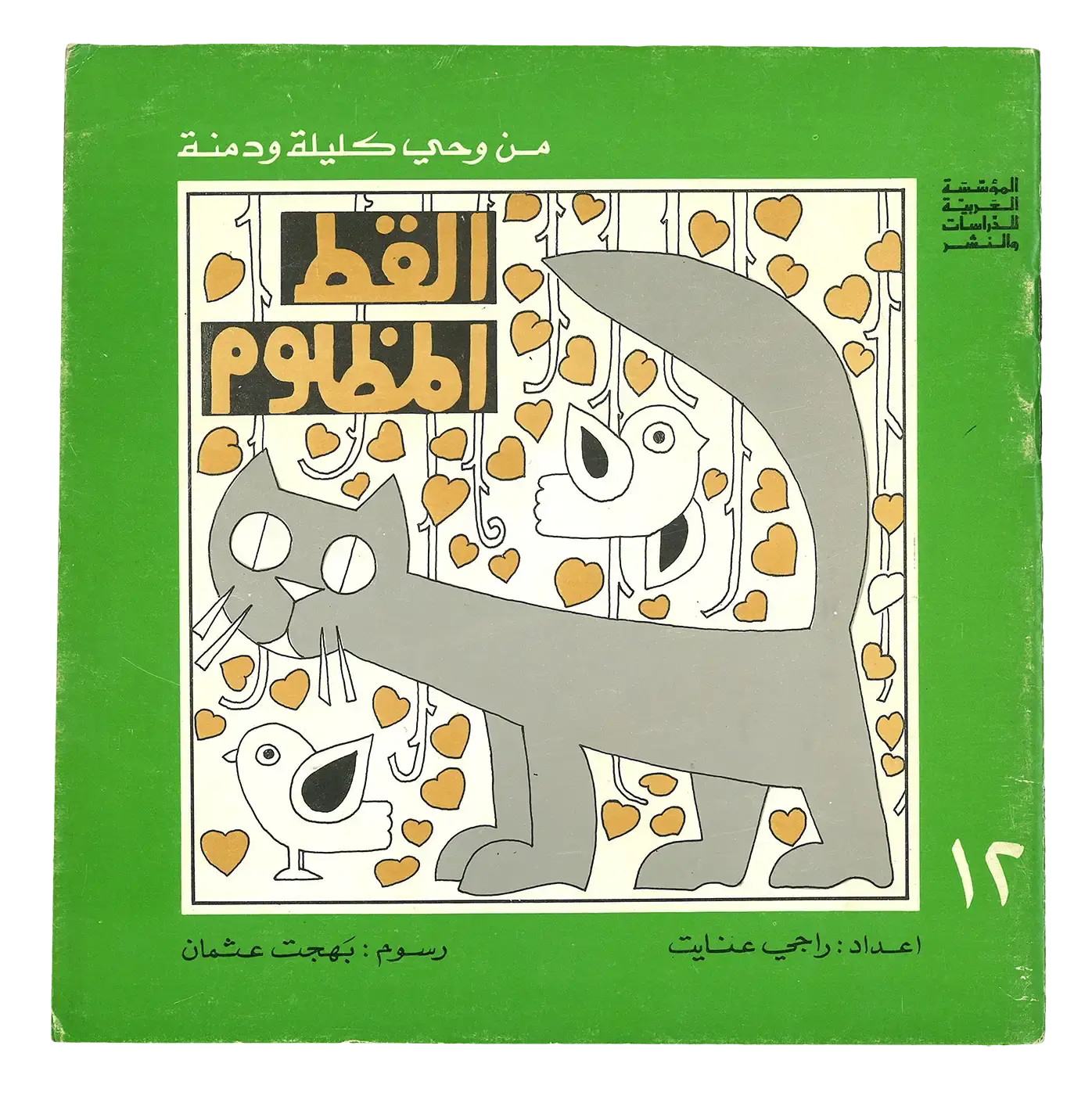
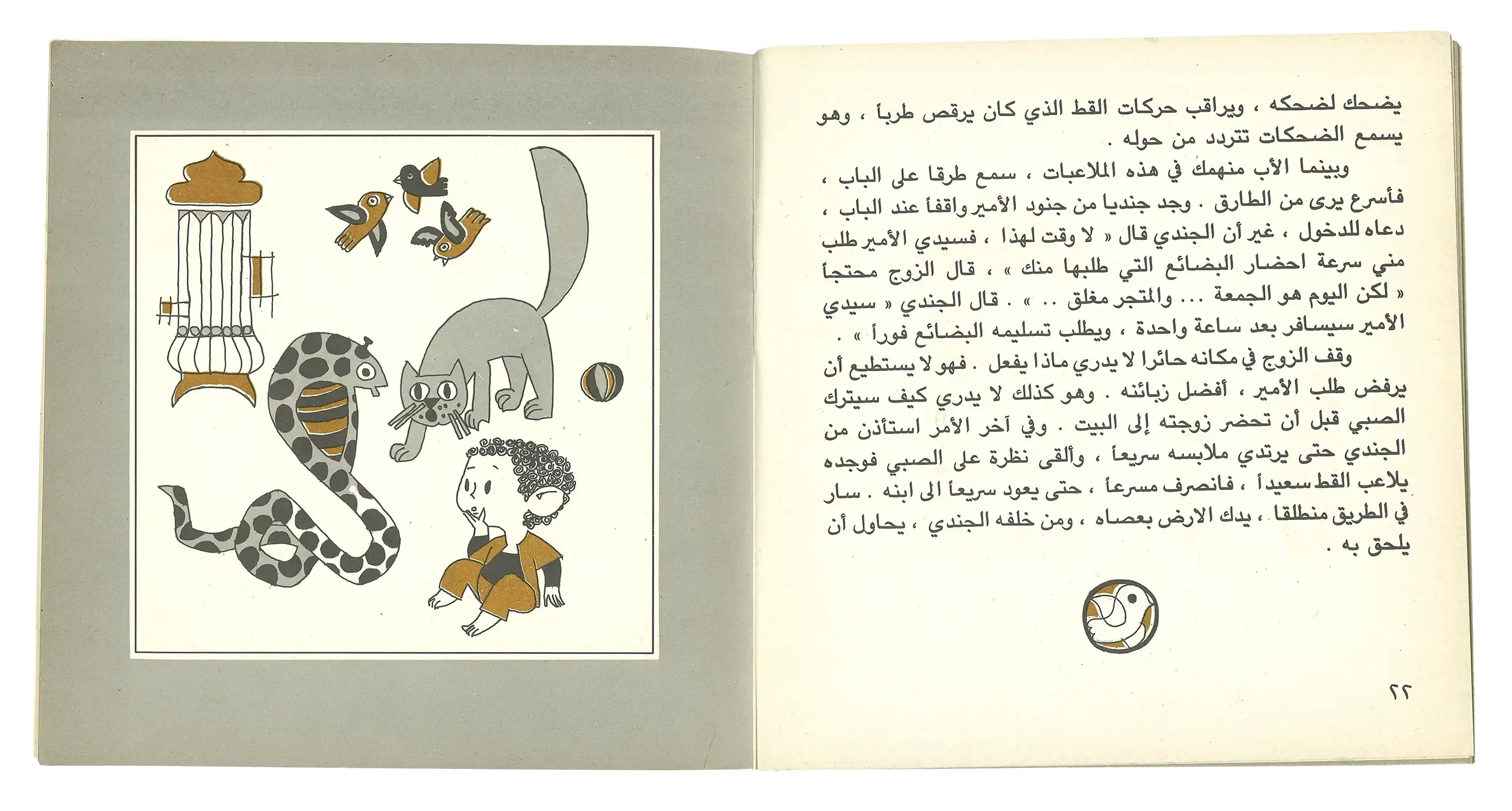
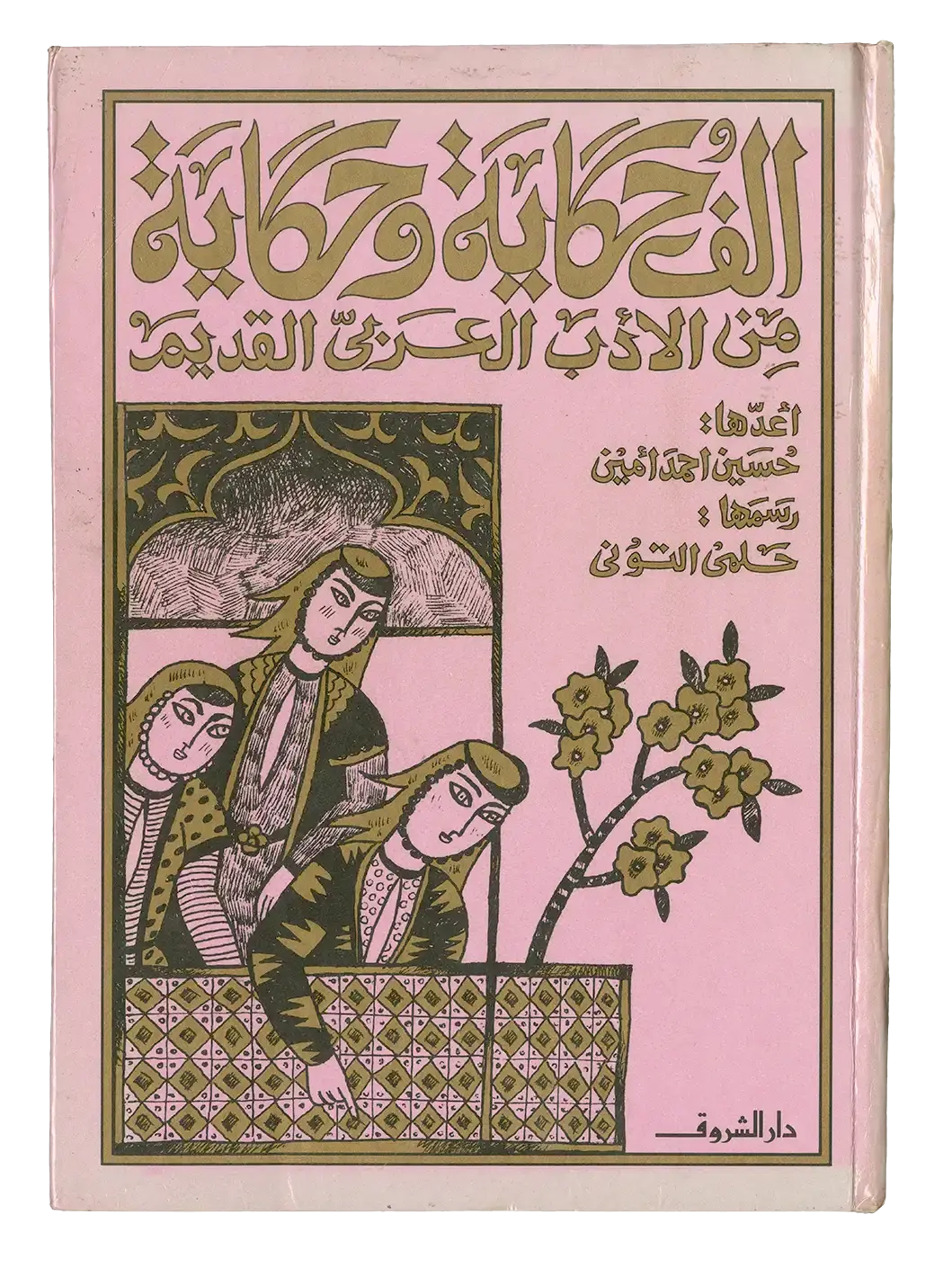
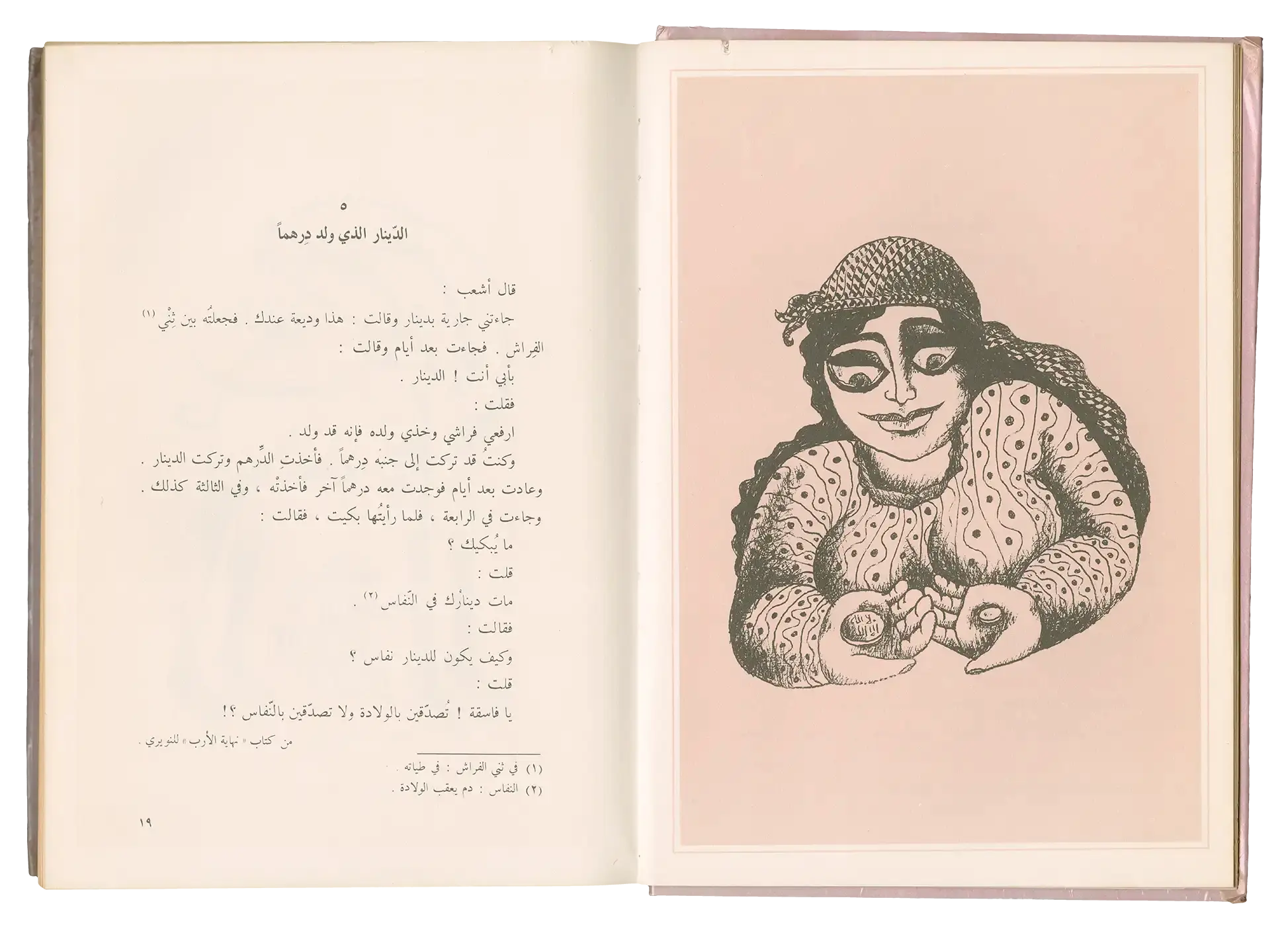

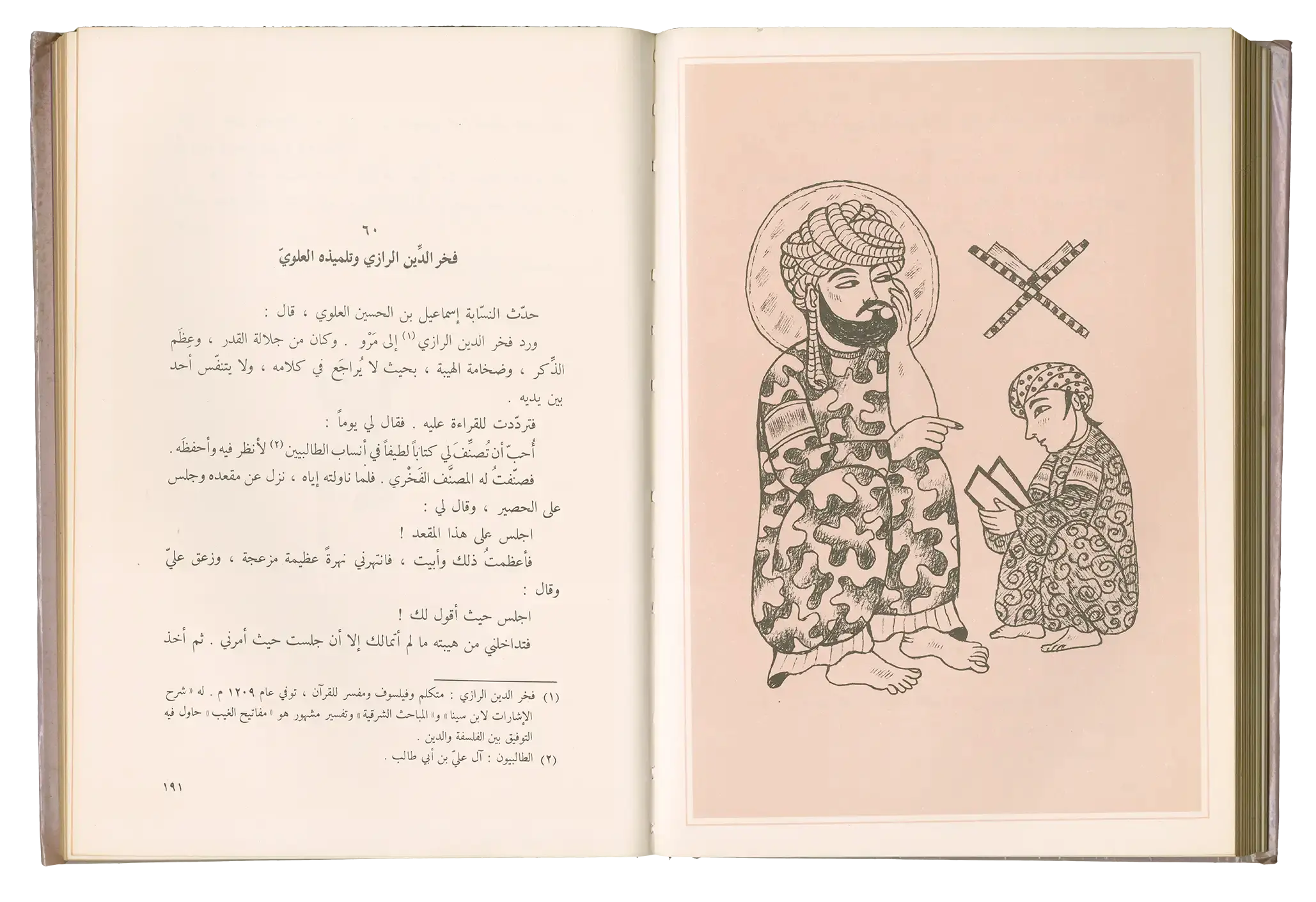
استعادة الفن والتصميم
Locating Art and Design
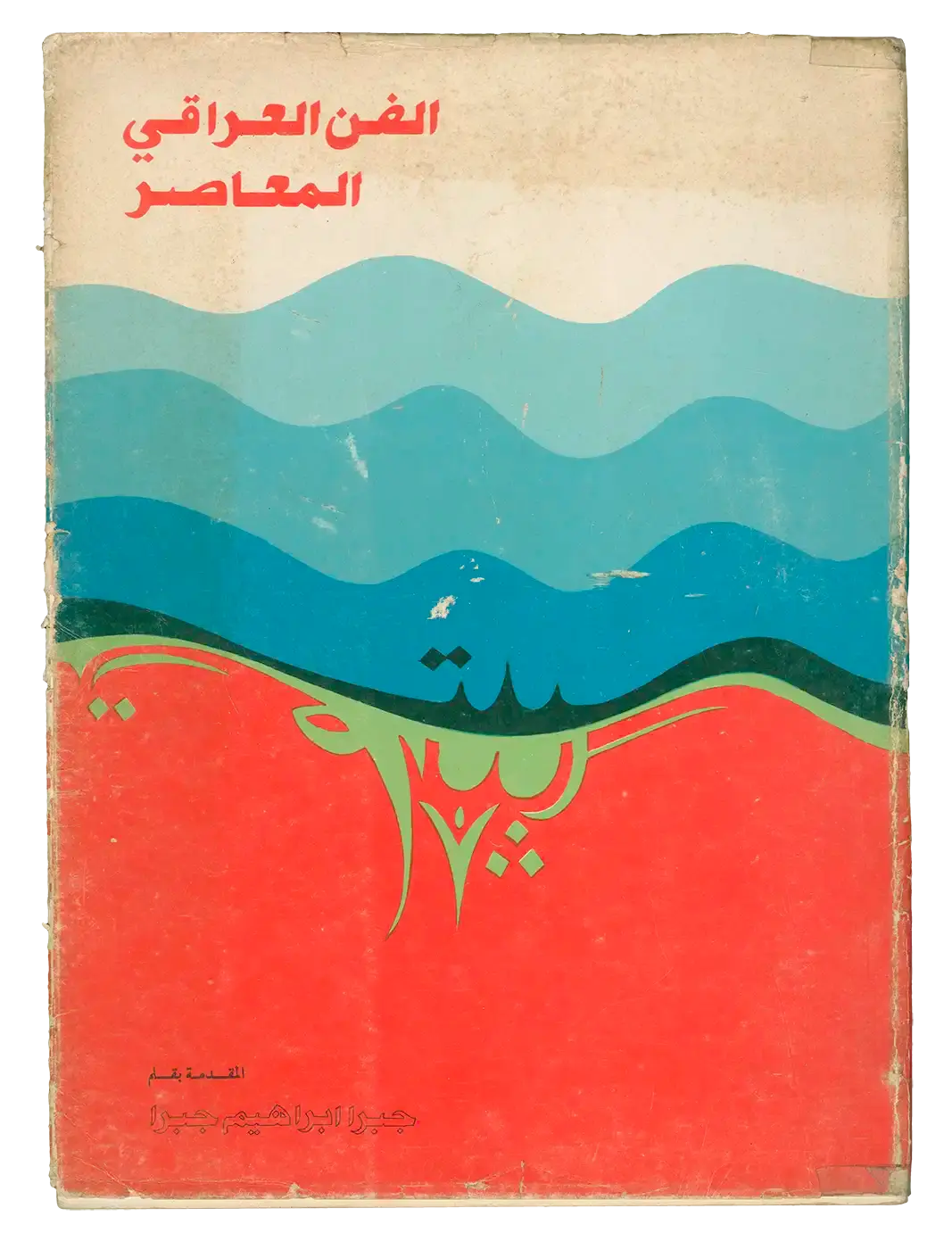
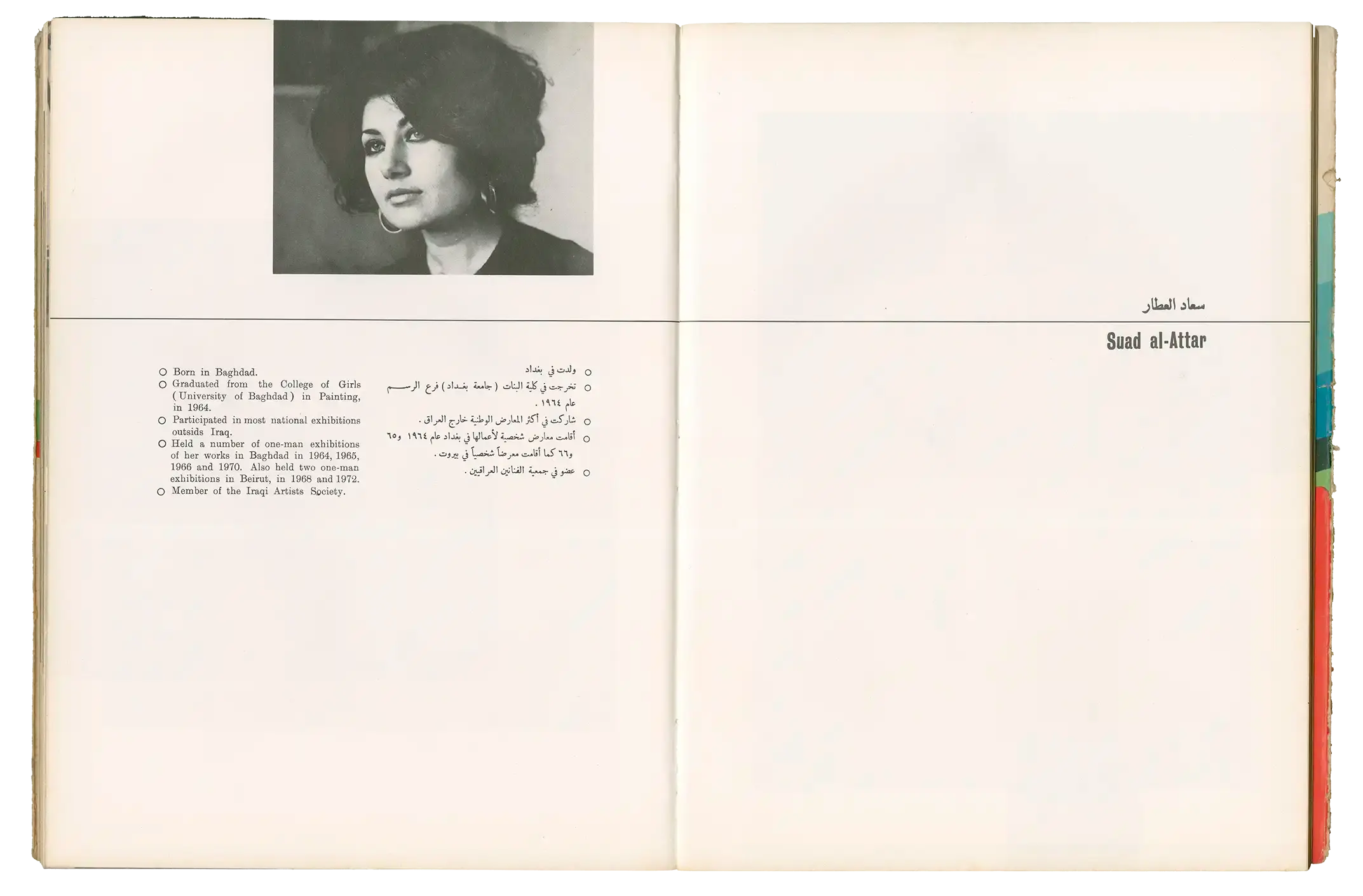
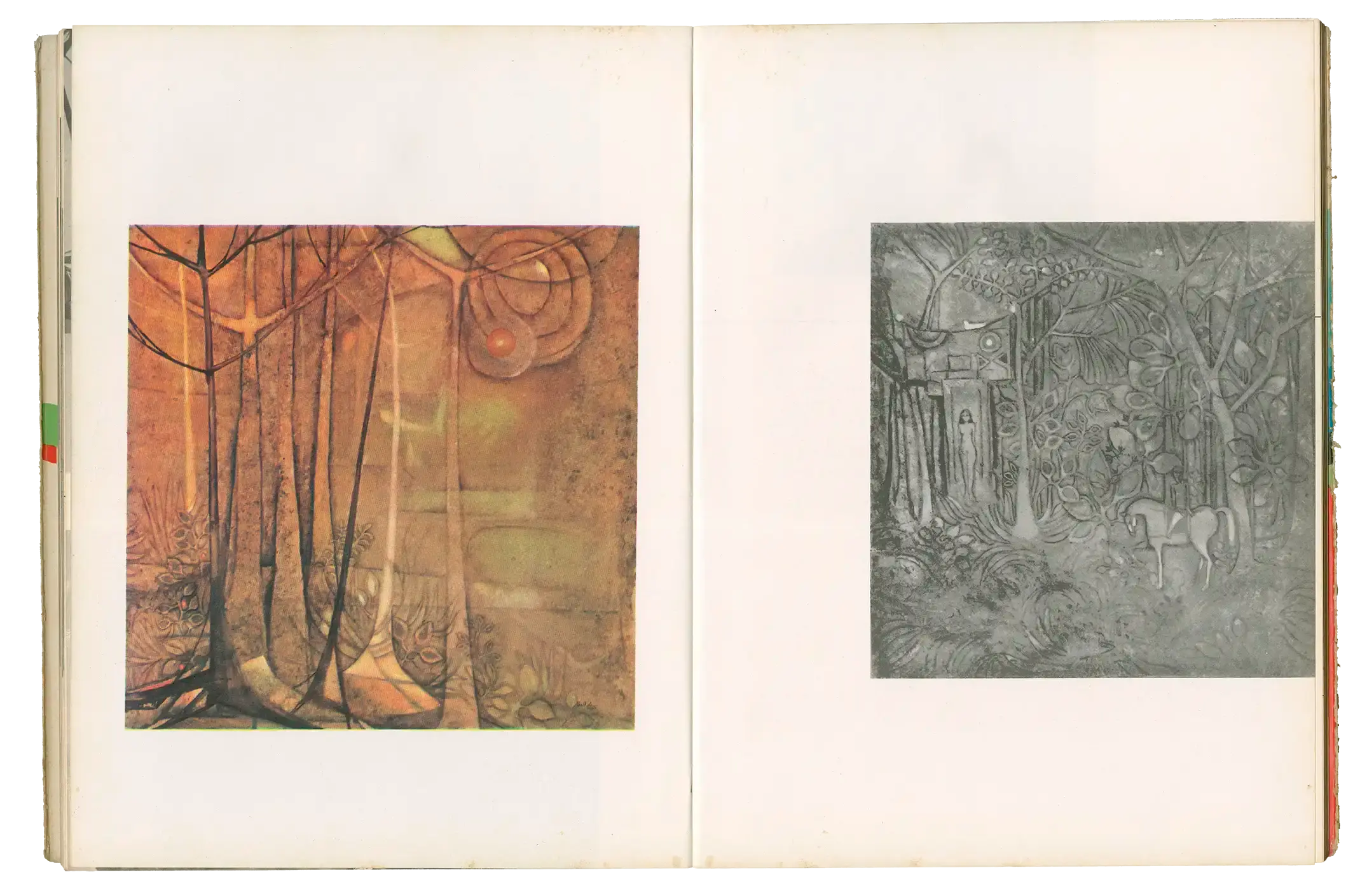
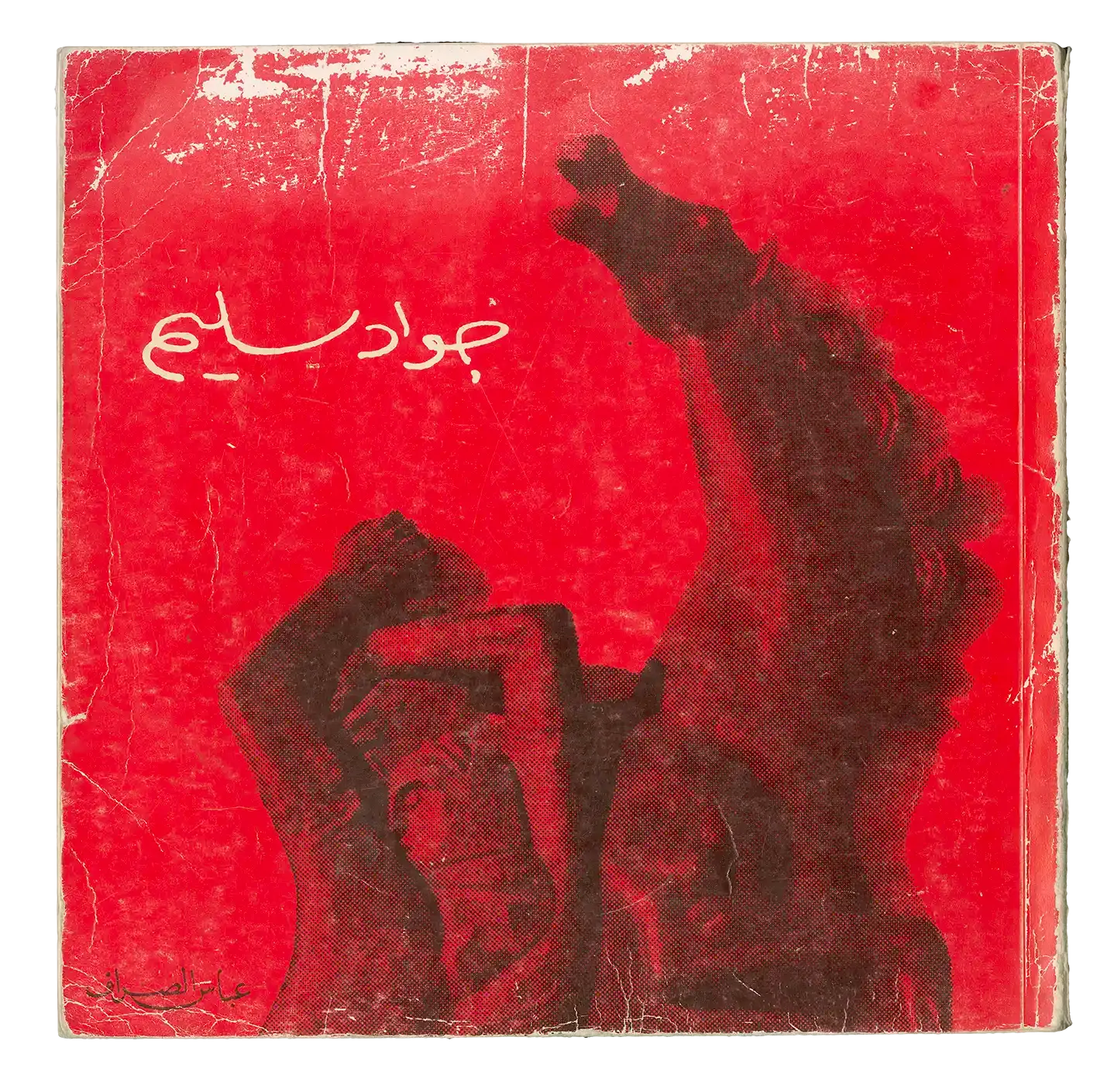
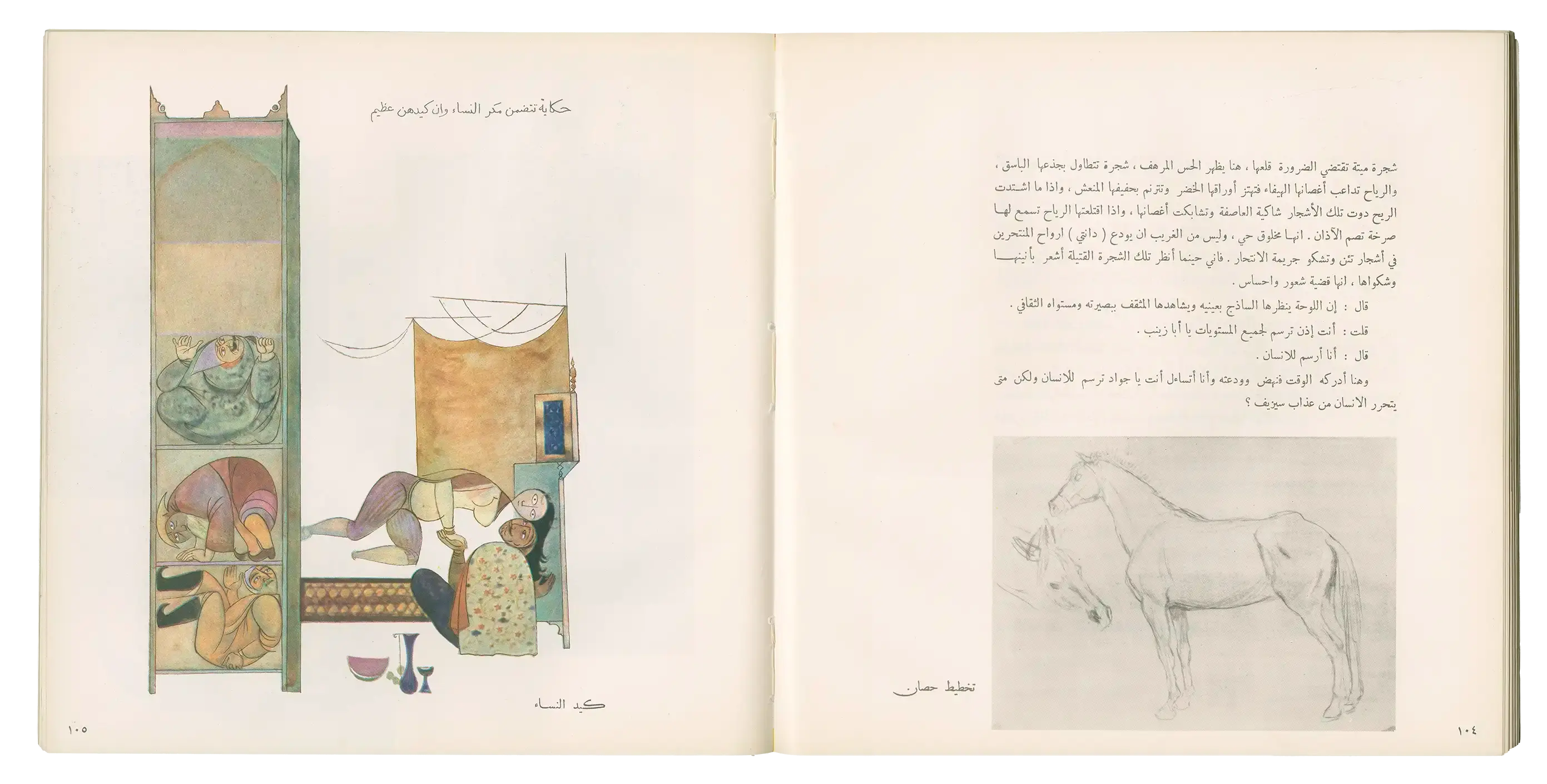
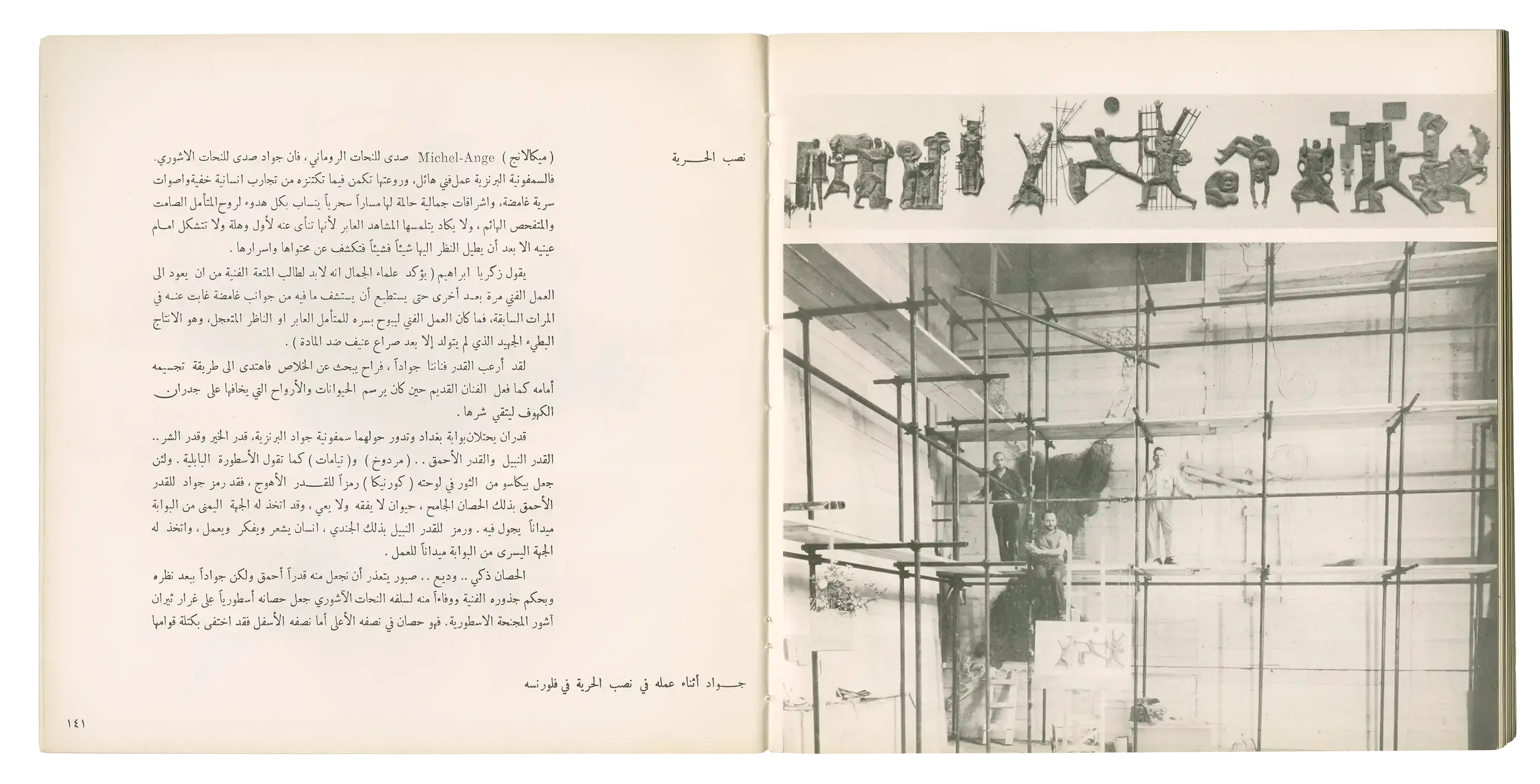
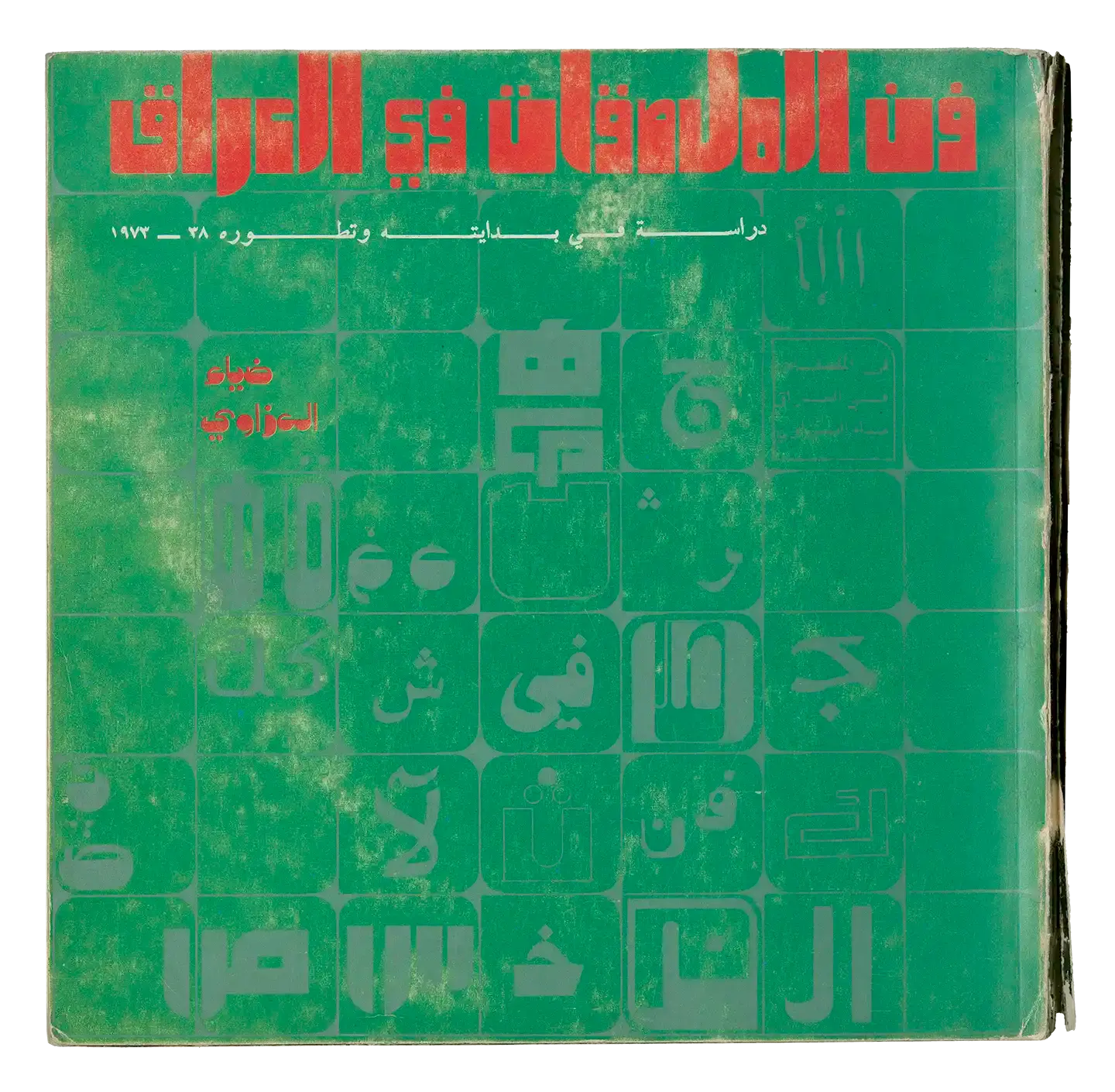
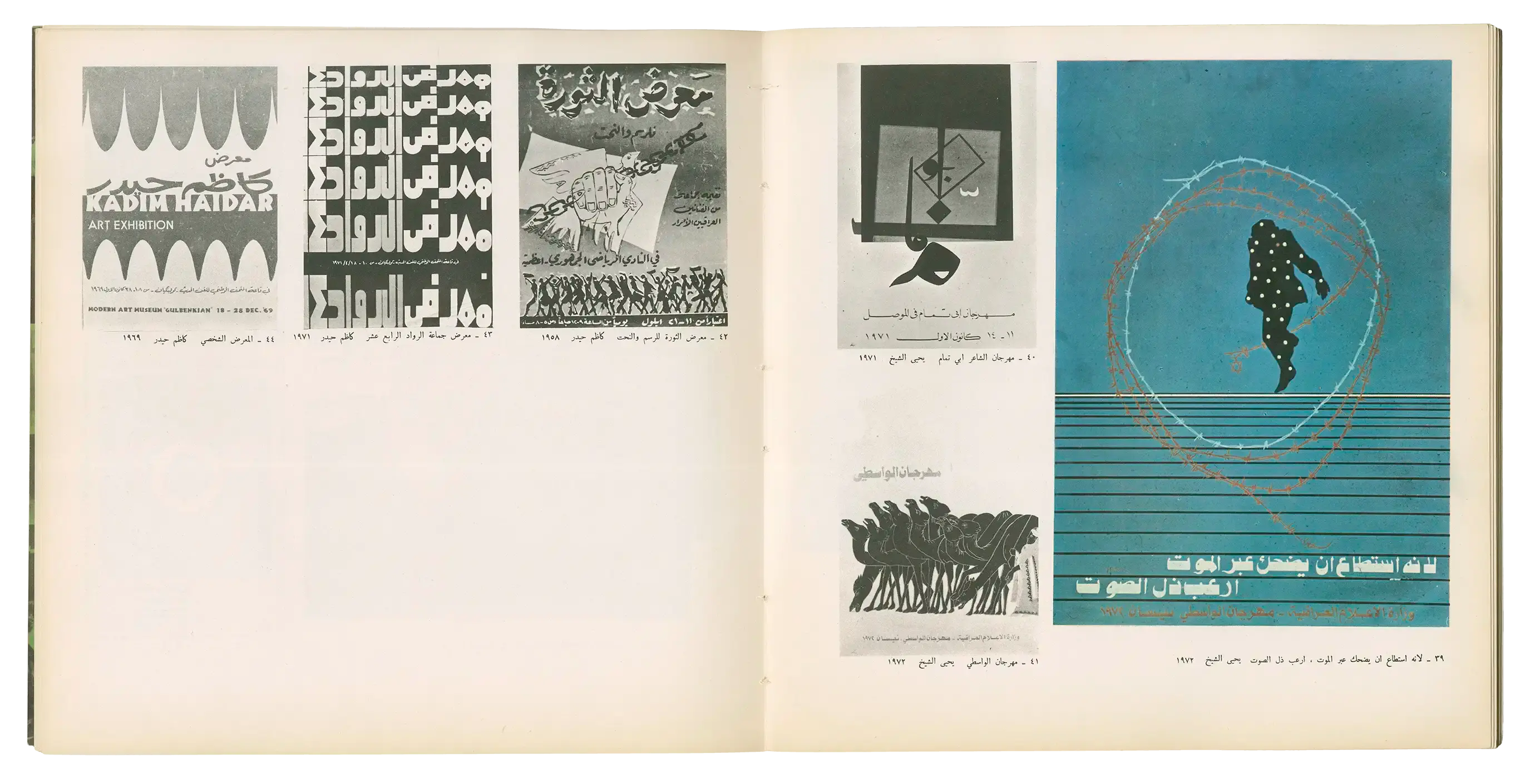
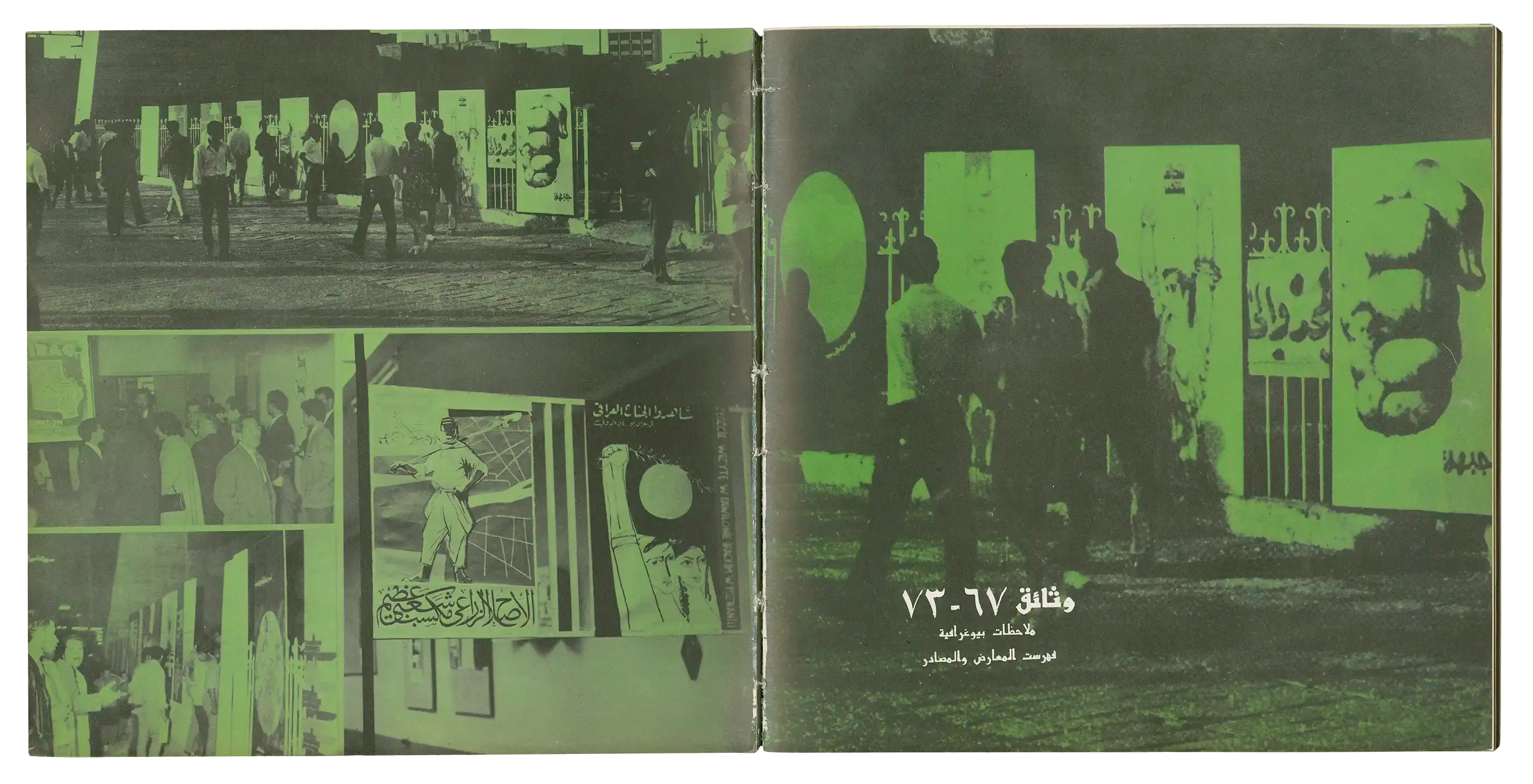
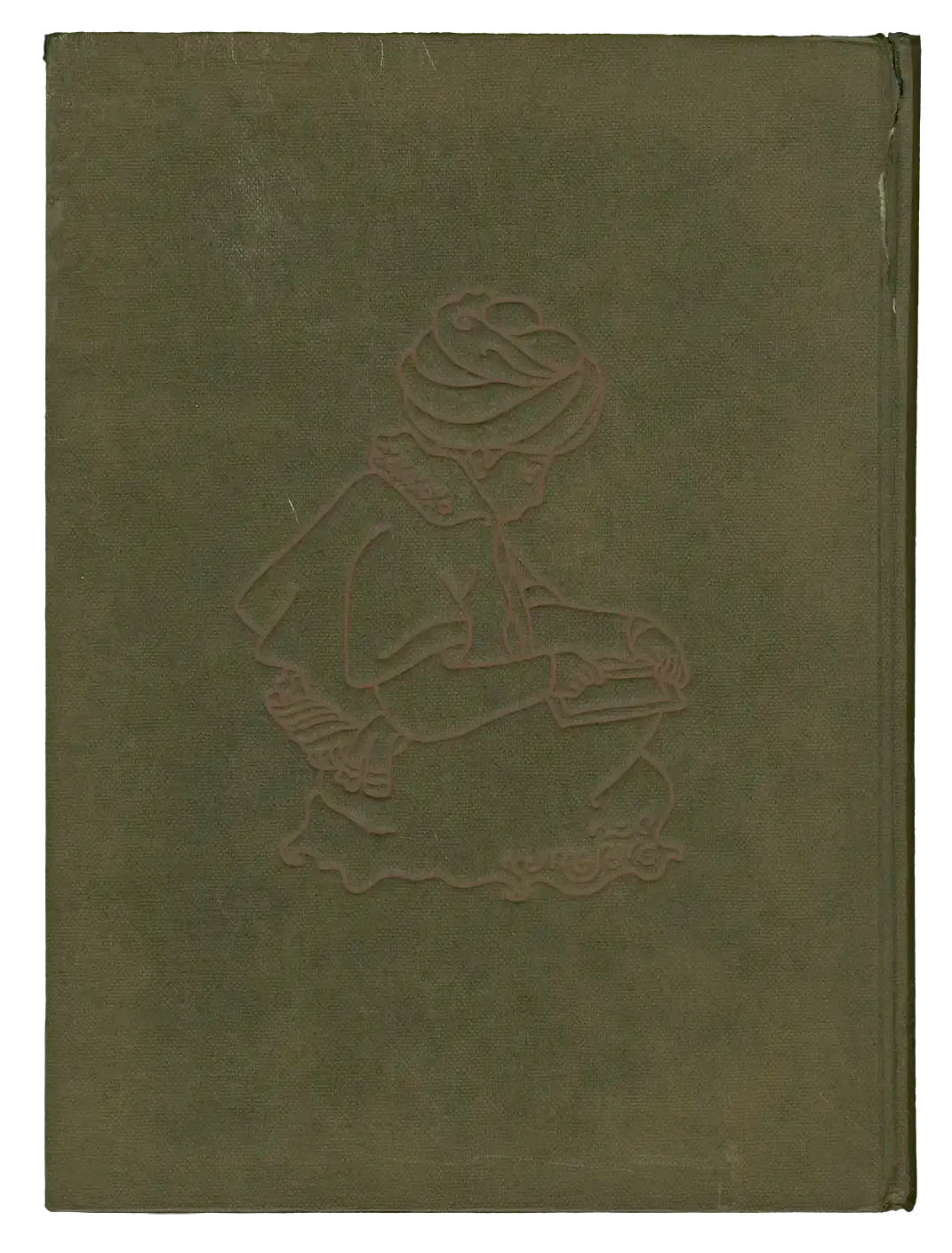
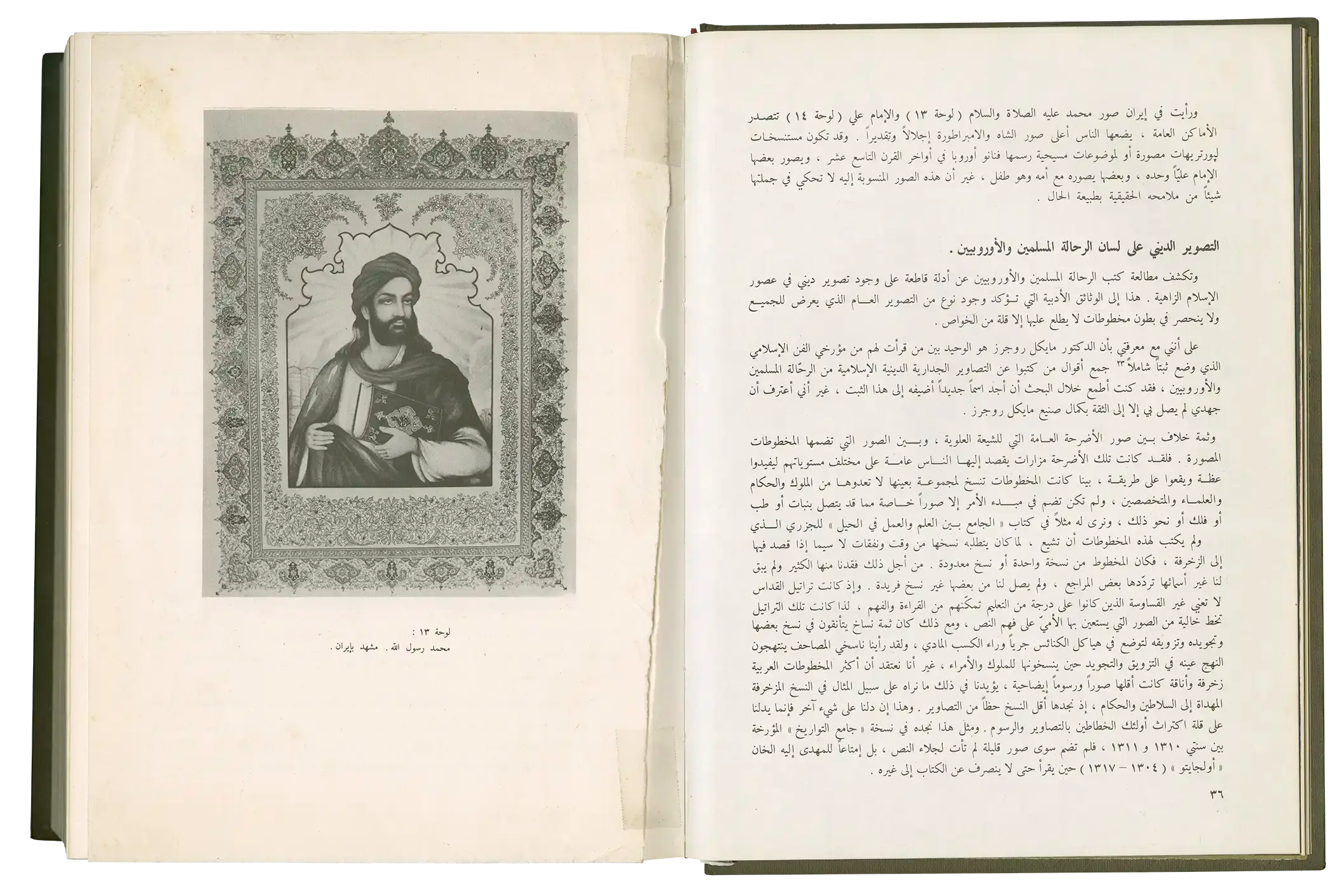
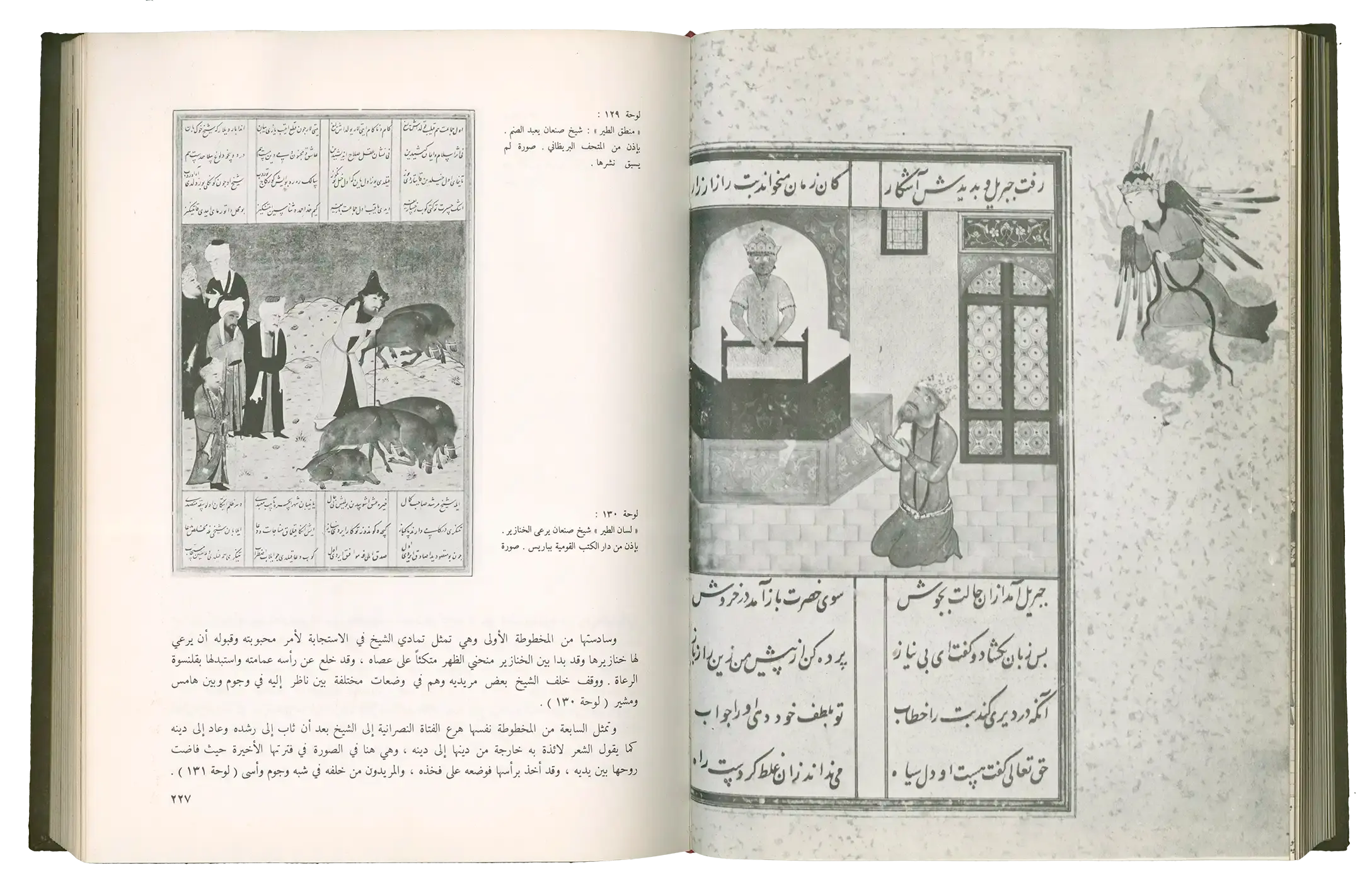
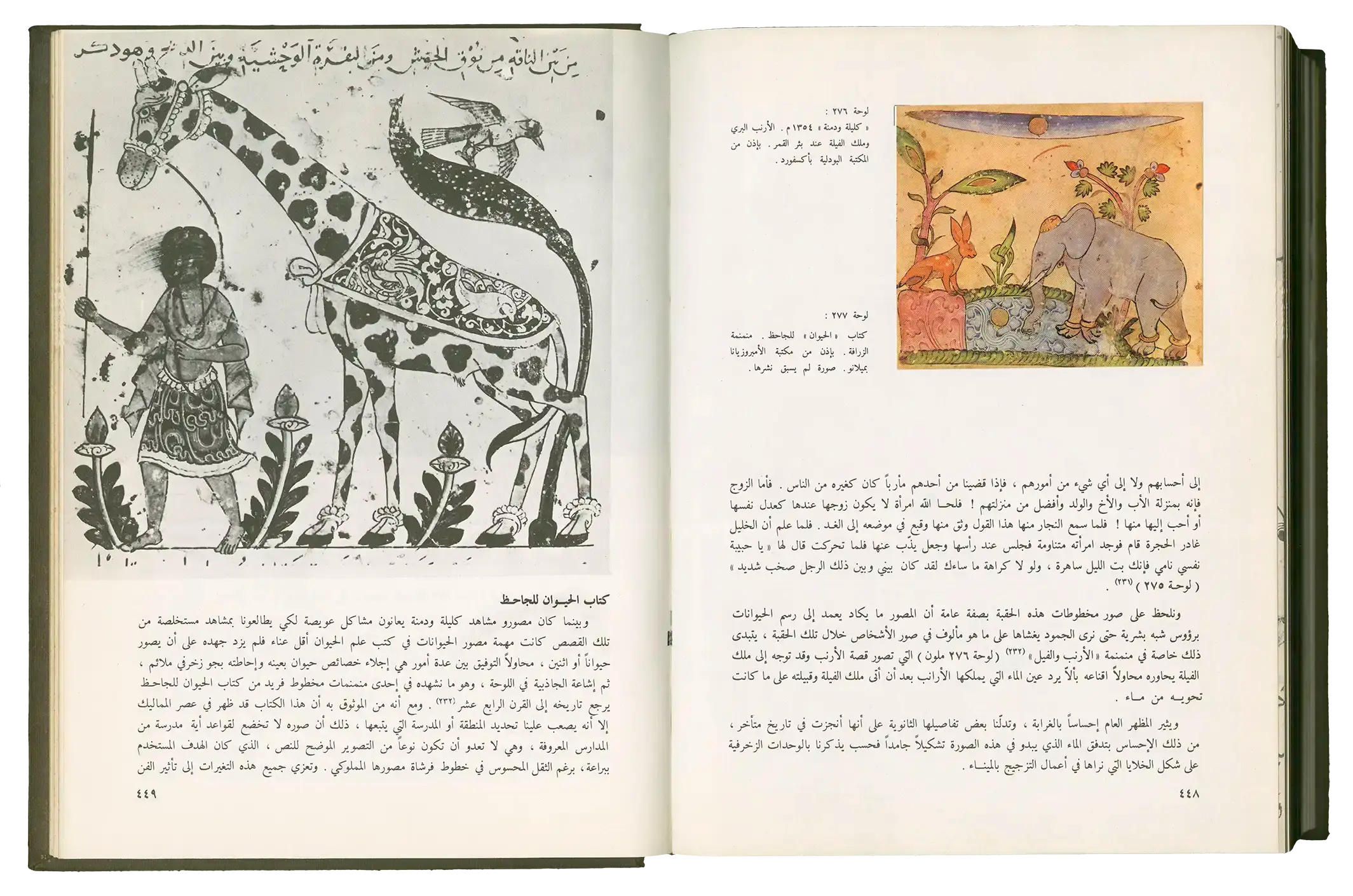
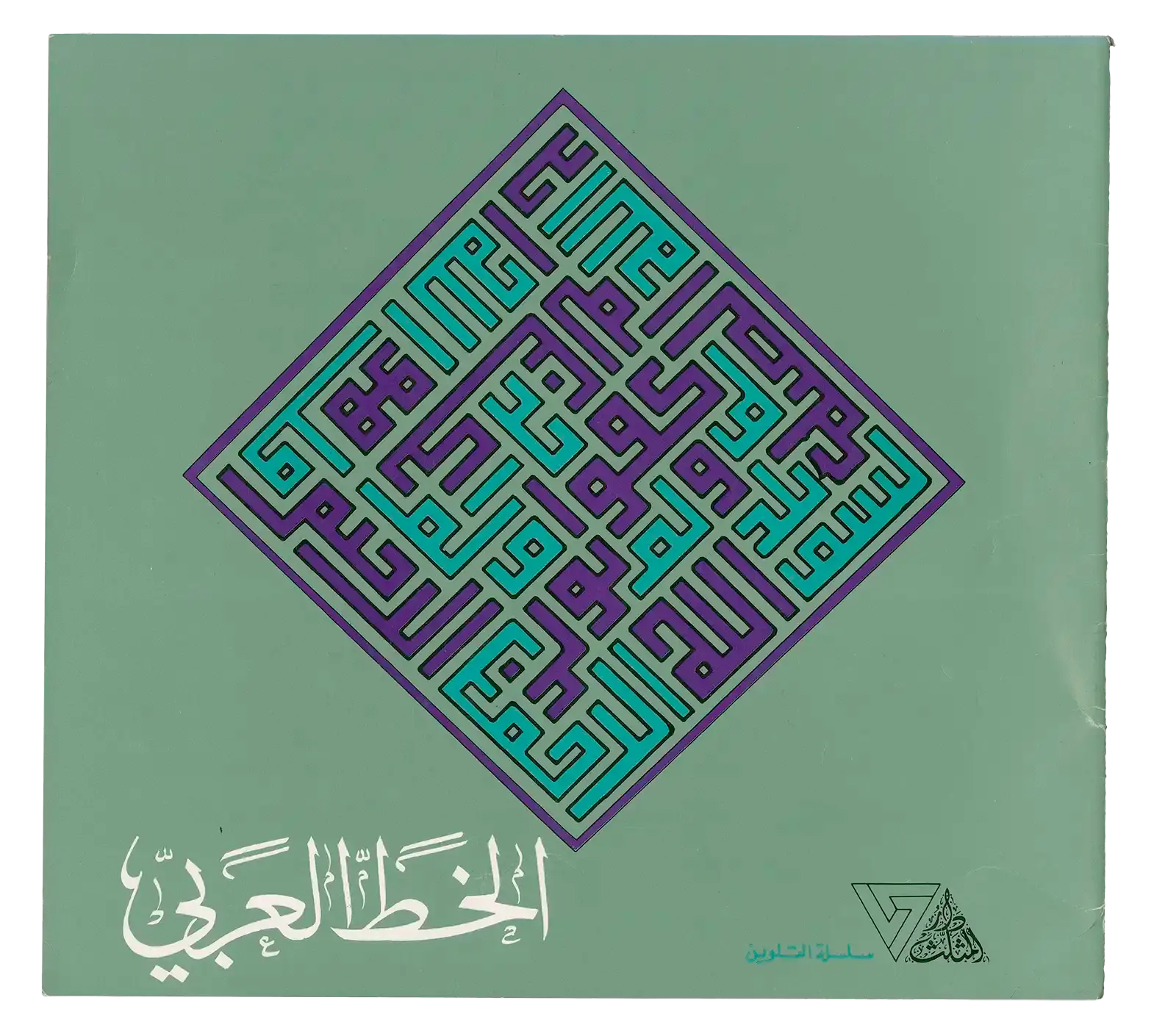
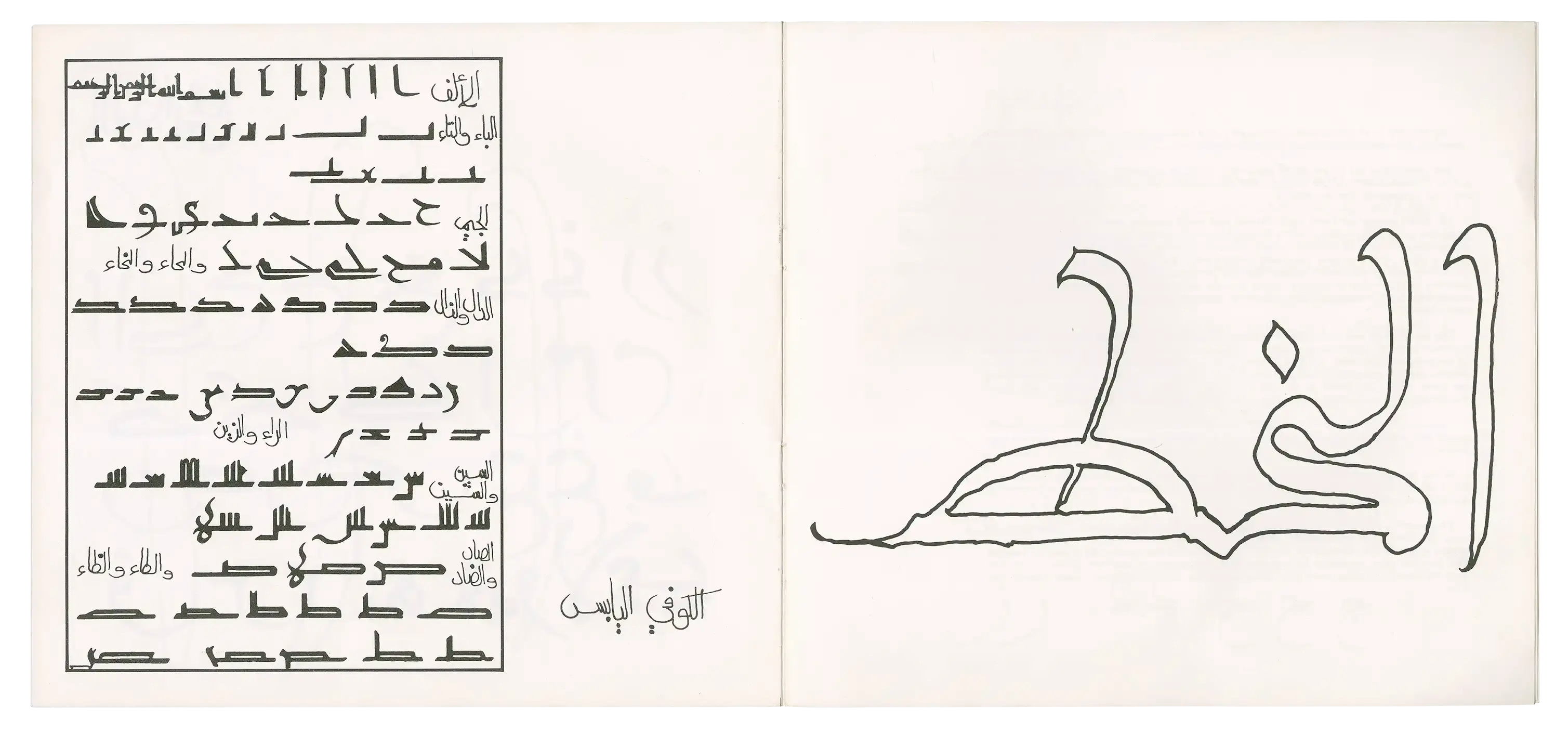

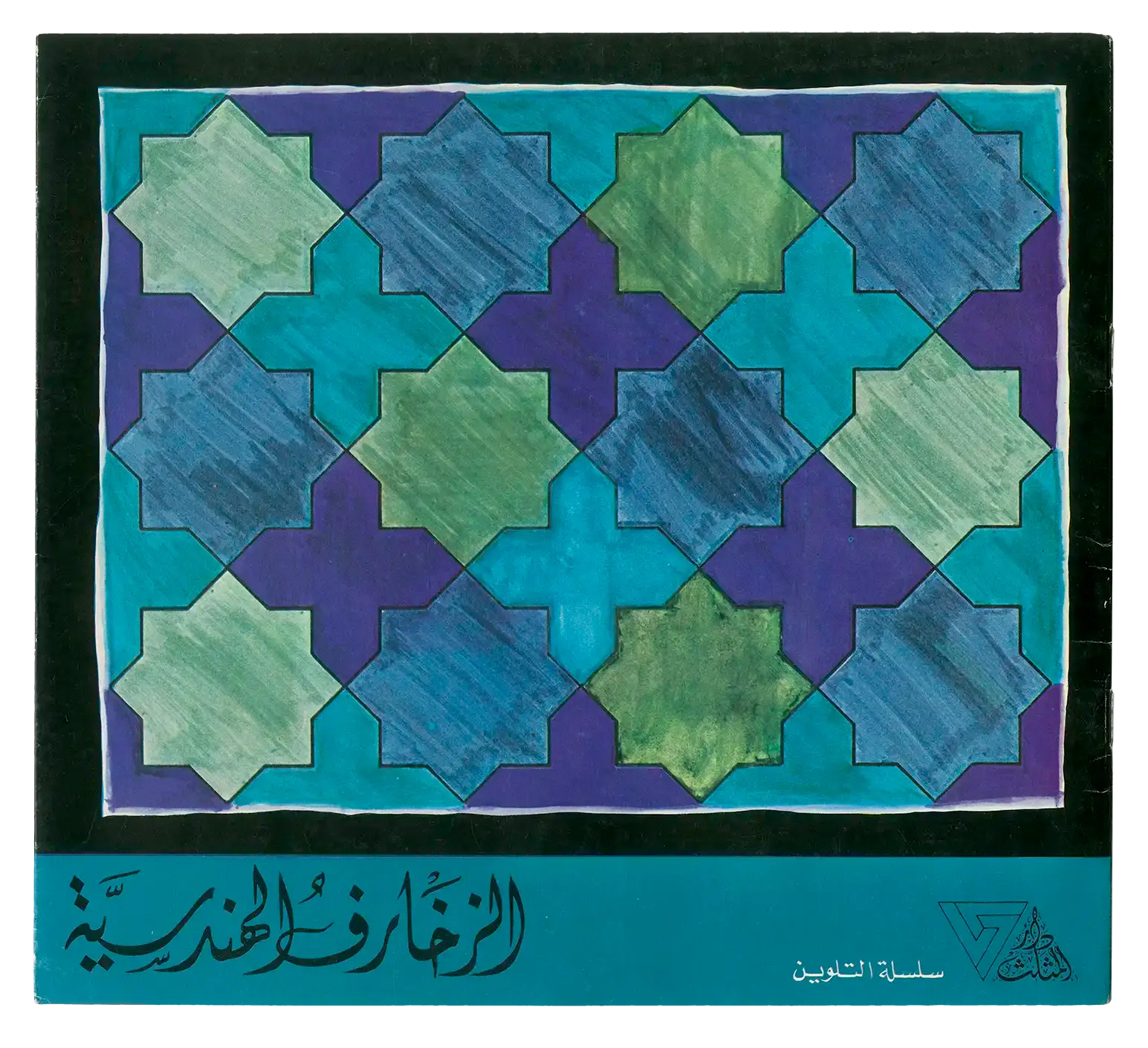
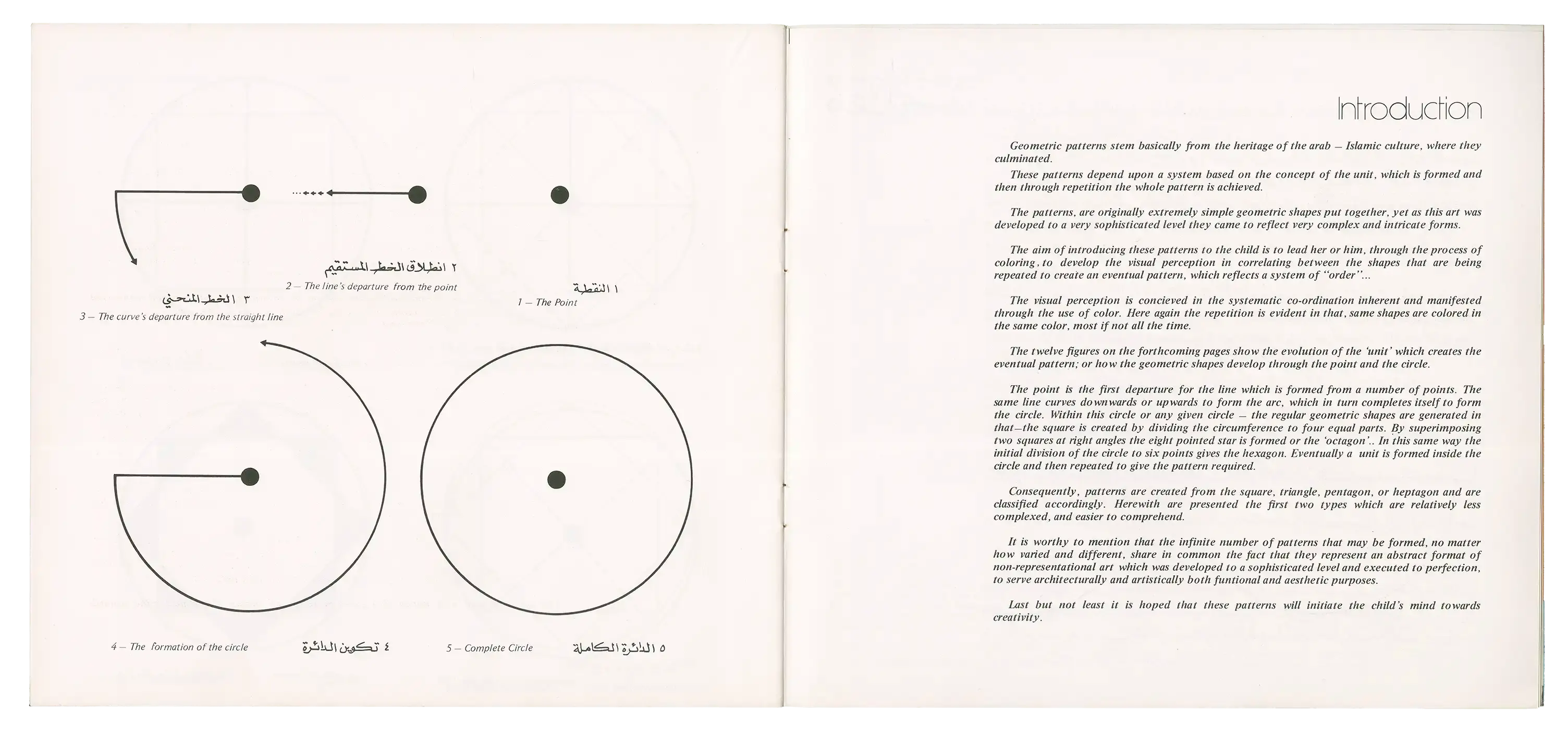
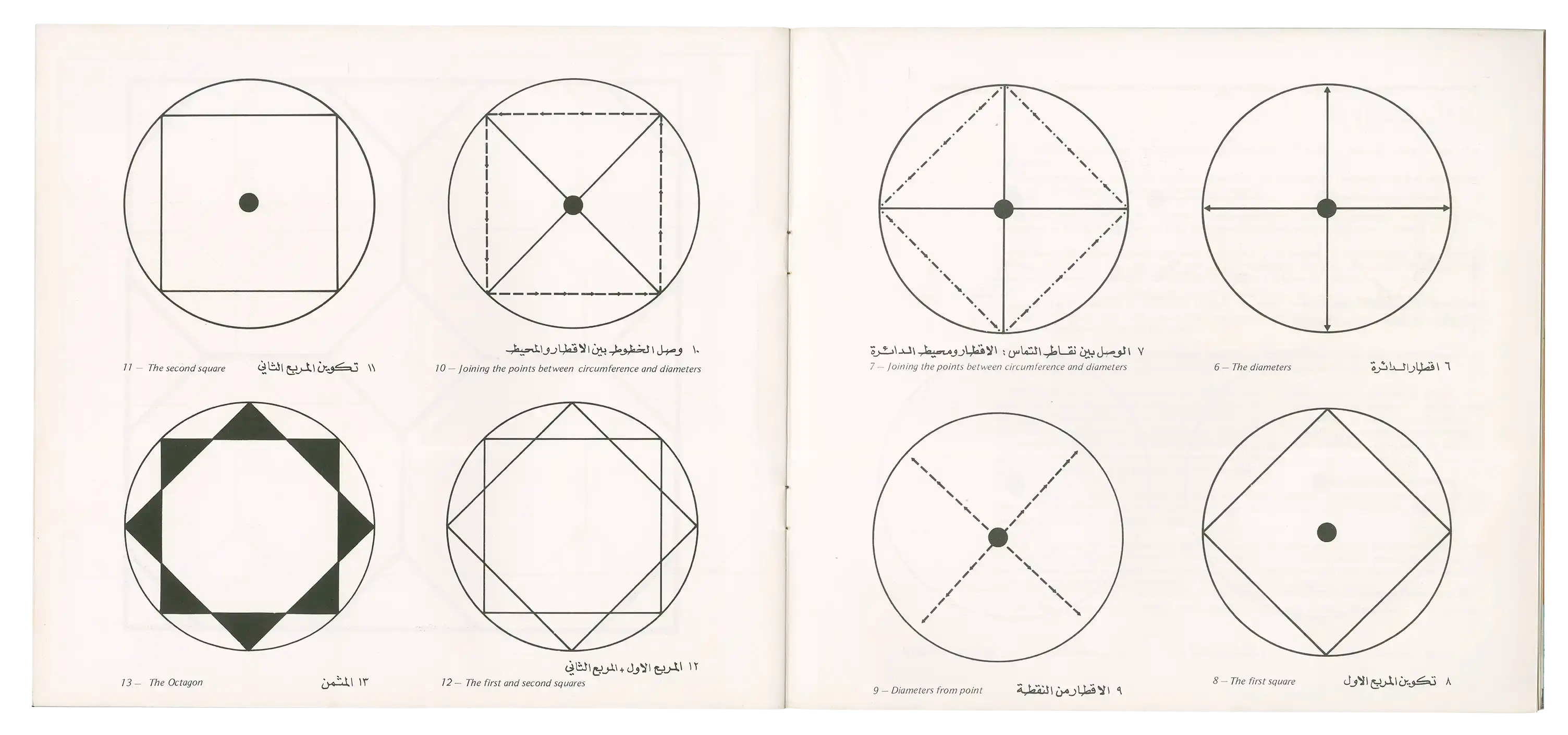
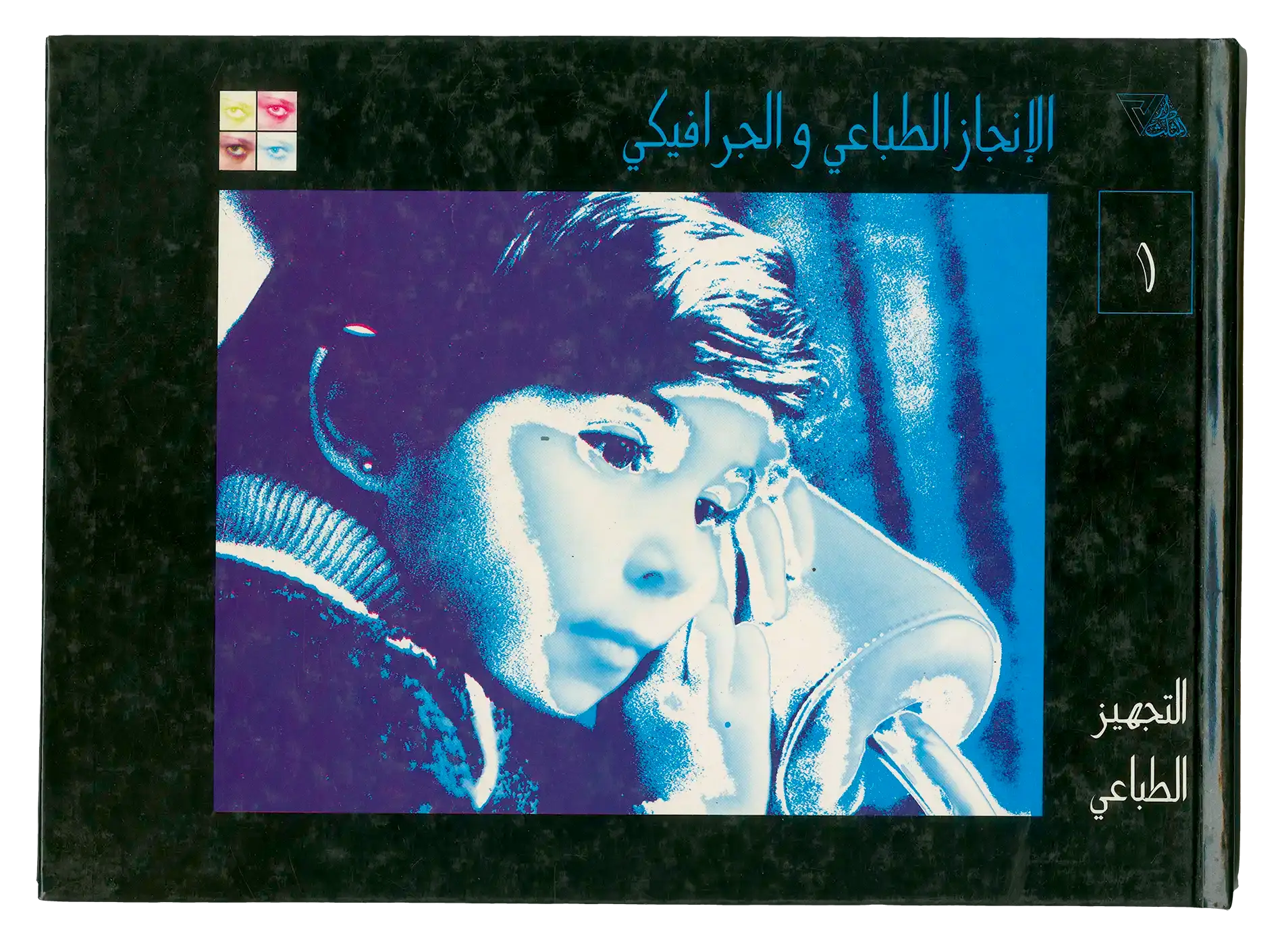
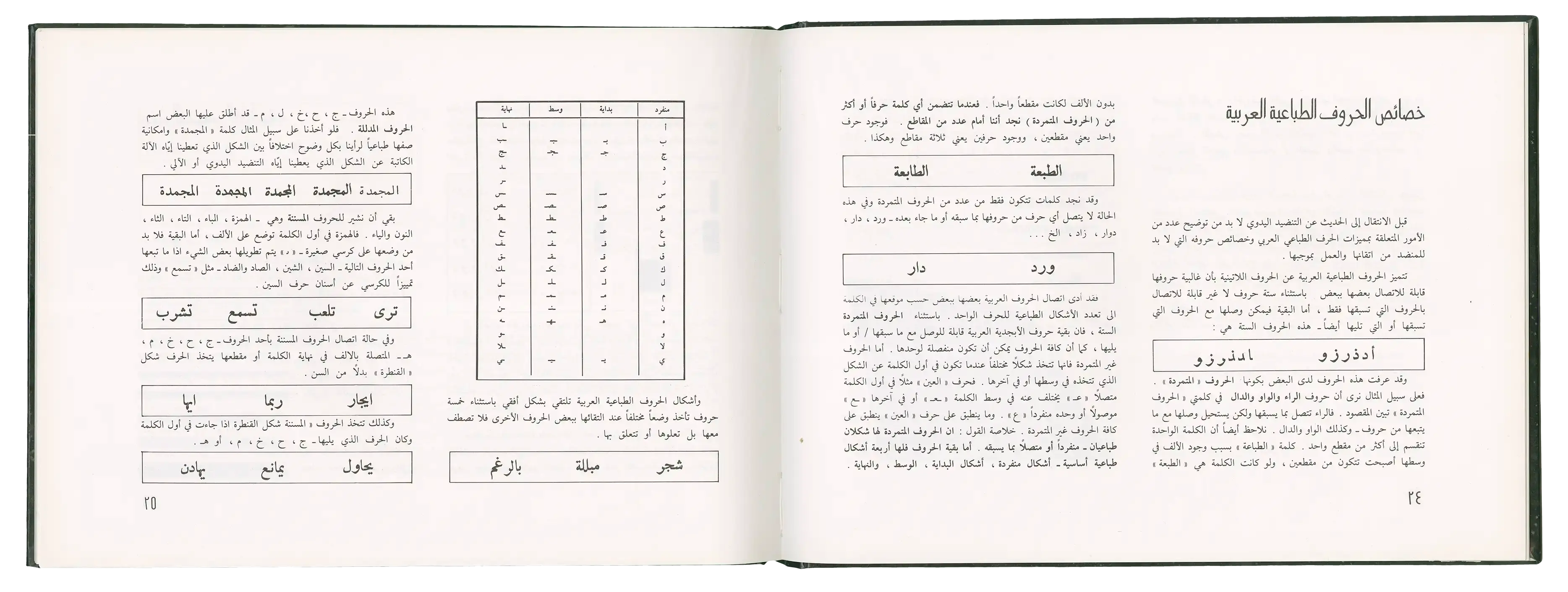
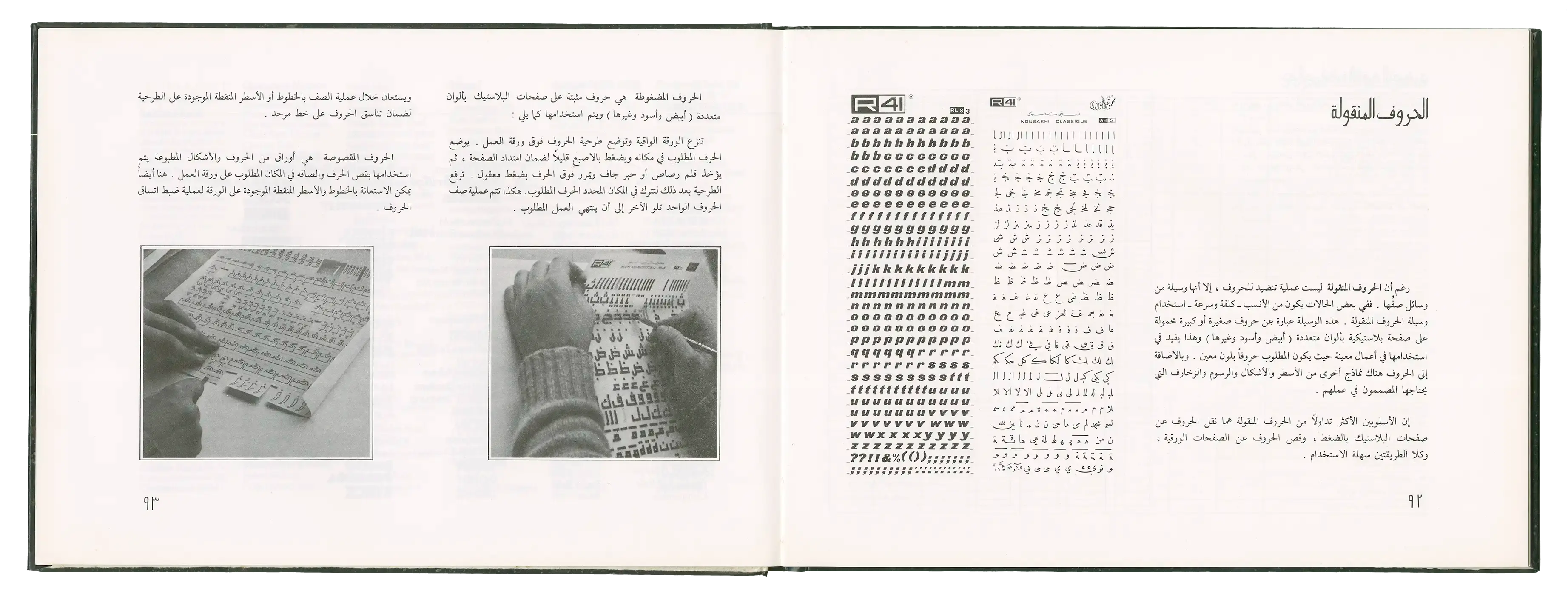


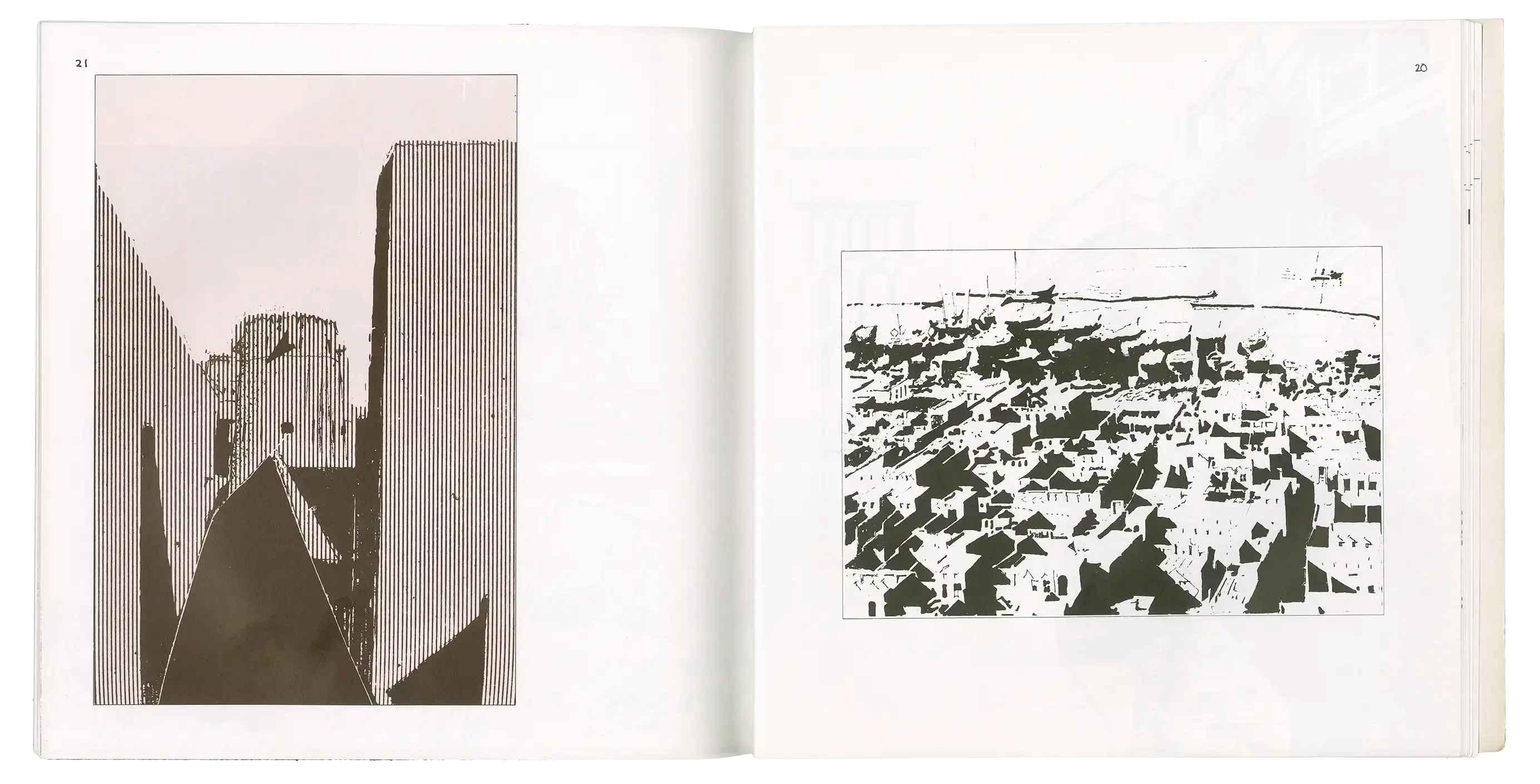
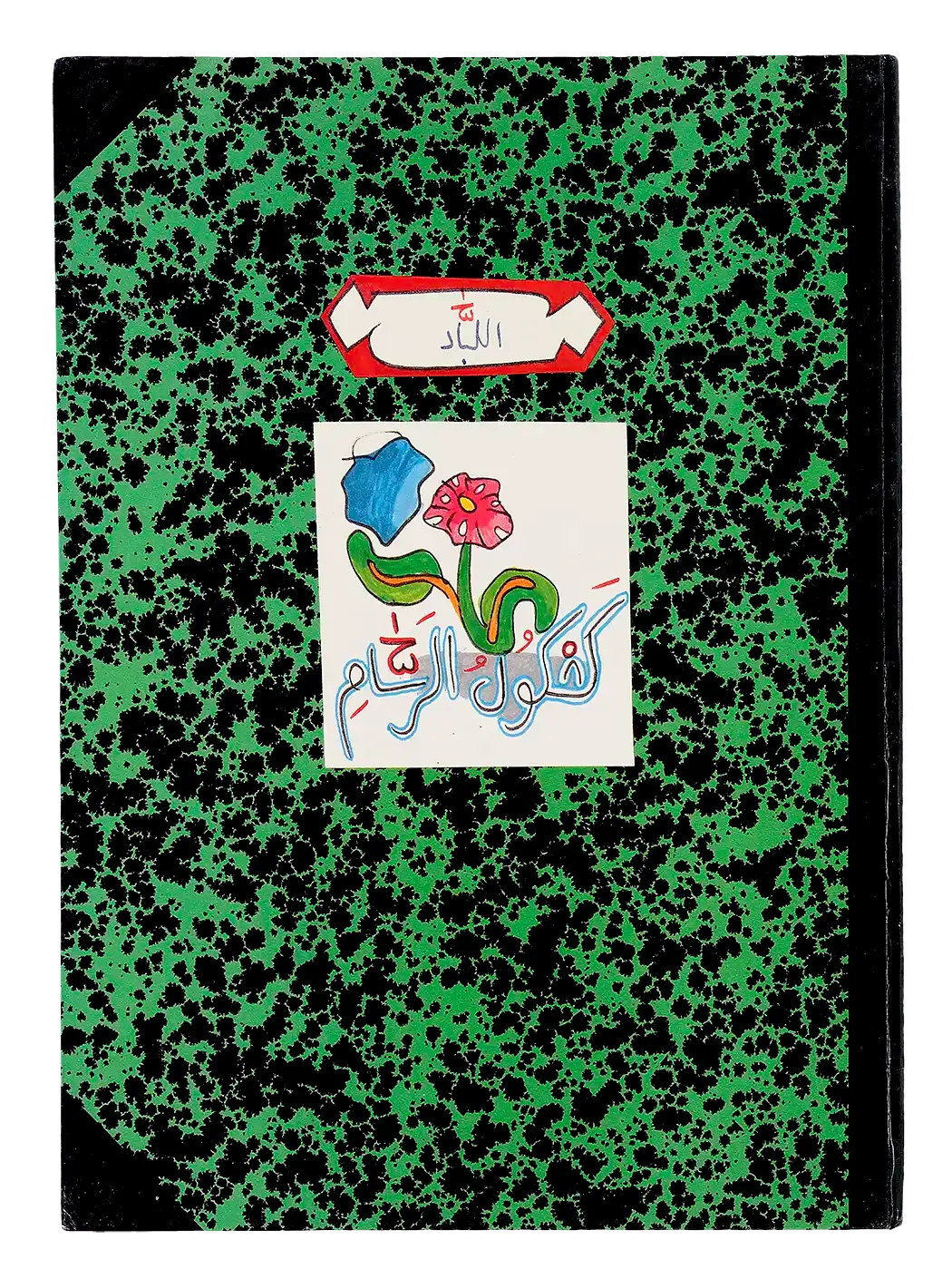
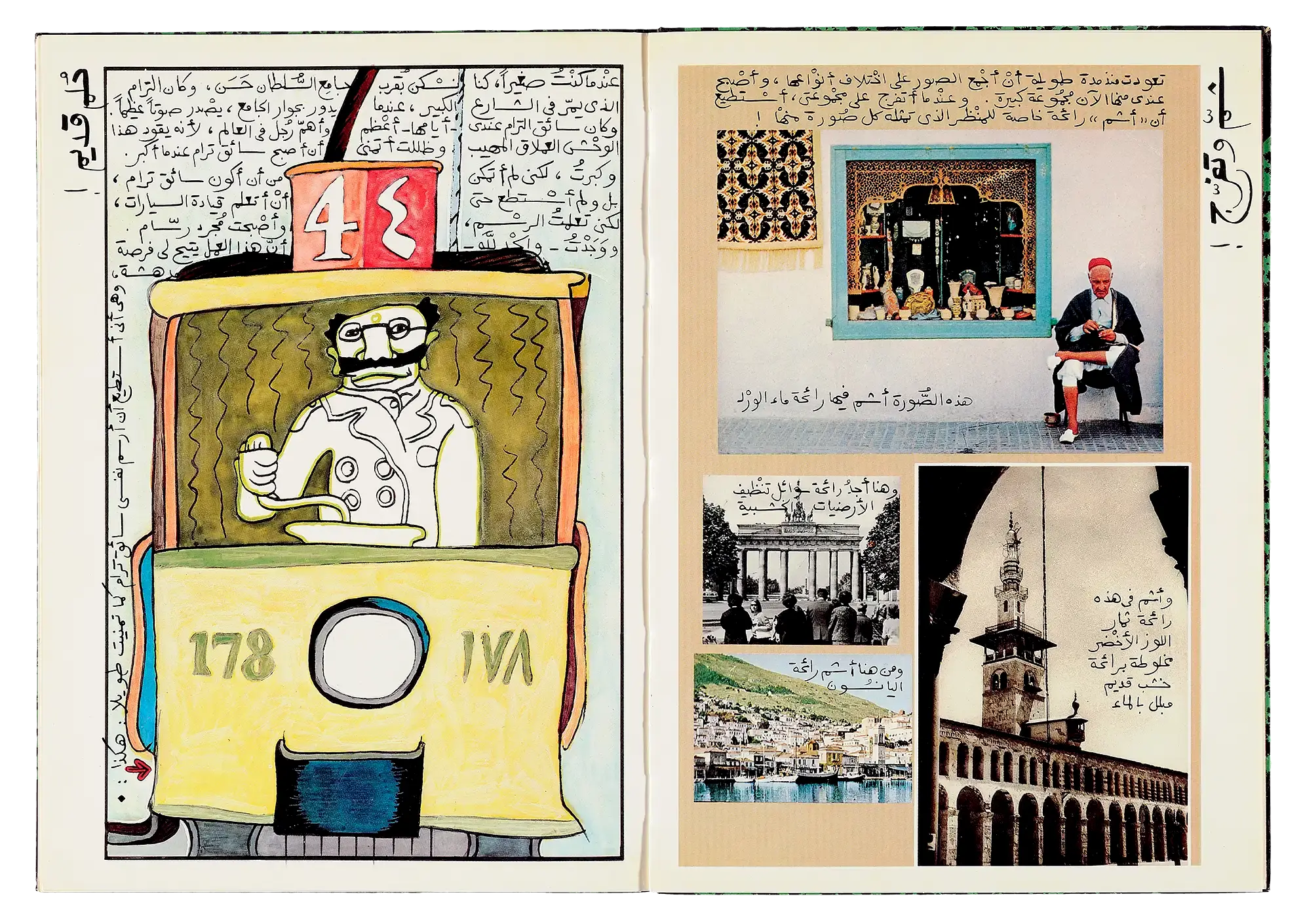
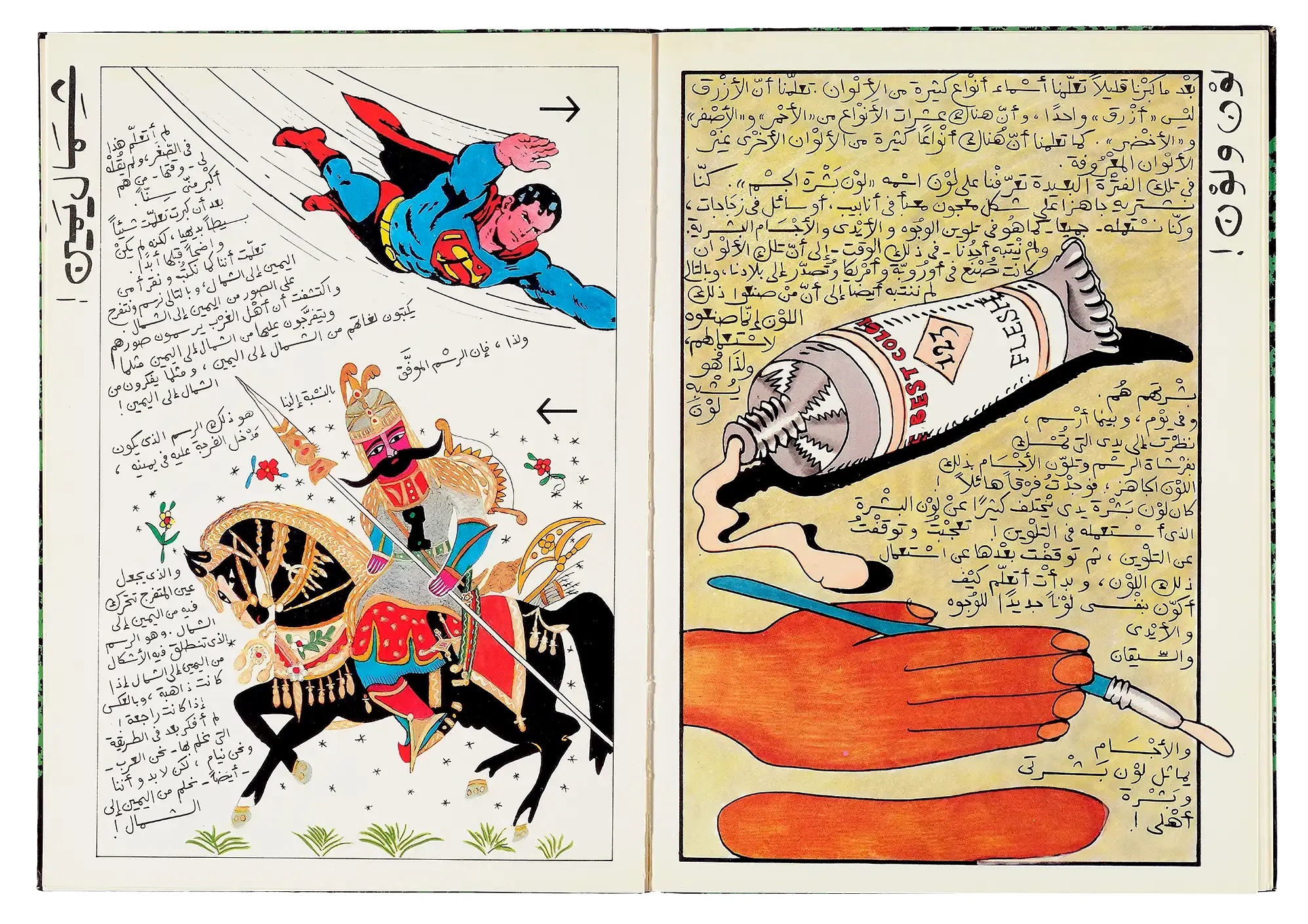
مستقبل ما بعد الاستعمار
Postcolonial Futurity
For artists, writers, and intellectuals committed to revolutionary change in the Arab world, radical pedagogy was seen as essential to building a postcolonial future. Collaborating across disciplines, they redirected their creative energies toward young readers, aiming to decolonize children’s literature in its language, knowledge, affect, and imagination.
At the same time, they sought to decentre Western frameworks of knowledge by laying the foundation for a library of books rooted in local art and design history, as well as in modern graphic design techniques and architectural practices. These books carry within their visual narratives an electrifying aesthetic of hope that is as politically urgent today as it is melancholically infused with a utopian spirit that reflects the dreams and struggles of their time.
«المستقبل للأطفال»
‘The Future is for Children’
Borrowing its title from Dar al-Fata al-Arabi’s celebrated children’s book series, The Future is for Children highlights the remarkable picture books that emerged during a period of decolonization.
Moving away from translations of Western classics, publishers began to develop children’s literature that was socially, linguistically, and aesthetically relevant to the Arab child’s modern reality. A leading example was Cairo’s Dar al-Maarif picture-book series, written by Kamel Kilani and illustrated by Hussein Bicar. Bicar spearheaded a movement toward indigenous picture books and comics for children, inspiring a generation of artists whom he trained at Cairo’s School of Fine Art.
Among them were Ihab Shaker, Mohieddine Ellabbad, and Nazir Nabaa, who pursued his efforts beyond Egypt. Ellabbad, in particular, played a formative role as art director at Dar al-Fata al-Arabi during its early years in Beirut (1974–1976). Building on that experience, he later founded the Arab Experimental Workshop for Children’s Books in Cairo, an independent platform for anti-colonial visual experimentation and transnational Arab collaboration.
In these books, a whimsical yet critical interplay between word and image introduces young readers to themes such as home, hope, social justice, freedom, and solidarity. At the same time, they offer grounded instruction in the alphabet, numbers, and colours, without shying away from difficult political questions.
إحياء التراث
Heritage Revived
For teenagers, these books offered vivid reimaginings of folk tales, the histories of Islam, and the achievements of Arab sciences, brought to life through colourful illustrations and vibrant graphic design. These modern visual interpretations invited playful engagement while giving local heritage subjects a renewed sense of relevance.
Crucially, the visual narrative of these picture books sparked creative identification and imaginative self-affirmation for Arab youth. Whether through illustrations or overall graphic design, they celebrated Arab cultural identity, literary heritage, and historical legacy, otherwise absent—if not explicitly undermined—in the dominant translations of classical European children’s literature and the prevailing colonial educational models of the time.
استعادة الفن والتصميم
Locating Art and Design
It is no surprise that this period’s dual commitment to decolonizing both art and pedagogy gave rise to educational books focused on Arab art, architecture, and graphic design. These books introduced local histories, documented contemporary practices, passed on indigenous knowledge, and developed toolkits tailored to local needs and modern technological constraints.
Notable among them are the art series published by the Iraqi Ministry of Information in the early 1970s, the publications of Dar al-Muthallath in late 1970s Beirut, and Ellabbad’s Kashkul al-Rassam (The Illustrator’s Sketchbook)—the first in a series of thoughtfully written and designed books that embody his anti-colonial aesthetic framework and commitment to future generations. Though short-lived, these initiatives produced a remarkable collection of educational books on art and design.
These books formed the foundation of a potential library, carefully crafted for aspiring artists, architects, and graphic designers. They reflect a distinctive and determined vision: the building of a progressive, postcolonial Arab future through nurturing knowledge, creativity, and cultural pride.